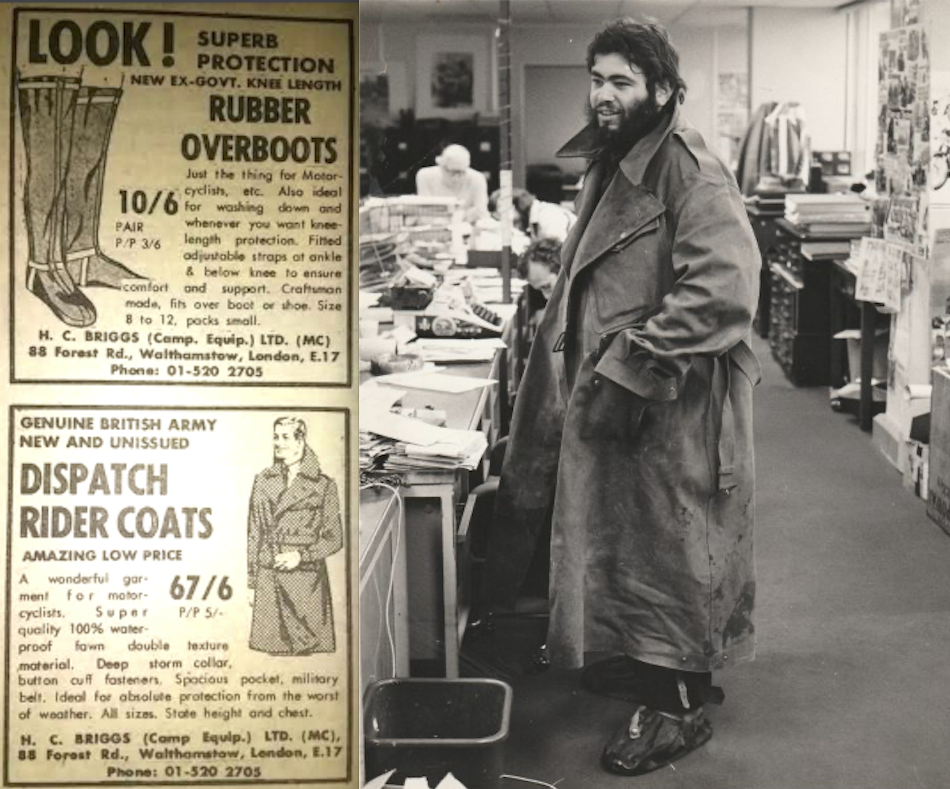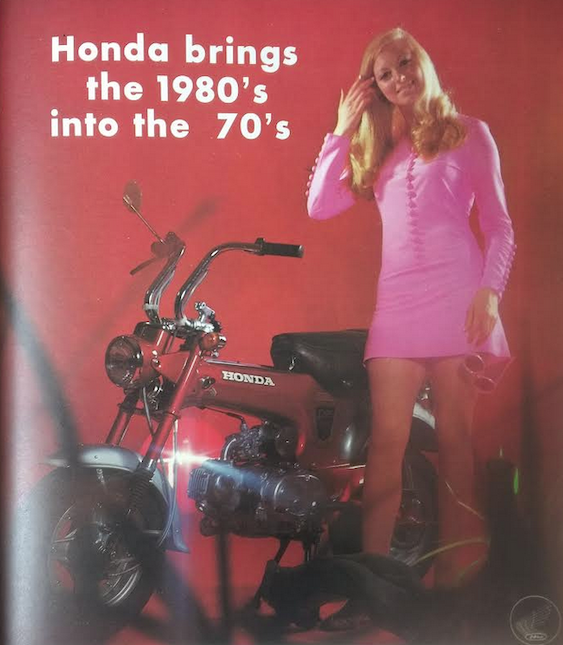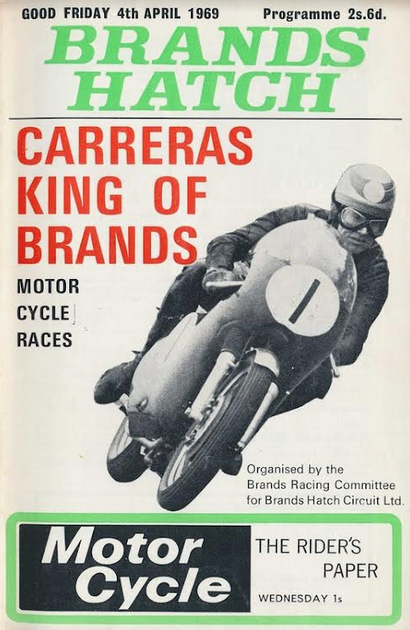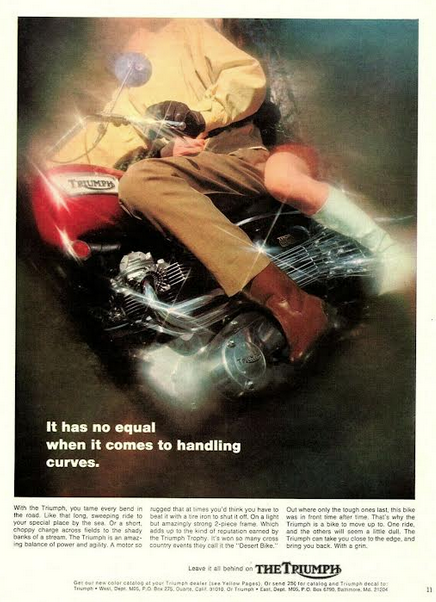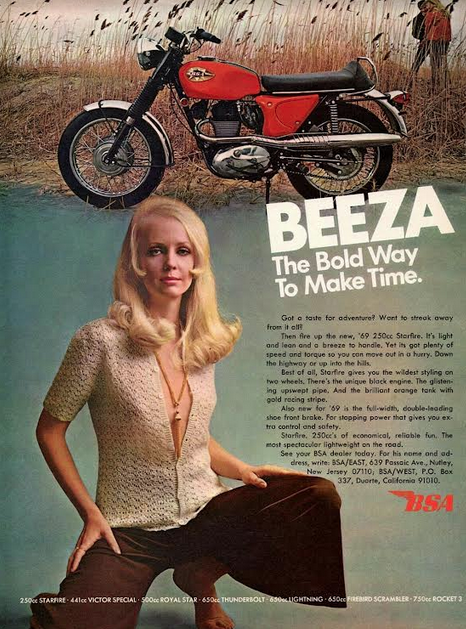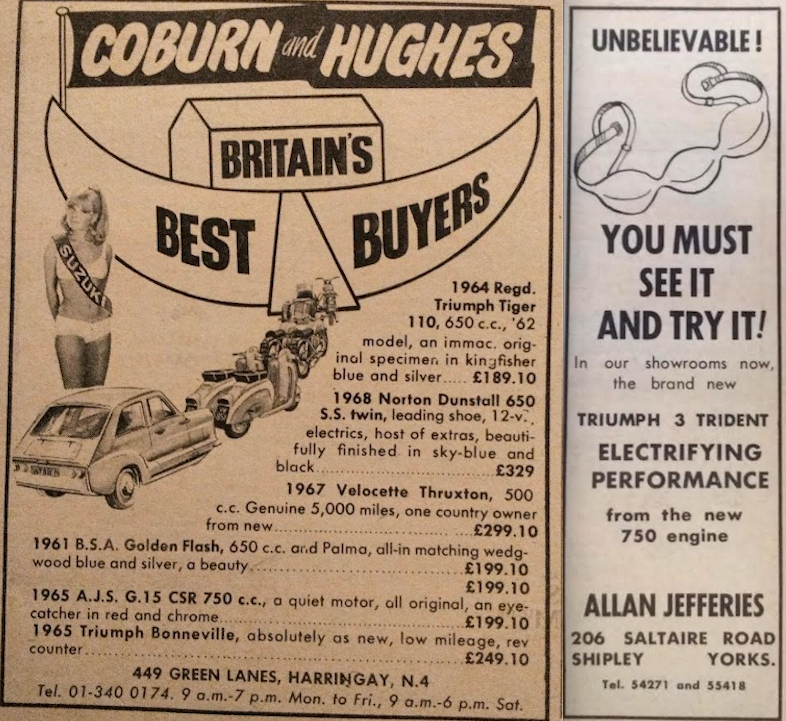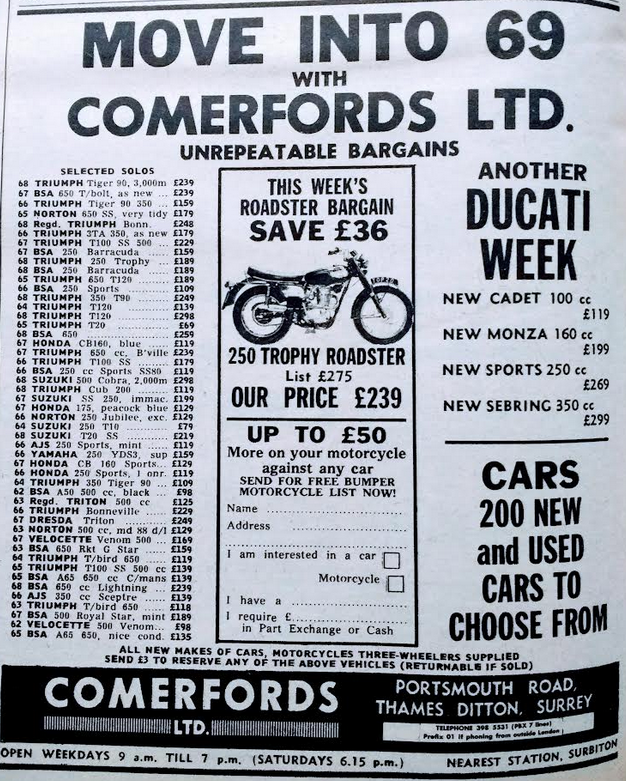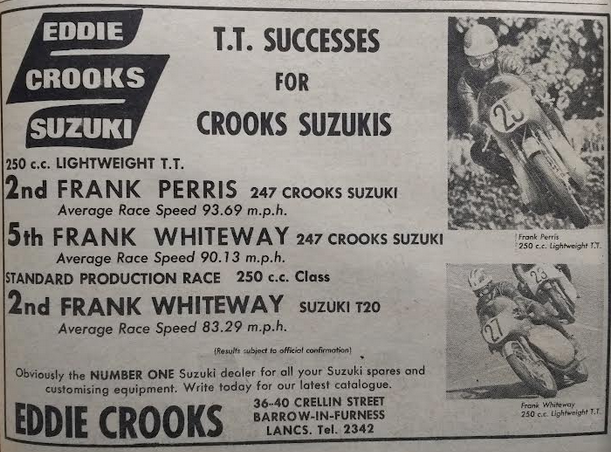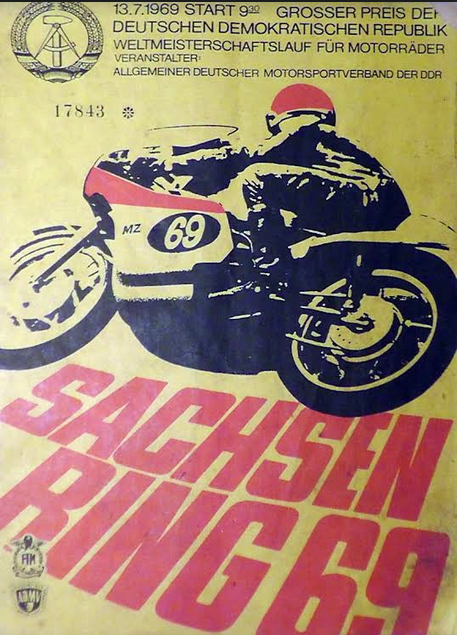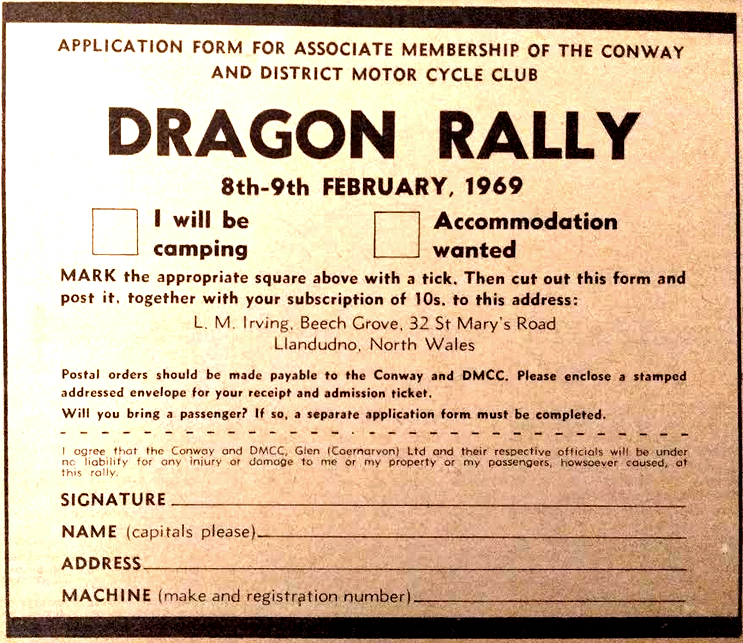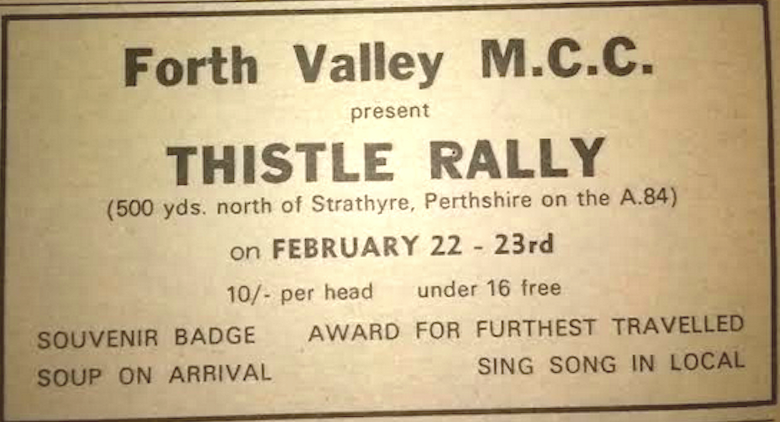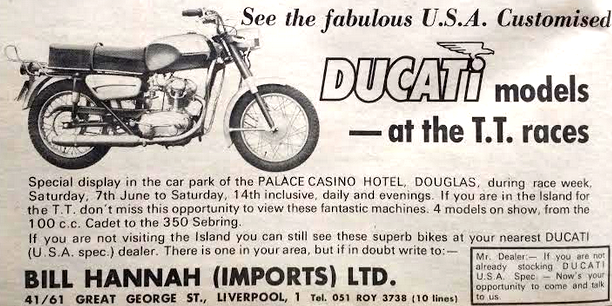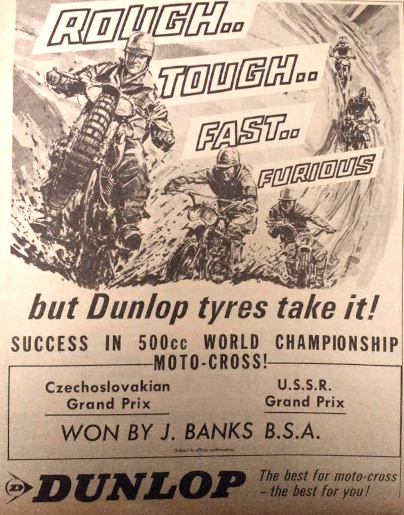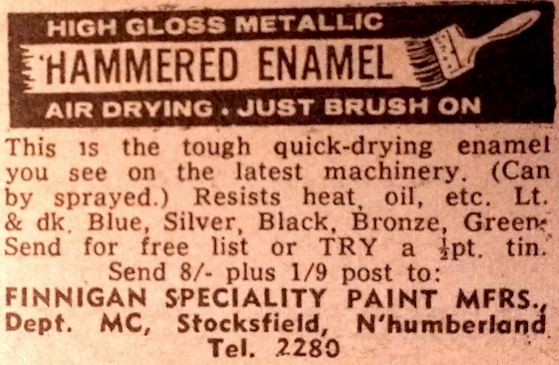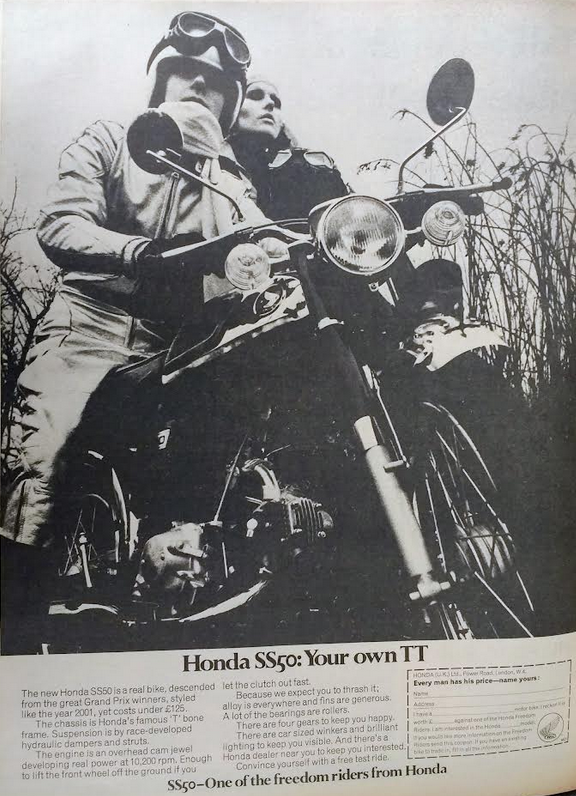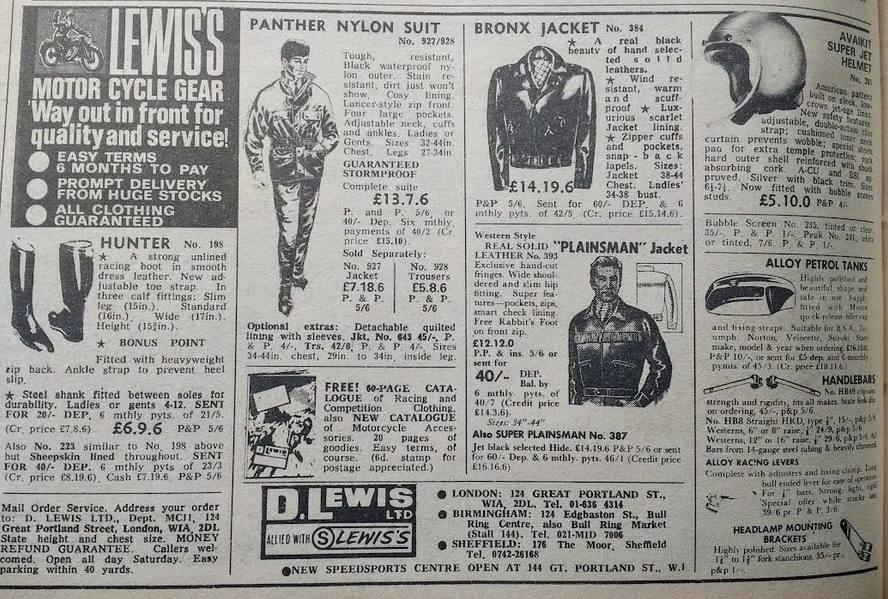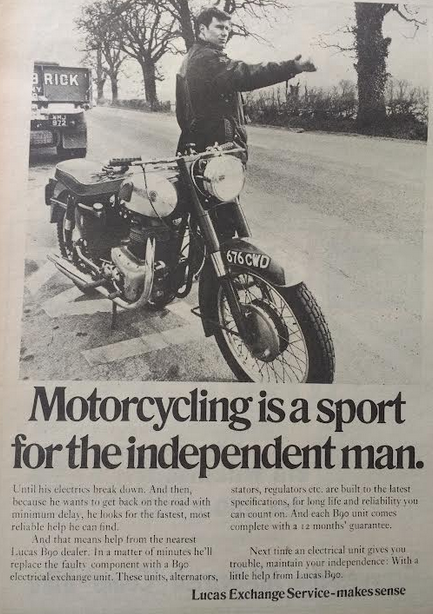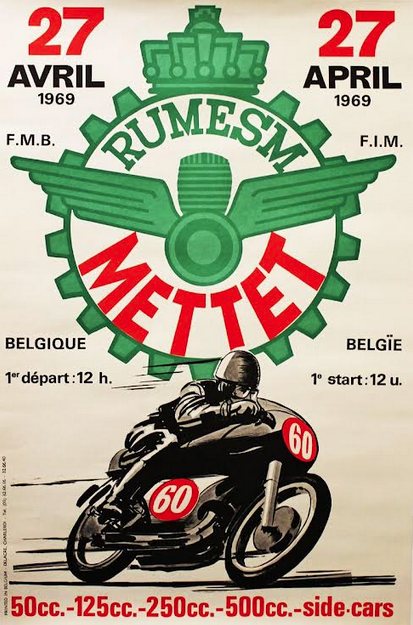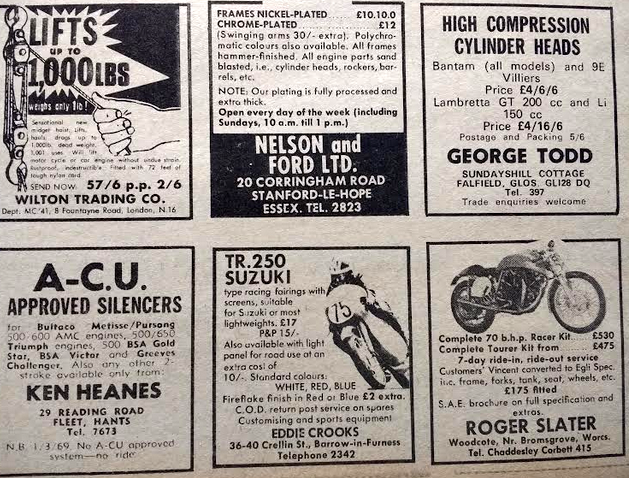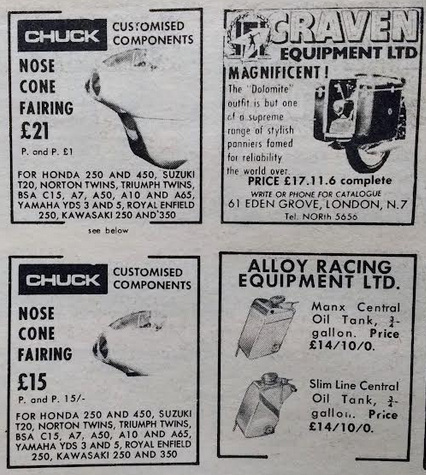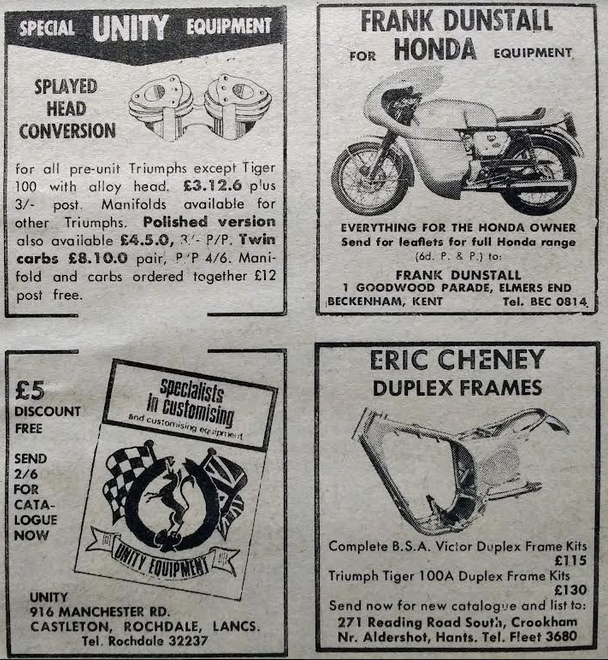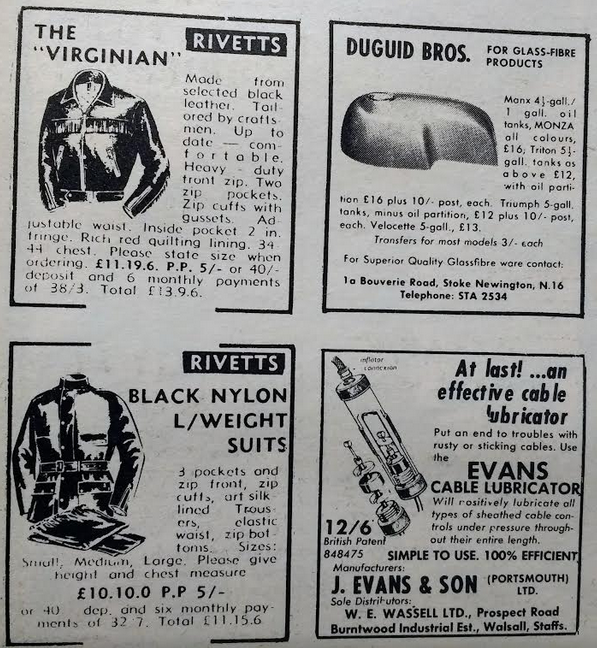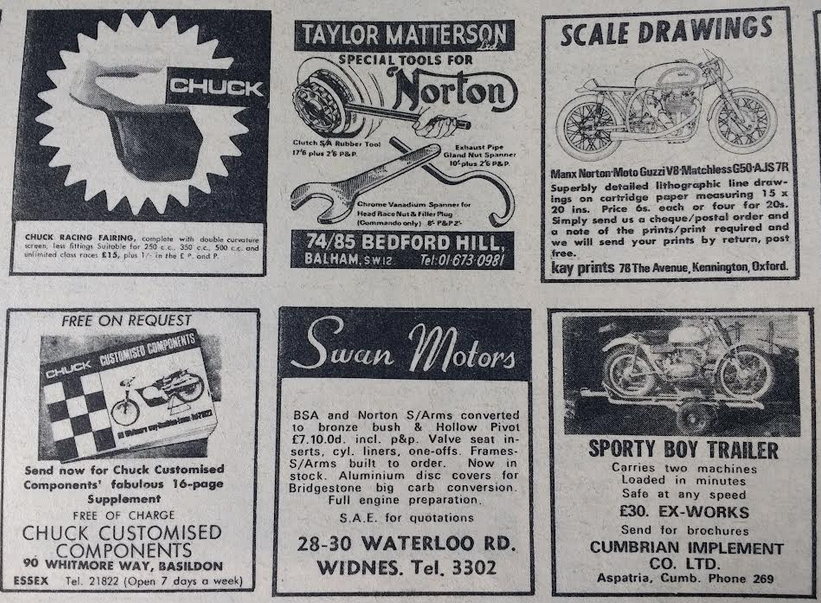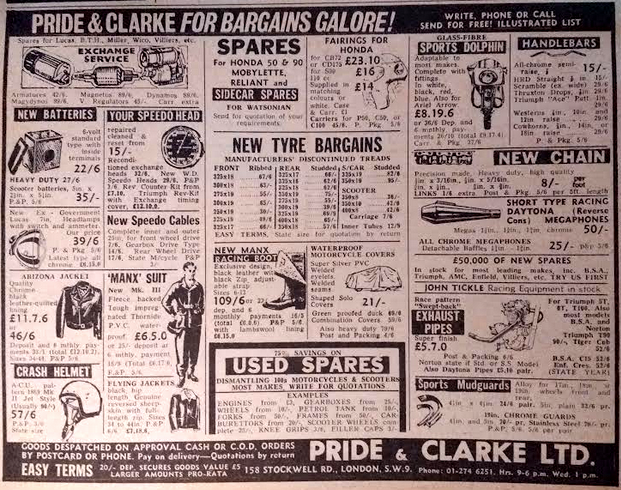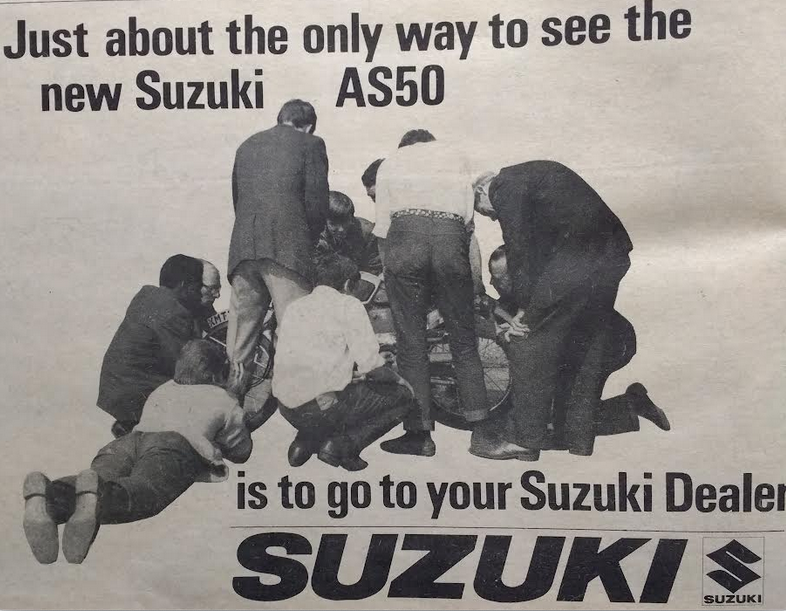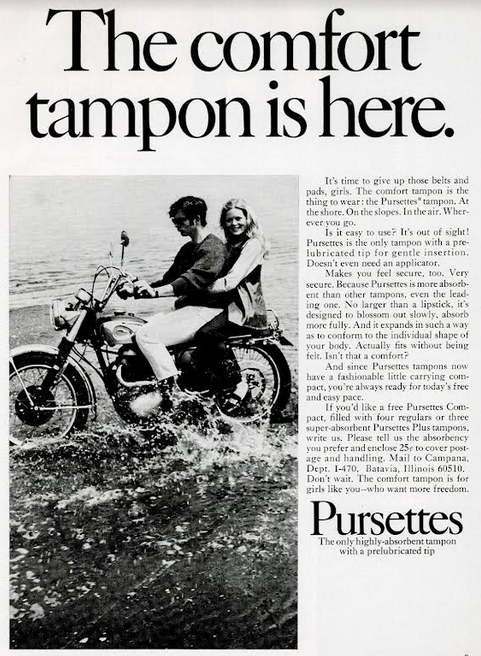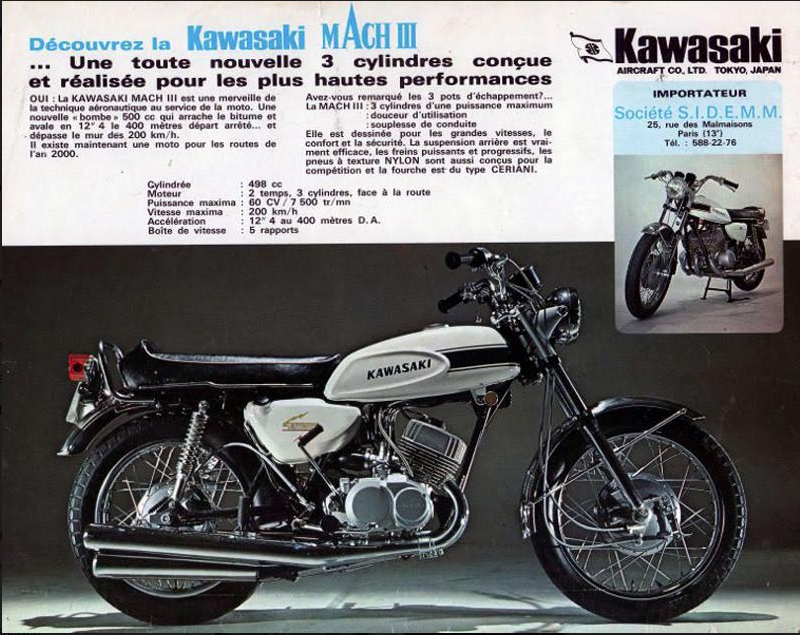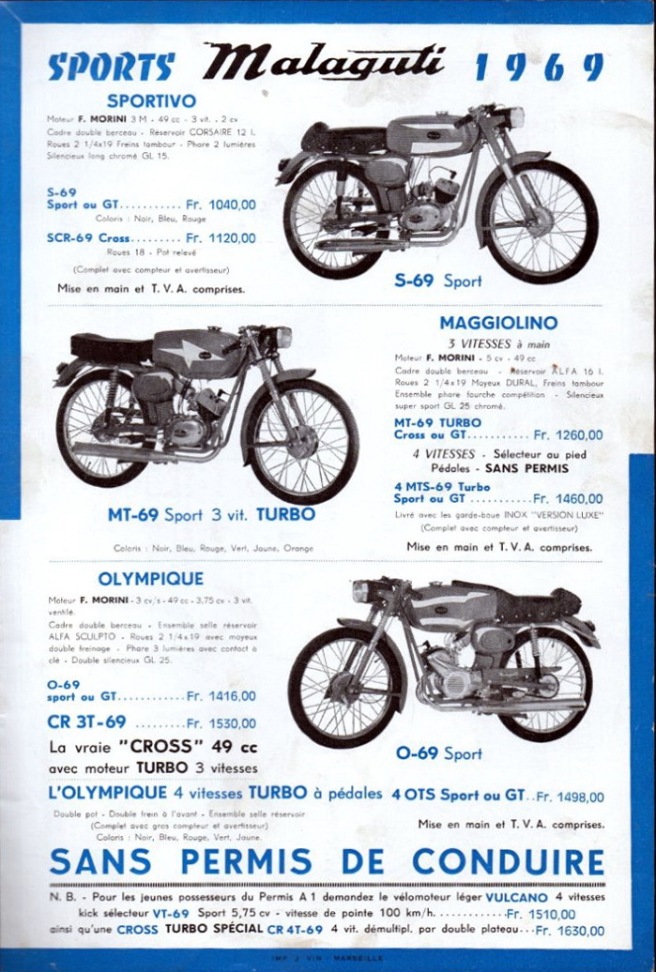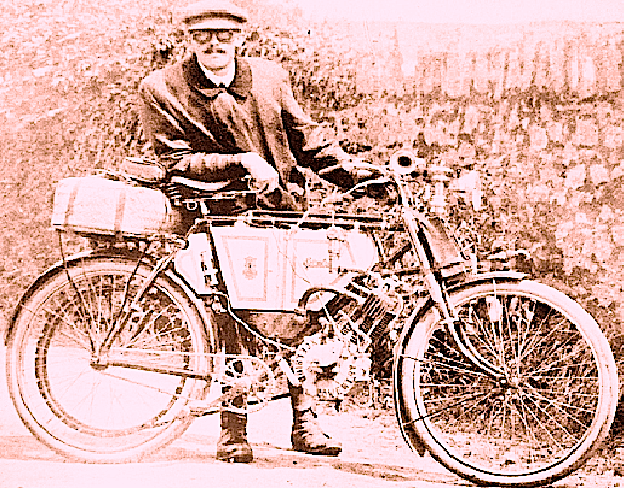Editor’s note: Quoted stories are taken from Motor Cycle unless stated otherwise. ‘Nitor’ was a well-respected columnist. Readers will also find references to editor Harry Louis, technical editor Vic Willoughby, Midlands editor Bob Currie , sports editor Mick Woollett and staff writers including John Ebbrell, David Dixon and Stuart Burroughs. As time allows I’ll include essays on them in the A-Z. They were fine journalists who, in their different ways, did a lot for motor cycling and they should not be forgotten. This was the year I took to the road, on a 1959 Villiers 2T-powered Ambasador,. It was also the year I went to my first bike show, the Racing & Sporting Motorcycle Show at the Horticultural Halls in Westminster. There I stood in my brand new Pride & Clarke leatherette flyining jacket complete with 59 Club badge secured by shiny studs, holding my Stadium Project 4 skidlid, among a crowd of older, wiser motor cyclists. We gazed up at a shiny ‘Candy Gold’ Honda CB750 as it revolved slowly, displaying its four-pot ohc lump, electric starter and disc brake. Life would never be the same again.
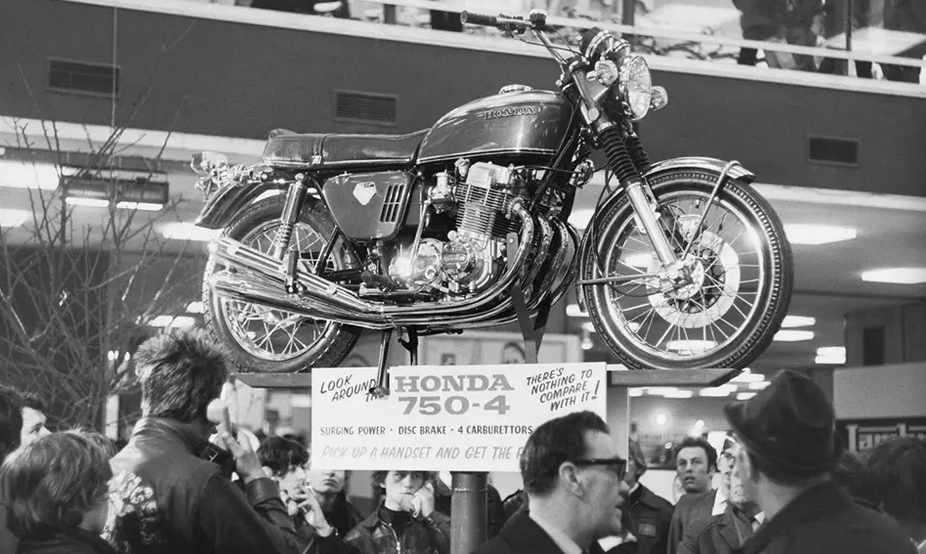
“JAPAN’S TOP CONTENDER FOR America’s booming big bike market, the new 750cc Honda four, will soon be on sale in the States. And it will cost between £100 and £150 less than the BSA and Triumph three-cylinder 750s, Britain’s main USA export challengers. The five-speed Honda four, fitted with an electric starter, was unveiled by the company’s chief, Soichiro Honda, at a dealer convention held in Las Vegas last week to mark 10 years of marketing in the States and the sale of one million Honda’s in North America.”
“HONDA’S FABULOUS FOUR—THE CB750 roadster—made its British debut in front of television cameras at Beaulieu, Hants. With it, also in England for the first time, was the 1,200cc Munch Mammut, as well as other big-capacity machines lined up for a BBC Wheelbase recording session…The 736cc Honda, with bore and stroke of 61x63mm, and compression ration of 9:1, is claimed to develop 67bhp at 8,500rpm—less power than originally rumoured…tyres are Japanese Bridgestones, 3.25x19in front, 4.00×10 rear. The Beaulieu machine was specially flown in from America…The mighty 1,200cc Mammut has a modified sohc NSU engine which, says Friedl Munch, produces 92hp at 5,800rpm…Other machines at Beaulieu were a 750cc BSA Rocket 3, a 750cc Norton Commando and a 500cc Suzuki Cobra.” A Motor Cycle columnist commented: “The recording session at Beaulieu gave a splendid opportunity to compare different approaches to accommodating a multi-cylinder engine between two wheels. Viewed side on the Honda CB750 must be one of the most beautiful motor cycles ever, taut and well-proportioned as a girl athlete. But step round to the front and the lissom maiden becomes a busty, brassy blonde. In other words, the across-the-frame straight-four engine looks a bit out of proportion…other four-cylinder configurations have their problems, such as overheating of the rear pots in a square or vee formation or a too-long wheelbase, Perhaps a good try would be a shallow-angle vee with the cylinders staggered, so each was directly exposed to the air-stream.” BTW, the ‘CB’ in CB750 stood for City Bike, which is an odd choice for the fastest (124mph) production bike in the world
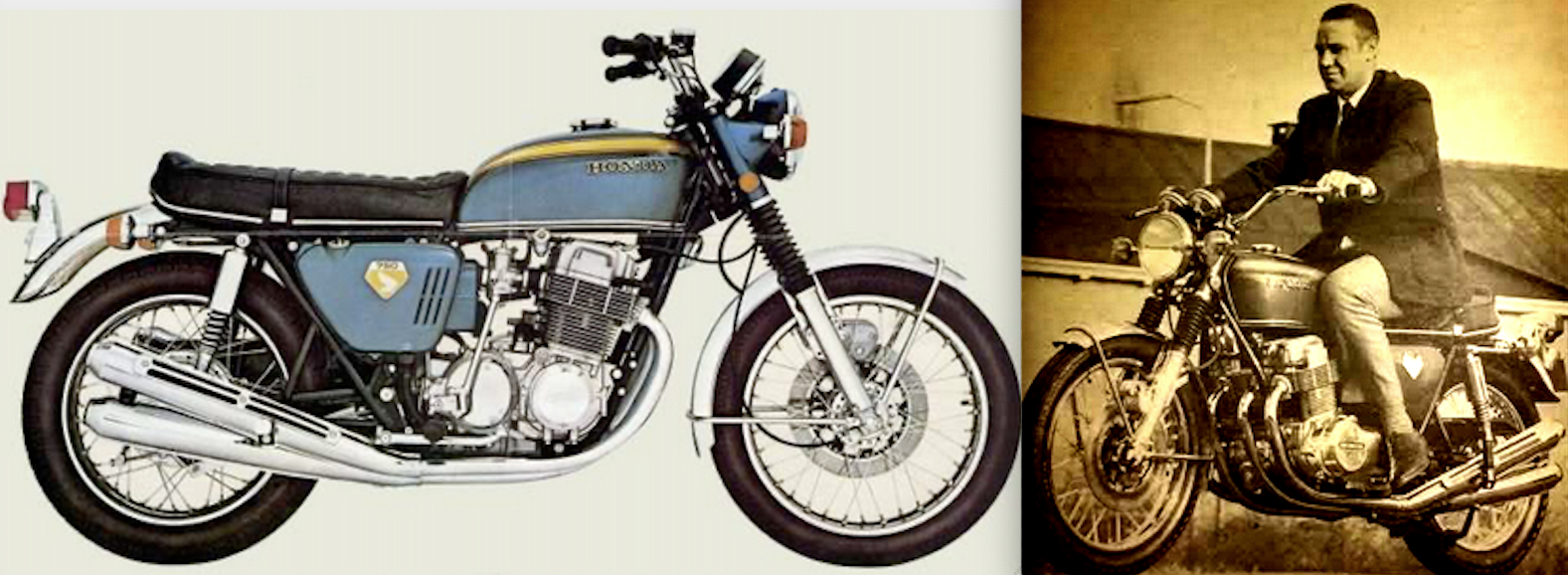
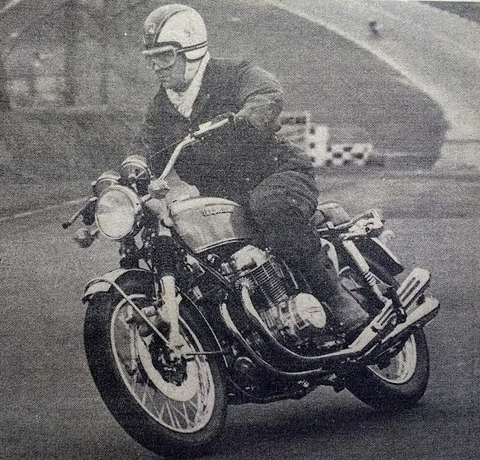
“SO MUCH SPECULATION HAS PRECEDED the arrival of the Honda CB750 that anticipation could have outstripped realisation,” wrote David Dixon. “It hasn’t. After tests in Germany I would say that, assuming production models match the demonstration job I rode, the bikes will more than live up to what we expect…A tiny electric-starter button by the twistgrip growls the 67 horses into life. A downward dab with the left foot selects bottom gear noiselessly. Experience starts. Any sense of heaviness and bulk which you may have when sitting astride the model is forgotten within the first few yards. The bike is beautifully balanced. The petrol tank is no wider than that of the average 500. Footrest width matches knee width; the reach of the handlebar gives a relaxed position and you feel, immediately, part of the machine…Docile and tractable, the engine purrs happily at 3,000rom in top gear; that is about 45mph. Tweak the grip and the pick-up is unhesitant; it is so deceptively smooth that you are forgiven for thinking it almost sluggish until the speedometer and wind pressure tell the truth. A combination of complete smoothness and effortless torque waft you up to the nineties so rapidly that only the alarming speed at which you rush up to the corners dispels the illusion. The characteristics are quite different from those of super-sports twins of the same capacity. The feeling of violent acceleration of the twins is absent though the rate of acceleration of the four is even swifter. Moreover, the four is still galloping upward after the twins have run out of breath. For instance, at 105mph the Honda is still accelerating ‘with the
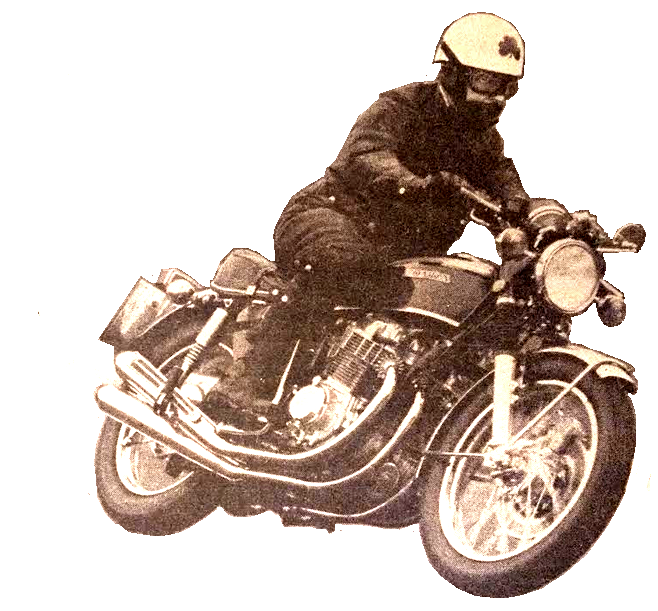
rider sitting bolt upright’, where most other big roadsters I have ridden responded above this speed only when I tucked in as much as possible…On a standing start a good 650 twin would probably lead for the initial 100 yards. But then the CB750 would overcome its higher weight (around 60lb) and as the xtra horses got into full gallop, the twin would be overhauled. The terminal speed of 101mph at the end of the quarter-mile is among the highest recorded by Motor Cycle. To achieve this, I found it best to drop the clutch lever around 7,000rpm and spin off. The longest unbroken black mark stretched for about 15ft before the rear tyre bit…With the full 14.2-mile Nurburgring grand-prix circuit at my disposal, I did not spend too much time exploiting the docile half of the bike’s character. The lure of the famous lap beckoned and it was here that the Honda bared its racing background. Screwing the twistgrip until the revs soared to the 8,500 limit in each gear, I enjoyed some of the most exhilarating miles I have ever known. The Nurburgring might have been designed by a demented snake charmer. It has a bewildering assortment of corners and the intervening straights have switchbacks with blind crests, over the final brow of which the road may switch right or left. One of the fastest sections is downhill with flat-out right-left-right-left swoops between pine trees…Acceleration, roadholding and braking were stressed to the limit…Tucking in as best I could in a Barbour suit, foiled to some extent by the high-level handlebar, I let the revs soar into the red at 8,600rpm before notching top. On a slight depression the needle moved swiftly to 8,000rpm—equivalent to 118mph—before dropping back to a steady 7,800rpm (116mph)…lower drag might have given a speed over the 125mph mark. With a sports fairing probably another 10mph…All this was achieved without any trace of mechanical fuss and with the minimum of exhaust noise…For a machine of its bulk the Honda handled well. Occasionally I entered corners faster than I should have done and had to keep the brakes on. Extra effort was then required to lay the model over and this caused some tail-wagging. But normally cornering was extremely steady, with the model leeching to whatever line I chose…The single-disc front brake, though not as potent as other disc types I have tried, was smoother than usual with a twin-leading-shoe drum brake. And the sensitivity of the hydraulic action was reassuring on the dodgy surfaces…the Honda four ranks as one of the most outstanding machines I have ever ridden. The more I rode it, the more it grew on me.”
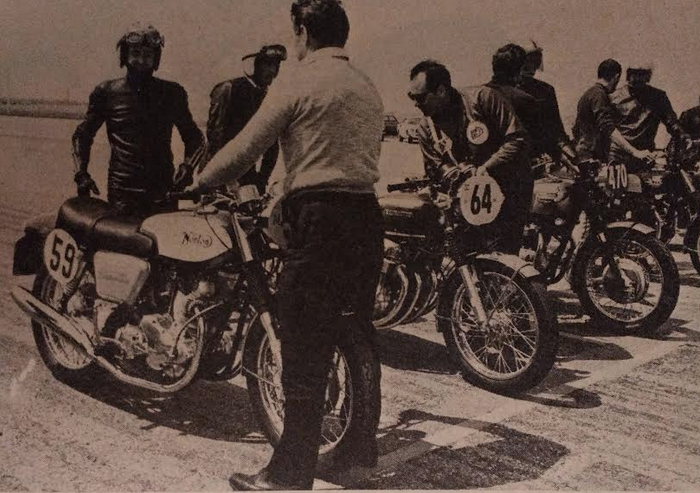
AN ITALIAN FILM COMPANY wanted Giacomo Agostini to star in a major movie. Ago agreed—provided filming could be scheduled to work round his racing commitments. Mile Hailwood remarked: “I don’t know why he doesn’t take up acting with his looks. He’d make more money and I’d have nothing to worry about!” Soon after, Hailwood retired from motor cycle racing to concentrate on four-wheelers (though he would race on the Island again). In an extensive eulogy Motor Cycle said: “Nine world championships; a dozen TT wins; countless other victories plus lap and race records on practically every major motor-cycling circuit in the world—the statistics alone stamp the hallmark of greatness on Mike Hailwood. But, it was the way in which those statistics were piled up, above all the phenomenally few short seasons it took him that made Mike a living legend: probably the greatest racing motor cyclist of all time.”
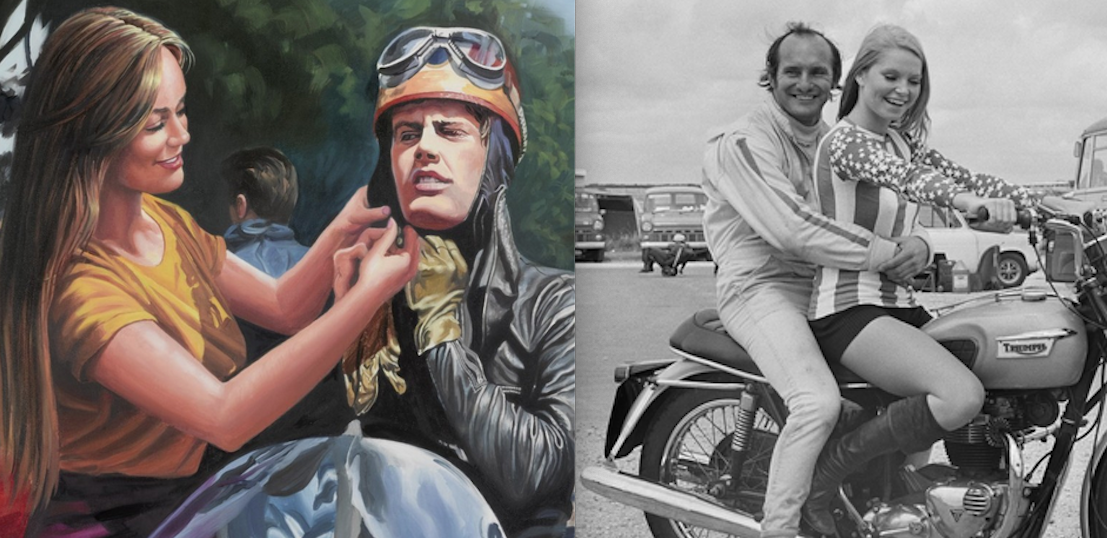
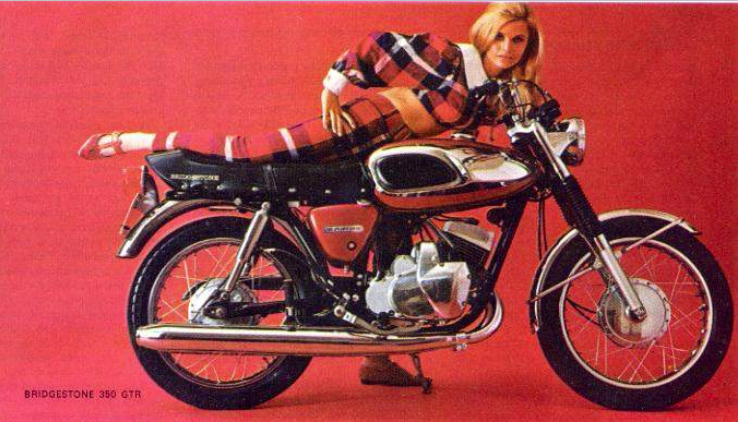
YAMAHA STARTED THE YEAR by quitting the road-racing world championship, despite dominating the 125 and 250cc classes in 1968 with in-line fours. However, Phil Read and Phil Ivy were offered 250 and 350cc twins for production racing.
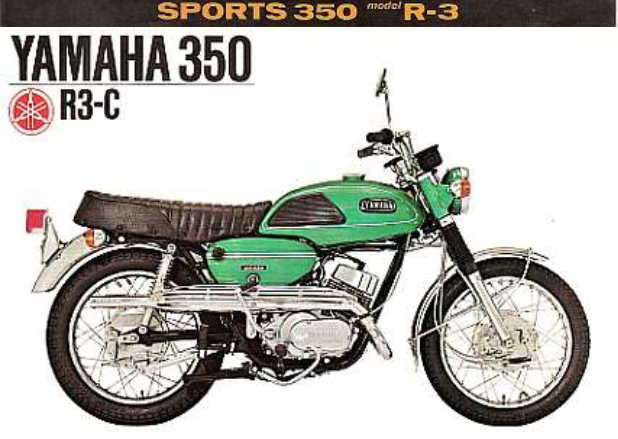
KAWASAKI LAUNCHED A POTENT 500cc two-stroke triple and entered the Daytona 200 with a Brit, Dave Simmonds, in the saddle (he went on to ride a 125cc Kawasaki to first place in the Lighgtweight TT). The first examples to reach Europe were put through their paces on the Zandvoort circuit courtesy of Dutch importer Henk Vink, who used one in the first sprint of the Dutch season. He won the stock machine class (400m standing start) in 13.48sec/104.82mph. Motor Cycle noted: “The exhaust note on full throttle is reported to be like that a a racing four-cylinder Yamaha.” Even in the open class only two bikes were kwika than the Kwaka: a 998cc JAP (12.08sec) and a 650cc Triumph (12.91sec).

A ROADTEST OF THE BSA A65L Lightning recorded a two-way mean top speed of 104mph and a one-way top speed of 112mph “with a strong following wind”. The Lightning was described as “the most potent model for home buyers”, Rocket 3s being export only. “Big bike fans may feel they are deprived by the absence of the Rocket 3 from the British market…but the Lightning in its 1969 guise is a first-rate substitute and, for British roads on which the full performance of the three can rarely be used, could be a better proposition.”
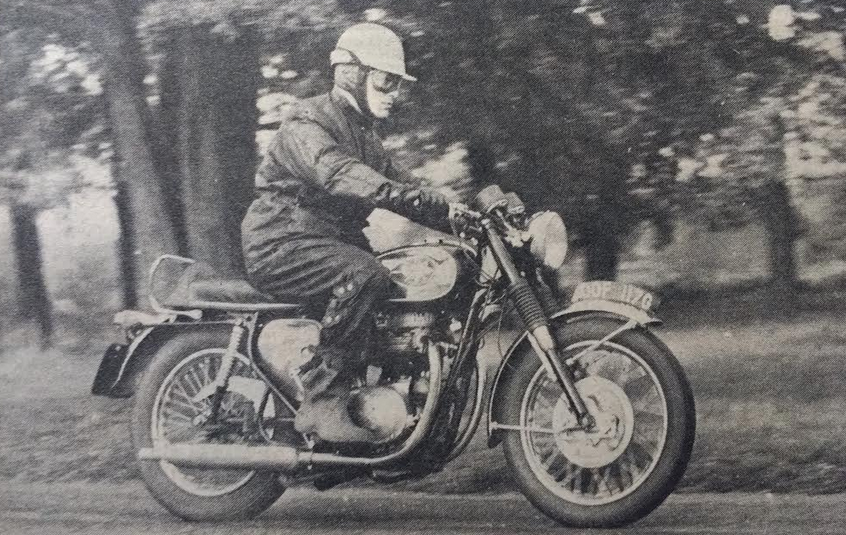
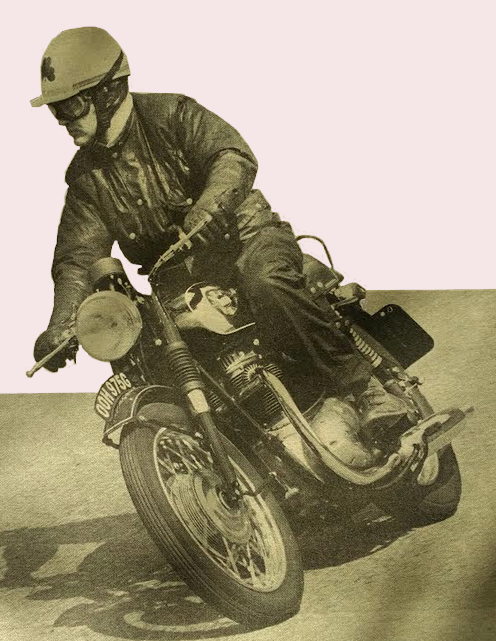
RIDERS HEADING TO THE DRAGON Rally were offered free overnight accommodation by the Double Zero Club in Coventry. Snow was forecast; promised entertainments at the site included a torchlit parade (a la Elefantentreffen), bonfire sing-song and a “beat-group performance”. John Ebbrell, Motor Cycle’s man on the spot, reported: A 59 club party, on the way to the Dragon Rally on Friday, had stopped at Watford Gap after a brisk run up the M1. “We’ve come some 80 miles, one-third of the way, said Father Graham Hullett. “And it looks like being the best third,” retorted Jacquie Blendell as the first flakes of snow came flurrying down the motorway. How right she was. All three days pf the Dragon were reminiscent of Napoleon’s retreat from Moscow. On Friday, slushy sleet became a raging blizzard; main roads were soon blocked with slithering lorries. Many baffled rallyists sought relief at the Double Zero Club, whose young members did sterling work running an all-night buffet. Those who made a start early on Saturday morning were lucky, particularly if they were from the West Country. Tudor Rees of Bristol, a Harley sidecar driver, left home at 5am, crossed the Severn Bridge and encountered little serious snow until Shrewsbury. Norton Villiers teamsters John McDermott (Commando) and John Wood (Mercury) made the 250-mile journey from London in 12 hours flat. However, Saturday did bring mini-blizzards of astonishing ferocity. The Llanberis Pass was officially closed to traffic when Jean-Marie Debonneville reached Pen-y-Gwryd with his BMW-VW special at 1am. But this lion-hearted Frenchman recruited a
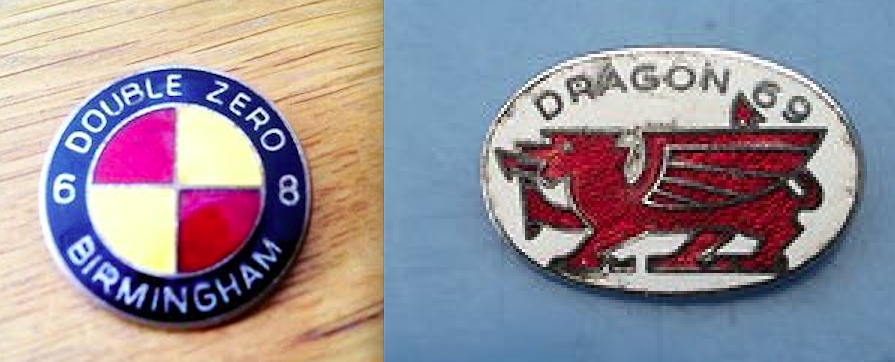
group of like-minded sidecarrists and together they heaved each other’s outfits to the summit. “It took us four hours to make 12 kilometres,” exulted Jean-Marie when he and his friends reached the rally site. By the afternoon conditions in the pass were easier, thanks largely to the sturdy efforts of the RAF Mountain Rescue Team who hacked a rideable trail through hard-packed snow and frozen slush. Under such conditions they were indeed a hardy band at Glyn Padarn. The final count, nearly 1,900, was the smallest ever recorded, but as Yorkshireman Colin Bembridge succinctly pointed out, “Every one you expected to get here has, and those you didn’t couldn’t.” As the traditional bonfire flames crackled skyward in the frosty night air, snowballs flew in tremendous volleys. Everyone joined in the glorious battle, Sunday morning came, and bikes had to be dug out of still more snow. Yet another struggle over the Llanberis Pass glissade lay ahead. Across the wild moorland by Cerrigydrudion snow squalls reduced visibility to a matter of yards. Yet still occasional headlights would loom out of the murk, pressing steadily into the mountains towards Glyn Padarn. These stragglers had fought long, desperate battles against weather and mechanical disasters. And the Conway Club kept the control open long after sunset to award that covered prize—badge of the Dragon 69, fiercest rally of them all.”
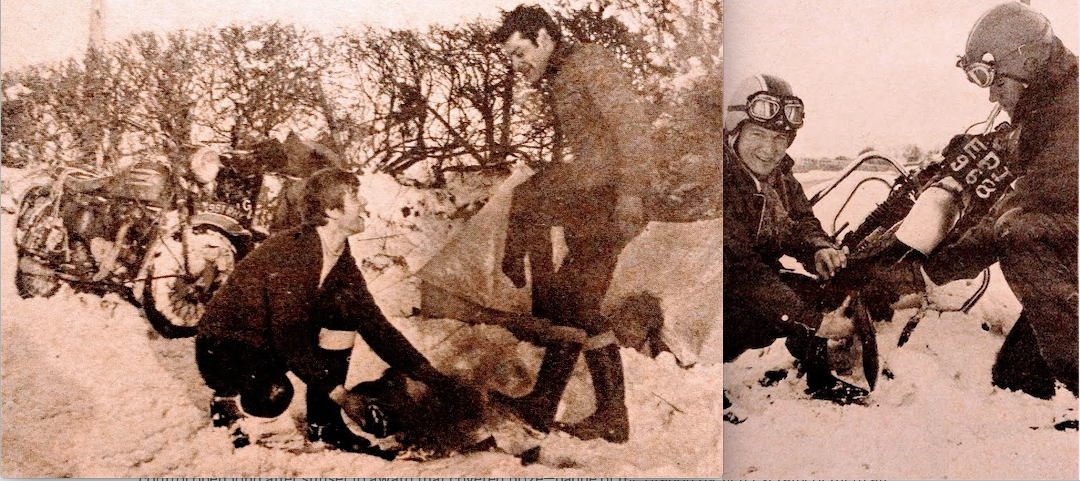
Awards: Overall long distance, H Klaus (BMW R60) from Hanover; British long distance, R McCullah Triumph 650) and D Milligan (Honda 450) from Irvine; women’s long distance, J Stevens (Maicoletta 250) from Surbiton; veteran machine, S Rogers (1937 Rudge 500) from Hanworth; oldest rallyist, L Star, 69 (Triumph 200) from Gosport; club turnout, Guildford (57% of membership).
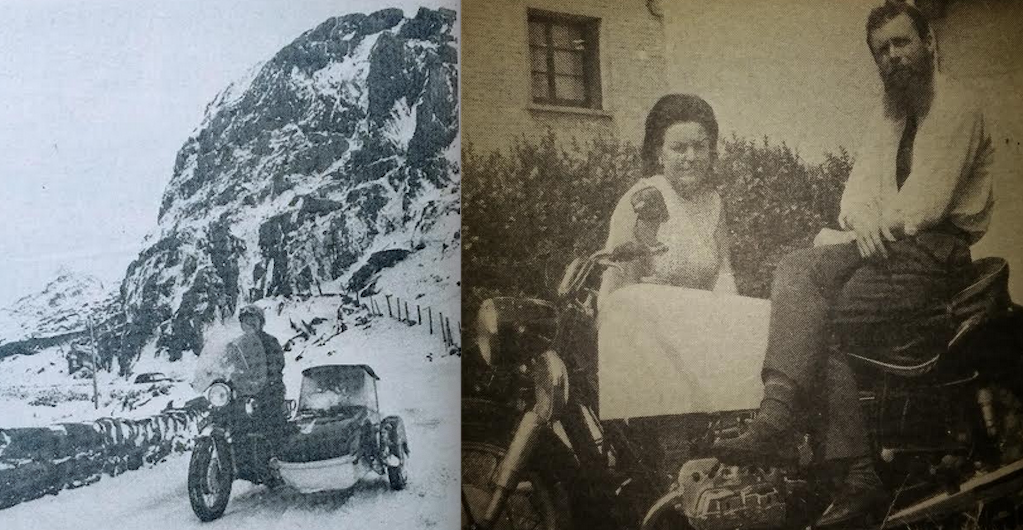
NITOR SUBSEQUENTLY OPINED: “If this year’s Dragon Rally wasn’t the best of the lot, I’ll eat my new American bone-dome, detachable peak and all. The clerk of the weather obliged with blizzards on all three days; as one rallyist put it, with enough snow to make it an achievement to get there, yet not too much to drift everything solid…Sidecarrists should really take a modest back seat, for they had little to worry about save the odd snowblocked pass to push their outfits through. It was tough for most of those who rode solo. Colleague Stewart Burroughs did just that on his Super Rocket, but by happy chance he chose to go by way of the Severn Valley where the snowfall had been less intense. Some heroes actually dared the adventure on customised roadsters, complete with clip-ons, rearsets and ribbed front tyres. Among this select company was our new Midlands advertising man, Howard Middleton, who rode his Velocette Thruxton. As for Ron James of Llangollen, he pulled off the feat on a 1916 2.5hp Clyno with belt drive. It’s perhaps a pity there wasn’t a special plaque to clip on to the souvenir badge, like that awarded for the beach ride in the Dutch Starfish Rally. Imagine the hush in the clubroom when the battle-seasoned warrior proudly displays his Dragon badge with clasp, campaign of 69!”
JOHN EBBRELL ALSO REFLECTED on his expedition to the Dragon, reporting that he started his run north on a roadtest BSA Rocket 3 “that glorious snorting stallion…After Watford Gap the snow began to settle and my speed fell to a mere 20mph trickle in second; on the Coventry Bypass I found myself confronted by the first jack-knifed artic”. He wisely detoured to Small Heath and swapped the shiny 500lb solo for a a well-worn Lightning-Palma outfit which had to be taken through Birmingham where “every main-road junction in that city of little hills seemed choked solid with its queue of grinding, slithering, helpless lorries and cars”. Ebbrell made it through, with “the priceless advantage of direct power drive and turn-on-a-sixpence manoeuvrability, a sidecar outfit is well-equipped to wriggle through snowbound traffic.” Following a freezing ride, taking refuge with a chum and problems the next morning restarting the well-worn Lightning he made it to the site where “old friends had many stirring tales to relate about their adventures…As we were going home on Sunday, even in late afternoon, there were still bikes heading in the opposite direction, struggling to reach Llanberis. However long had they been on the road? What lessons in winter riding must they have learned?”
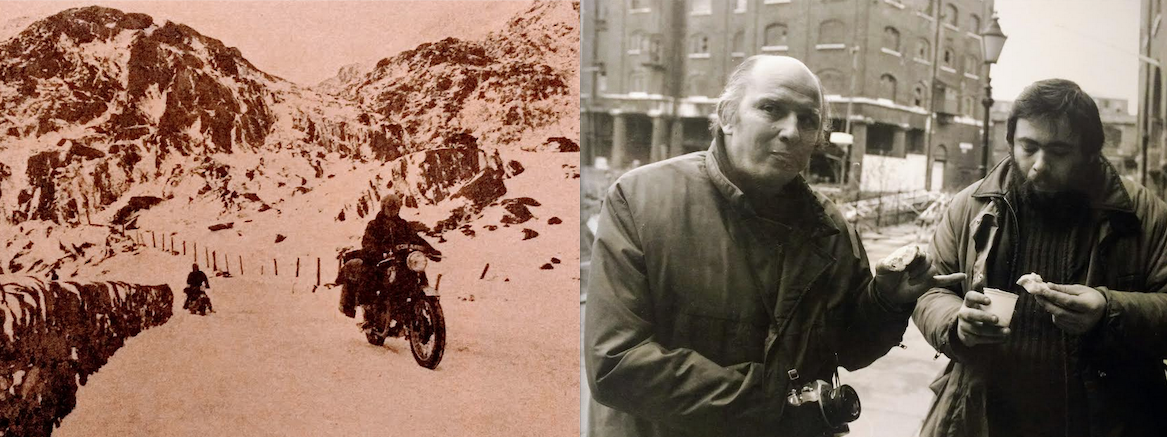
…AND THERE’S MORE! MY CHUM FANFAN (who has supplied most of the pics you’ll find in the Illustrative Melange) wrote thusly in the impossible-to-overpraise rally/touring website lpmcc.net: “A few months ago, my old friend, the venerable Jean-Marie Debonneville, a role model for so many rallyists, sent me some interesting pictures to add to my already burgeoning archives, all taken during his ‘polar expedition’ to the 1969 Dragon rally. These pictures depicted one of the most brutally icy years of this legendary Welsh winter meeting. Although he has now given up riding for health reasons, his passion for motorcycling and rallies remains as strong as ever and has never faded. The same however cannot be said for the thousands of archive photos, some now over 50 years old. These photos provide a unique record of his travels around the world on two or three wheels. He is now well over 80 years old, but he continues to travel enthusiastically down memory lane, from rally to rally, using the medium of photography in the albums he has created, discovering a new hobby along the way: that of keeping a scrapbook. He doesn’t show any signs of slowing down. He has thousands of slides, prints and 8mm films documenting his motorcycle accomplishments and it will take him many more years to complete his artistic endeavours. So, I wish him long life and time enough to enjoy the beautiful years he still has ahead of him, making us dream by sharing his memories and experiences of the past as he has now enabled us to share his memories through this site. The photos he took of the 1969 meeting were a superb record of events encapsulating the conditions at the time. Not only that but they are in colour, which was then becoming popular, taking over from simple monochrome. So here they are shared with me… and now with you. My initial idea was to write a straightforward report on this meeting, inserting Jean-Marie’s photos along the way. To do this effectively, I just needed to call him and interview him over the phone to get a better, more in-depth understanding of the rally itself. I already had a few questions prepared, and wondered if his memory would be good enough to recall anecdotes that took place 53 years ago. I needn’t have worried. For his part, Jean-Marie sent me a press article that he’d written upon his return from the rally in order to promote it to French motorcyclists. So rather than use my words I’ve decided to use his… almost verbatim, but with some edits. It’s a brilliant report recounting his epic winter ride in Wales in February 1969.”
“THE DRAGON RALLY IS CERTAINLY the most popular rally in Great Britain, a bit like the Elefantentreffen that many French people know. On the other hand, this gathering, which can attract up to 3,*000 people, is much less popular for the French. Yet what a marvellous rally, and what an unusual sight. I believe I was the first Frenchman to have taken part, back in 1965 and this year I went for the fifth time, astride my special VW with Jean-Pierre Mullier as my friend and passenger. We took no special equipment other than good waterproofs for the almost incessant rain in Wales in February. Alas, snow equipment would have been more useful this time around. There were several options to cross the Channel from France, but I preferred the 2.30am departure from Dunkirk, which disembarked around 7am, allowing us a full day in the UK upon arrival. So, on Thursday, we arrived at the port and had a pleasant surprise: two German riders, (on 650 AJS and 450 Honda solos) from Wupperthal, and three Frenchmen from the BMW Club de l’Ouest (on R69S solos). We all arrived in Dover together but there we left each other, each of us having a different schedule. We had no problems until around Friday noon when we left Birmingham on the A5 towards the Dragon. There the snow storm began and in less than an hour the snow lay so thickly that any progress on four wheels or more proved impossible. We drove without interruption for almost 18 hours covering hundreds of kilometers. Lorries stuck sideways in the hills caused queues of cars sometimes 20km long. We had to ride on the verges or on the pavement, or sometimes even against the flow of traffic on the dual carriageways. In short, we were trying to skirt around the delays, getting stuck and bogged down nonetheless, and generally trying to avoid all the stranded vehicles, abandoned by their owners who left on foot to seek shelter. The best part of the journey was crossing the Llanberis Pass, located just prior to the finish, which we did in the early hours of the morning, from 1am to 5am. We later found out it had been closed to traffic, although we’d missed the sign announcing its closure as it was completely covered in snow. Whilst ascending Llanberis we passed two completely stranded BSA 650S combos. However, my VW having a 4.50 tyre and enormous torque at low revs had a clear advantage over them. We completed the journey ahead of the rest, sometimes with the help of a shovel, and sometimes with all six of us having to push as well. The storm was so intense at the top of the pass that the path we had cleared in the VW was obliterated in less than 15 minutes, and the following bike, a BSA, had to clear a path all over again. That proved the downfall of the BSA. It was completely ‘drowned’ and refused to start, instead letting itself be pulled to Llanberis. At dawn the army cleared the road and all day the ‘Dragonists’ arrived solo or with sidecars. During that day a disparate world of motorbikes assembled itself, resembling a weird collection of enthusiasts and their machines. On Saturday evening a tour of the local pubs meant copious amounts of beer were drunk. Needless to say, some glasses got broken and there were many people worse for wear. On Sunday the roads that had been ploughed and salted were much smoother but also more aggressive for the machines themselves. This 1969 Dragon is finished and for us it was the best rally ever. Hopefully next year there will be a contingent of Frenchmen to rival that seen at the Elefantentreffen. At the Dragon rally, the entry or participation of cars is strictly prohibited. This rule is enforced in respect of pseudo rallyists who came this year by car to the Nürburgring, disguised as motorcyclists, and who are sounding the death knell of the great German rally.
Report: Jean-Marie Debonneville
Images: JM Debonneville & JF Helias”



MANY AN ELEPHANT RALLYIST must have sniffed last week’s mild breezes and groaned, “ This year it’s going to be just too easy.” But the great German get-together did not completely fail its reputation. Christmas snow still lay thickly about the Nürburgring road-racing circuit. At dusk on Friday an iron-hard frost clamped down on the Eifel Mountains, turning the steep, hairpin roads into dicey skating rinks. For some Britons, adventure began even before they left England. This mournful catalogue of misfortunes befell Stockport Clubman Alun Turner’s Norton-Steib outfit. At Luton the speedo broke; in the Dartford Tunnel the primary chain came off; before Dover, clutch slip set in. Things went no better on the other side. “My petrol tank sprang a leak in Bruges, and the exhaust pipe split near Liege,” he was heard to complain. “Oh yes, and the sidecar fell off at the German frontier.” This year will surely go down as the biggest Elephant Rally ever. Official estimates of the attendance ran to five figures. One of the best-ever club turn-outs from Britain was provided by the Conway Club: 18 rallyists out of a membership of 49. A capacity crowd thronged the trade stands, talking, shouting, laughing and haggling in a dozen languages, turning the racers paddock into a cross between an Eastern bazaar and a super-cosmopolitan Earls Court Then imagine the sensation when a large truck from a Nuremburg circus rolled up to disgorge (yes, you’ve guessed it!) a real, live baby elephant. At nightfall, Ernst Levercus performed that solemn and very German ceremony, the oration for riders who have passed on since the last rally, and lit the torches of remembrance which are borne in procession round the circuit. Spectators who’d climbed the towering battlements of the Nürburg castle enjoyed a truly grandstand view as the spectacular headlight parade set out. And what a caper it became, as machines skated and slithered round 14 miles of snow-packed curves and frozen gradients. Leverkus, father of this great event, will long cherish the memory of this Elephant. At an informal ceremony round one of the many camp fires, a group of German admirers presented him with an exact replica of an 1807 Prussian dragoon’s carbine, hand made specially for the occasion by gunsmith-motor cyclist Karl Johnsdorf. Leverkus collects antique firearms. It is common for riders to codge up an old bike just to do the Elephant. Most of the Ashfield (Southampton) Club’s contingent arrived in one body, mounted on no fewer than eight solo BSA Bantams—but only 7½ went home. As Terry Endein’s bike reached the Ring, the rear hub collapsed irreparably. But the engine-gear unit was still in good order, so they brought it home in a fellow member’s sidecar and left the rest to rot! [You’ll find comprehensive coverage of this Elephant Rally (and many others) with an astonishing selection of pics at lpmcc.net.]
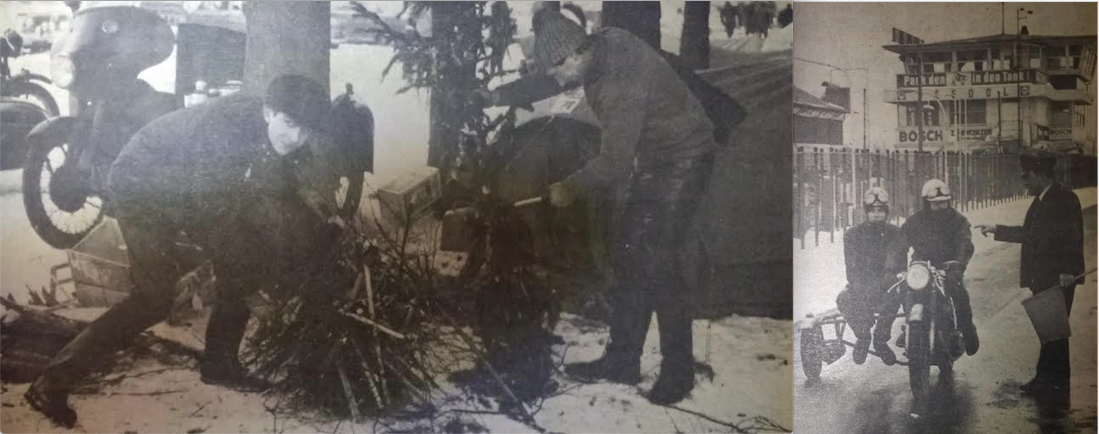
“A RIPE SLICE OF NOSTALGIA comes from reader Eddie Ricketts, of Ware, Hertfordshire,” Nitor reported. “It is a long paean of praise for the dear, departed Panther. ‘The greatest bike ever made in England,’ he says. His 1957 six-hundred served him well—70,000 miles pulling a Busmar Devon “complete with six cwt of humans and half cwt of wife’s stuff”. Now Eddie has bought a six-fifty Panther and looks forward to another 15 to 20 happy years. ‘My point is this,’ he goes on. ‘Can anyone visualise a Japanese buzzbox working, pulling like a Panther?’ All very charming, we appreciate, but the gigantic long-stroke single had become a dead duck long before the famous Cleckheaton manufacturer stopped production of bikes a few years ago. Everything was against it, including fashion. Farewell to the days when an ignition advance-retard lever was as good as a second gear pedal! Most popular sidecar today is the single-seat sports; and, for that, a potent parallel twin makes the best sort of workhorse.”
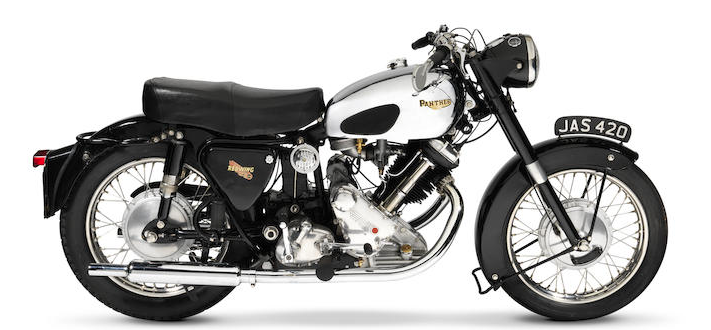
“‘BORN 1880 AND STILL GOING STRONG’ could be a fitting slogan for 88-year-old George bucket of Knighton, Isle of Wight, particularly when he is astride the Triumph which he has owned for the past 41 years. He bought his first machine—a single-cylinder belt-drive Clyno—in 1906. In 1927 the spanking new 494cc Triumph outfit was delivered to his cottage door by George Siggery, now managing director of Borrough Hall Newport, Isle of Wight, who was then a mechanic for Stanley Russell, motor-cycle distributors. George Bucket well recalls his first trip on the Triumph, with his wife in the sidecar. It was a tour of Devon; he did 160 miles on the first day. During the Second World War he was a member of Ryde Home Guard and inevitably ended up as company despatch rider. That grand old Triumph even served on occasion as a Bren gun carrier! George works for The Ryde Borough Council’s water works department. After 70 years’ continuous service he has no thought of retiring; nor, it seems, from his motor cycling. Last November he drove over from his Isle of Wight home to Reading. He says he does his own routine maintenance and has no difficulty getting insurance. So is George Bucket Britain’s oldest active motor cyclist?”
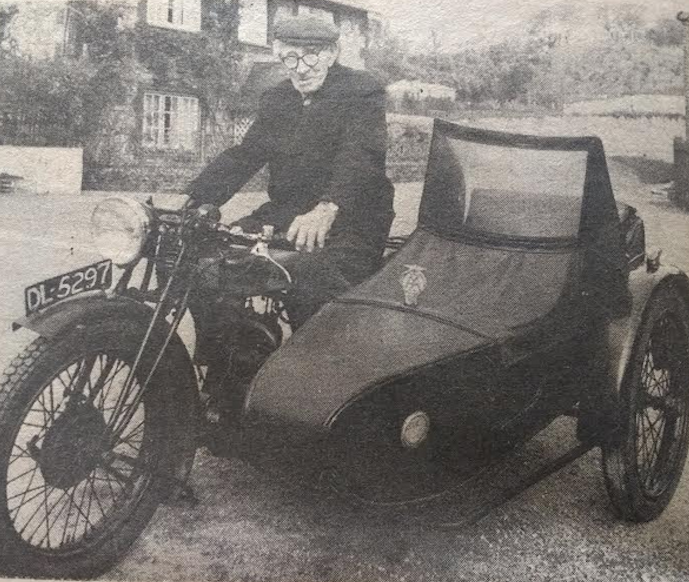
MAJOR DAVID GOODEM, FORMER secretary-general of the FIM, warned: “Unless drastic action is taken quickly, the FIM as we have known it in the west for over 50 years is a dead duck. It is fast becoming a political tool of the Russians. With the bloc vote and support from fellow-travellers, the Russians are pushing our sport around.”
EVEN THE NUMBER 8 HATS at Motor Cycle couldn’t get it right all the time: “The facts are that the Japanese factories went into roadracing to gain publicity and, having done just that, they have quit. It is no good whining and asking them to come back. They have gone, and in my opinion they have gone for good. The few remaining Japanese manufacturers are fighting to keep in business and can no longer afford grand-prix racing…Racing will go ahead as well as ever without the Japanese.”
“I AND MANY OTHERS ON their way to the Elephant Rally really appreciated the free soup served up at the docks in Dover by a couple of local riders. It went down a treat,
Peter Gannet, London SE2.”
COMMENTING ON ADS FOR a 1939 990cc V-twin Matchless at £100 and a Series B Vincent Rapide at £190 (by comparison a new Bonnie was listed at £395) ‘Nitor’ of the Blue ‘Un opined: “Prices are kept up by a passion for good old-fashioned quality and character against the garish yet drab world of mass production.”
BMW CEASED PRODUCTION OF its 500 to concentrate on the 600, 750 and 900. Electric starts became standard on 750s and 900s; a 12V alternator replaced the dynamo.
“SPEED STARVED FANS who braved the near-zero temperatures to watch the first road-race meeting of the season, at Brands Hatch on Sunday, were rewarded with five hours of top-class short circuit dicing.”
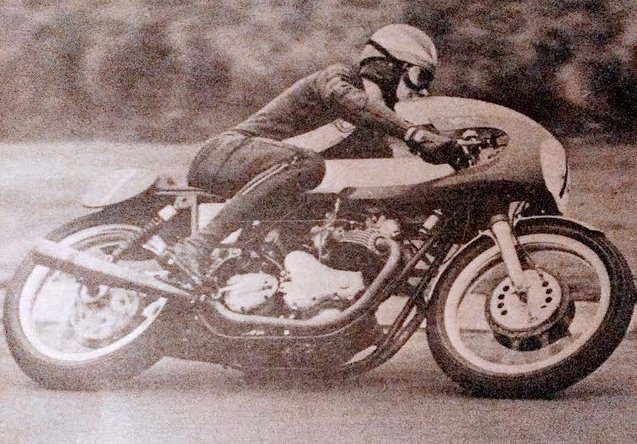
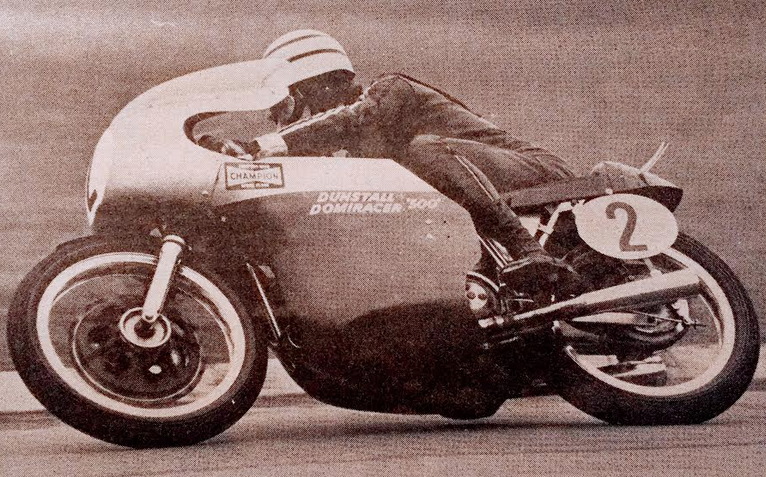
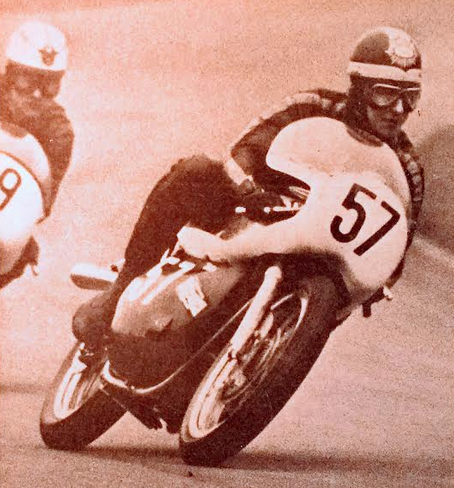
SAMMY MILLER WON THE CALTEX Motor Sport Award (for Ireland’s most successful contestant in two and four-wheel sport), not least for winning the British solo trials championship for the 10th year running.
PIG FARMER ANDREW CHAPMAN, 19, entered his first sidecar race (at Brands Hatch); for his passenger, Bob Rowden, this was his first race of any kind. They were up against some of Britain’s fastest charioteers so, inevitably, they won.
AS PART OF A GOVERNMENT austerity campaign the Department of Transport ordered local authorities to cut their road maintenance budgets by 15%.
A BRACE OF BSA ROCKET 3s Ridden by Dick Mann and Yvon Du Hamel set American Motorcycle Association stock-machine records at Daytona. Du Hamel averaged 127.95mph over 10 miles and 127.6mph over 50 miles. Mann set 100 and 200-mile records at 125.99mph and 123.41mph respectively. A Rocket 3 also carried Darrell Triber of Spokane, Washington on a 1,393-mile run from Blaine, on the US-Canada border to Tijuana in 23hr 35min to average just under 60mph, knocking more than four hours off the 28hr 7min ‘three-flag’ record which had been set in 1936 by Fred Ham on a Harley. The first three-flag record was set by the legendary Cannonball Baker, who took 81hr 15min in 1915. Meanwhile in Austria a university techie Peter Karlau rode a Trident 767 miles from Vienna to Hamburg in 9hr 40min, an average of 79.2mph. That included fuelling stops and a broken chain. Actual riding time was 8hr 37min (88.5mph).
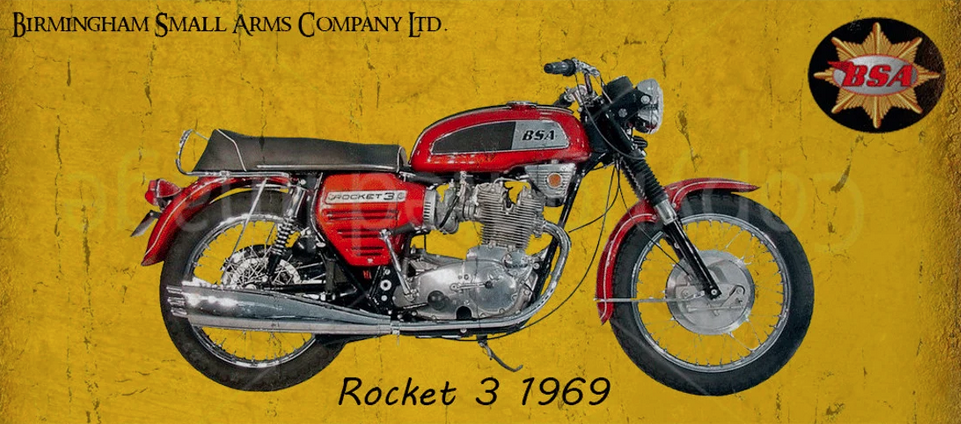
BSA GROUP CHIEF ENGINEER Bert Hopwood explained why he had designed a triple, rather than a four: “Width and cost. We decided the engine should be as narrow as possible. Besides, the more cylinders, the more expensive the engine is to produce…The Triumph engine was readily adaptable to three cylinders by reason of its camshaft layout…The BSA twin, with its single camshaft and cast-in pushrod tunnel, was a less suitable basis.” Hopwood added that he had stuck to an ohv configuration because he felt a move to ohc as a way of boost power output was unnecessary: “Surely 60bhp—say 75 with further development—is power enough? Who is going to use more performance than that anyway?”
CALIFORNIAN PUBLISHER FLOYD CLYMER announced plans for a range of bikes to be built in Germany and Italy for the UK market. Munch would supply its 1,200cc four-pot Mammoth, and would build a bike round a modified Horex 600cc ohc vertical twin using Ceriani forks. There was talk of a vee-twin to be marketed as an Indian but at the heart of the range were Indians powered by 500cc Velocette and 750cc Royal Enfield engines. The Enfield Interceptor chassis was designed and built in Bologna by Leo (Italjet) Tartarini who also chipped in with three ‘US-style’ 50s: the Papoose, the Ponybike and the Boy Racer. Munch, also developed a 500cc dohc vertical-twin racing engine with a bolt-on gear box and sent it to be framed at Rickman Bros. Fewer than 20 Interceptor-powered Indians had been completed when Clymer died a few months later; the remaining Enfield engines were put to good use by the Rickman Brothers.
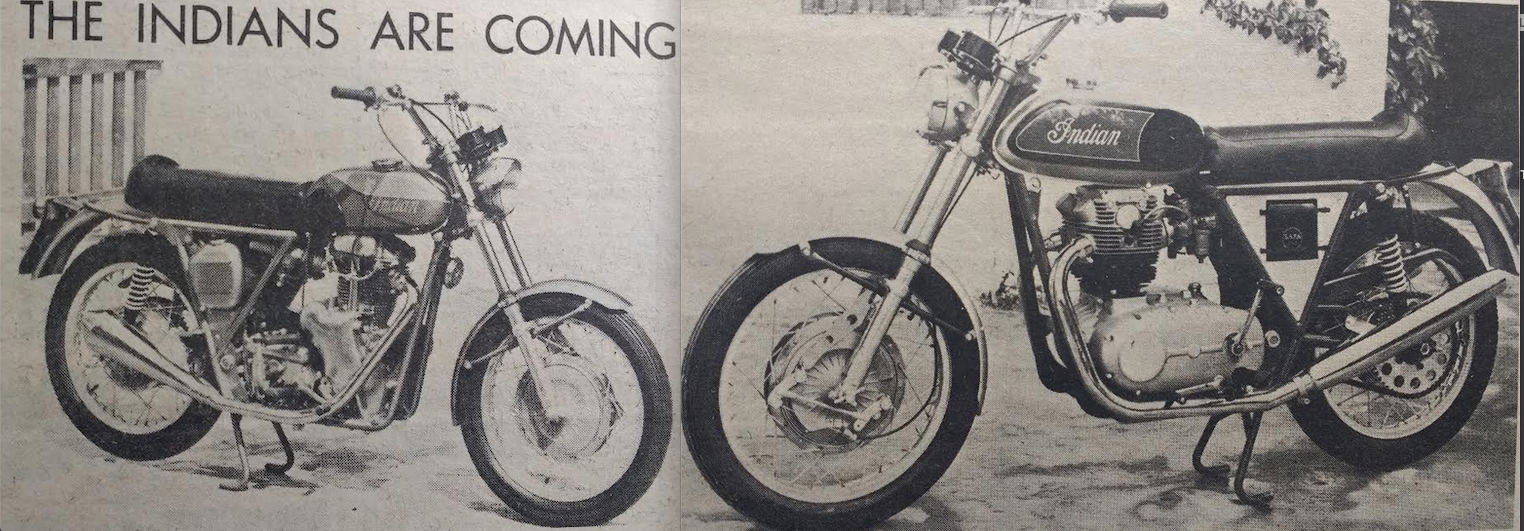
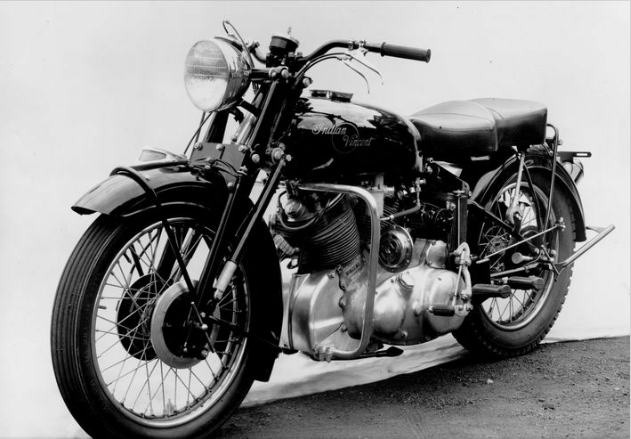
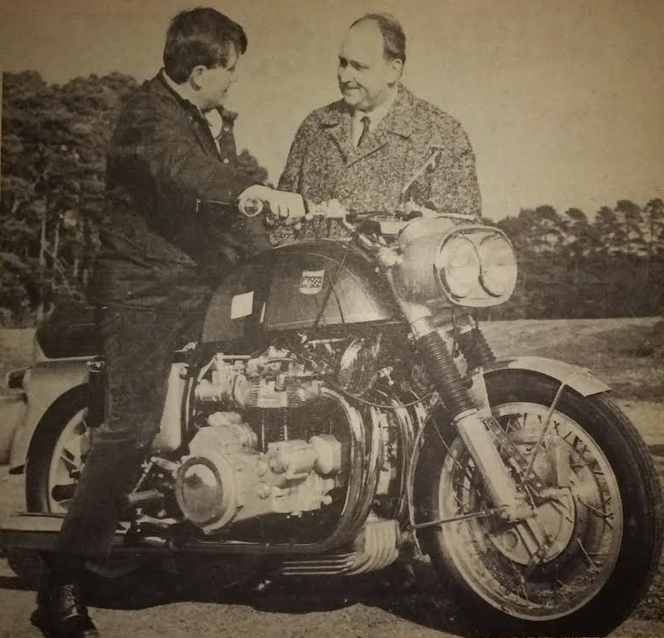
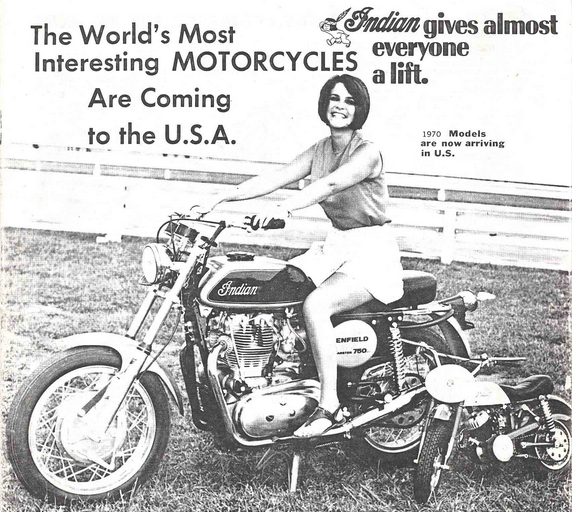
THE AMERICAN MAGAZINE CYCLE condemned the TT course as “full of treacherous decreasing radius and off-camber bends and bordered by solid, saw-toothed walls and fences”.
IN HIS ROADTEST OF the MZ ES150 Willoughby remarked: “You only have to look at the distinctive lines of the ES150 to recognise it’s an MZ, the marque that carried the East German Trophy Team to an incredible sequence of five victories in the International Six Days’ Trial from 1963-1967…The MZ reflects its rugged cross-country heritage in traits that appeal strongly to the all-purpose rider.” Handling, he described as “magnificent”; top speed was 67mph. “Lines of the RS150 are saucy and it looks gay with its tank and headlamp shell, red seat, gold lining and ample chromium plating…all in all a remarkably fine lightweight for the no-nonsense rider.”
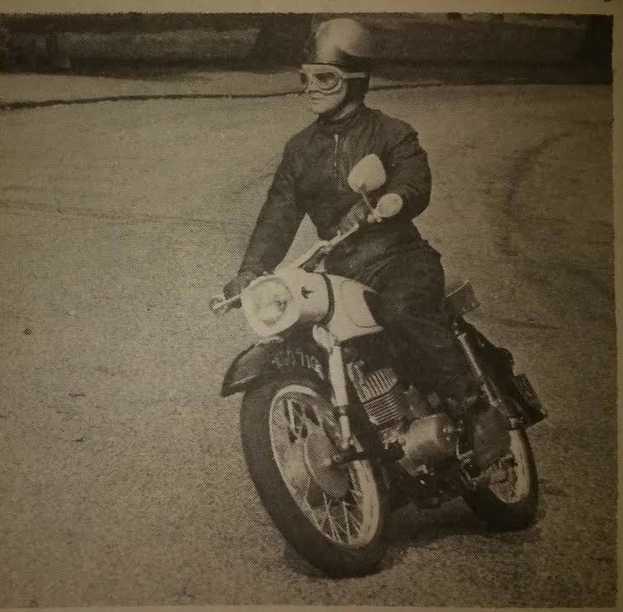
“THE MAN WHO PROMOTED the world’s first speedway meeting, Johnnie Hoskins, is to be made president of Britain’s second division. Hoskins, who now organises meetings at Canterbury, ran the first speedway meeting at an agricultural meeting in West Maitland, Australia, in 1923.” (You’ll find more details in 1923.)
“WERE HE STILL IN HARNESS, Edward Turner, Britain’s outstanding designer for some 30 years from 1936, would plump for a 500cc four-in-line with 40bhp, vivid acceleration up to some 70mph (the speed limit not on in Britain but in much of the US too) and a top whack of 100mph for unrestricted roads.” Turner shared his ideas during a talk to the Ringwood MCC. “Turner is dismayed at the extent of recent American influence on design. Today’s high-performance machines, the threes and fours, are too expensive, he said, and 750cc is too large a capacity for a vertical twin…two-strokes he dismissed on account of the difficulty of combining high performance with reasonable fuel economy.”
PUCH LAUNCHED THE twist-and-go automatic Maxi moped in the UK but warned that licensing legislation was hindering sales. Motor Cycle editor Harry Louis agreed: “For years now there has been talk of lowering the licence age to 15—even 14—and waiving the driving licence, provided mopeds were limited in performance to, say, 30mph, so bringing Britain into line with the practice in many other countries. This would be a real safety boost, with young people getting used to power on the simplest and most easy-to-ride machines.”
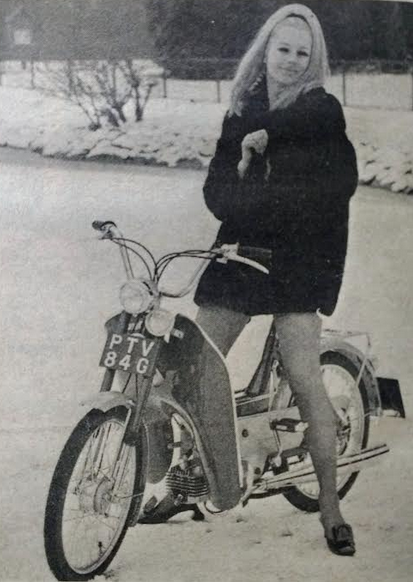
FOR THE FIRST TIME since it was established in 1966 the ice racing world championship was held outside Russia. The new venue, at the West German ski resort if Inzell, in the Bavarian Alps, made no difference to Russian champion Gabdrakman Kadyrov who became world champion for the third time. Britain’s first-ever world ice finalist, Andy Ross, British 500cc grasstrack champion, was runner-up in the last heat after bouncing back from two spectacular crashes. He finished equal 10th and announced: “I’ve ridden my last race on ice now that I’ve reached my ambition of competing in the world final.” The 1967 world champ, Russian Vladimir Zibrov, was disqualified from a heat after touching the start tapes. “The crowd erupted against the decision, jeering and throwing bottles and can cans until the police moved in to restore order.” East German riders were absent—they were refused visas for travel to West Germany.
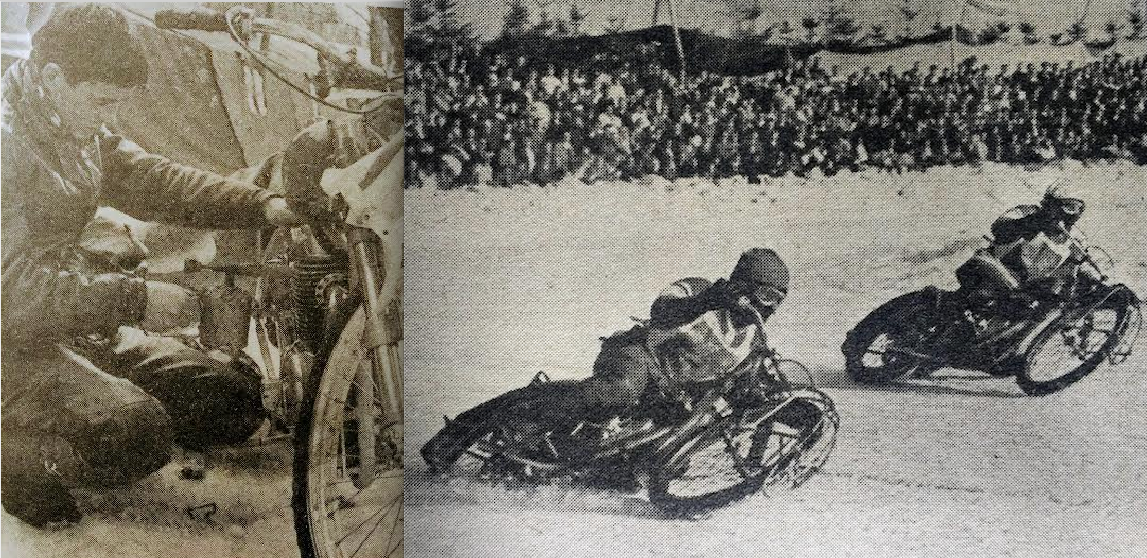
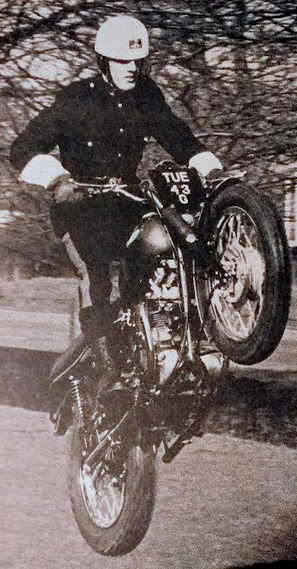
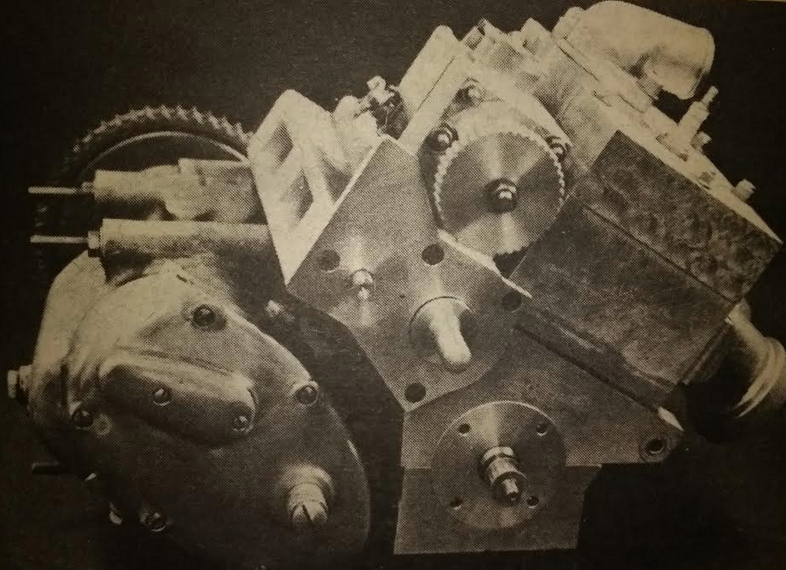
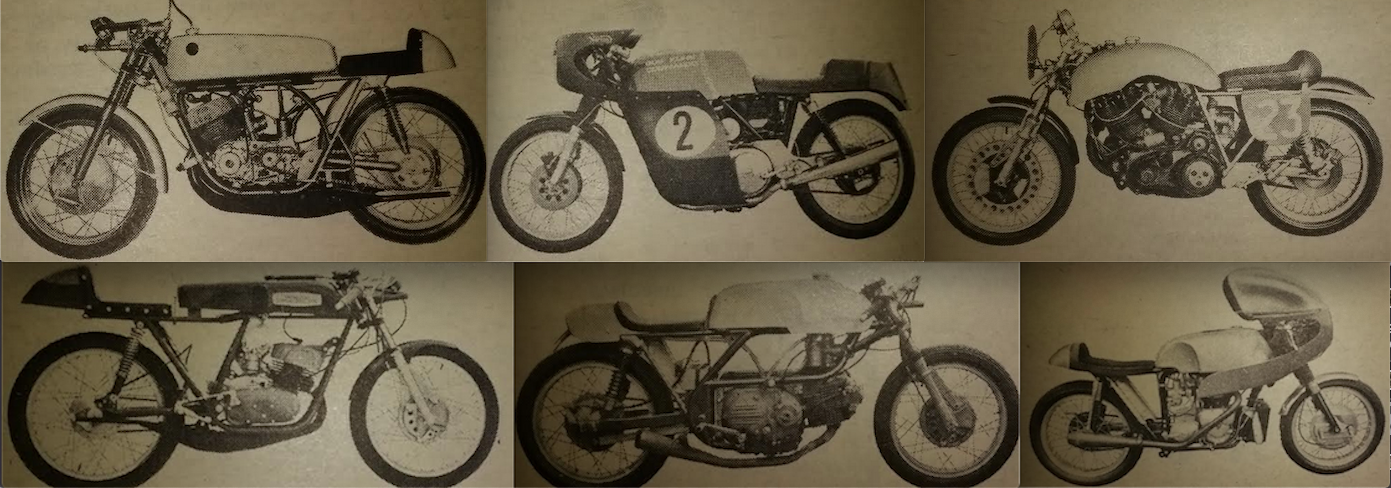
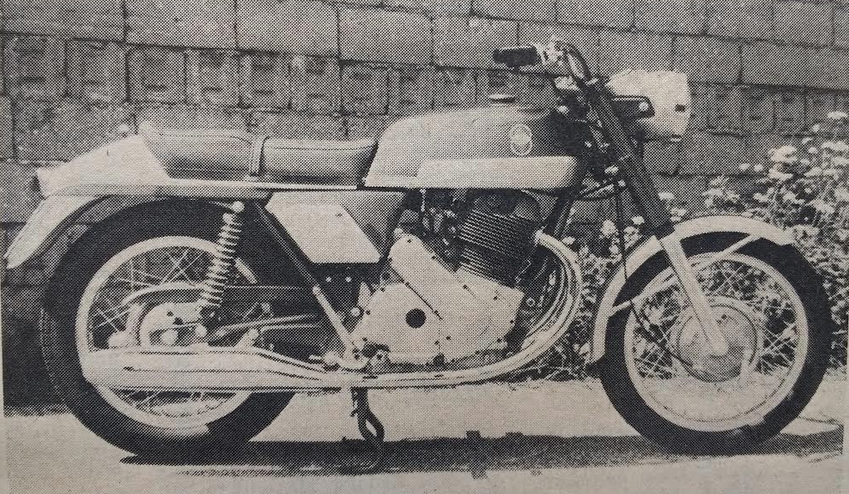
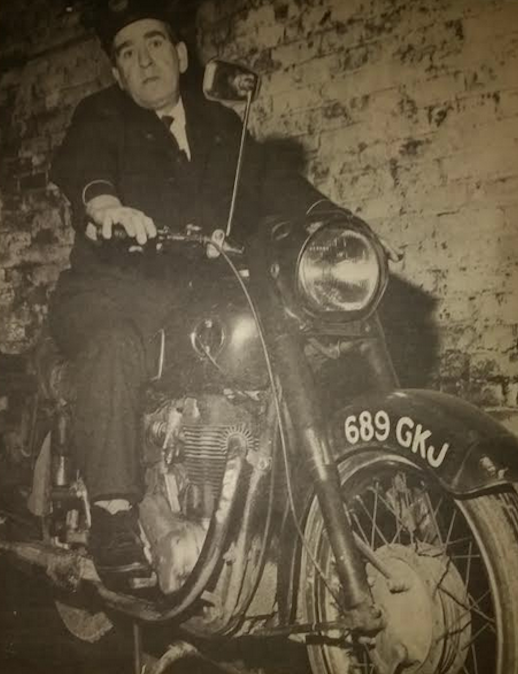
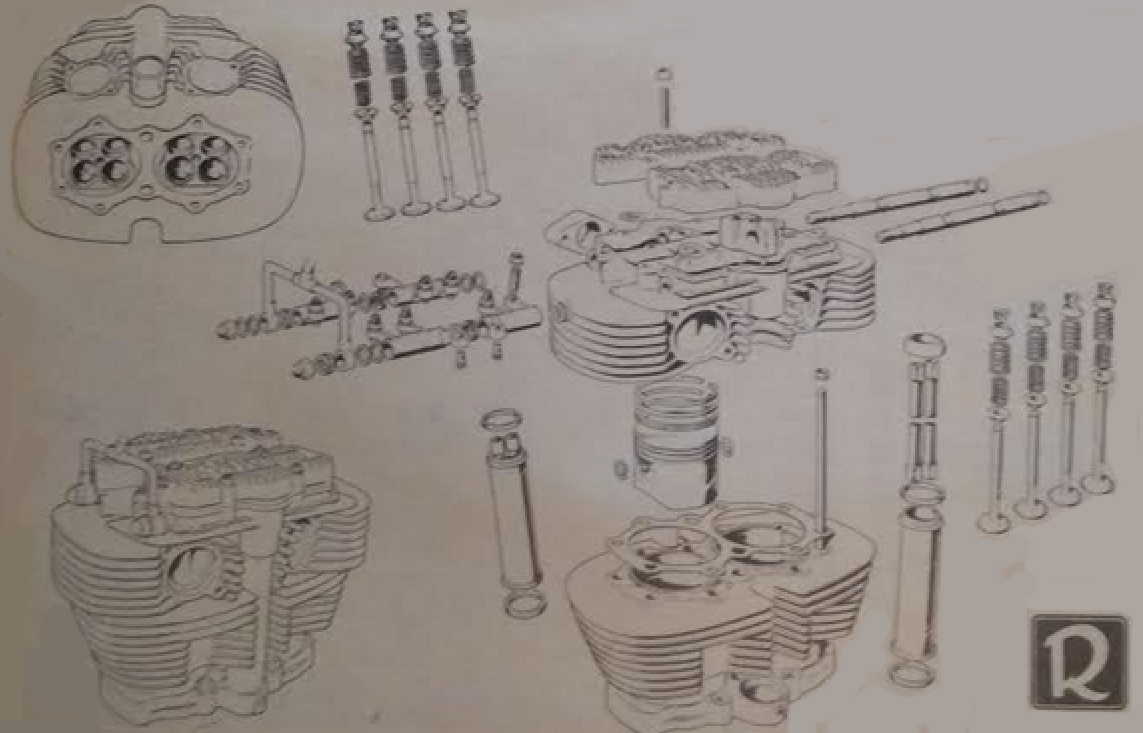
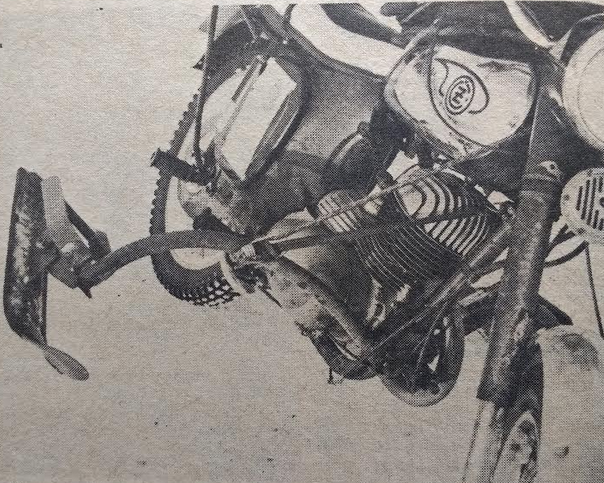
“THIS YEAR’S SHAMROCK RALLY was a great success, I gather from Gerry Kennedy,” Nitor reported. “Entries were up to 300 (200 of them from across the Irish Sea, by the way); Ireland’s greatest road-racer Stanley Woods added lustre to the gathering, pleasing his hosts mightily by declaring that if he were a younger motor cyclist again it’s rallying he’d be going in for, not racing. Even the weather played its part magnificently by providing Co Kerry with the most brilliantly sunny weekend of the year. “It only rained once,” said Gerry. “That was at 2am Sunday. I remember the time because the pubs had just started to close.”
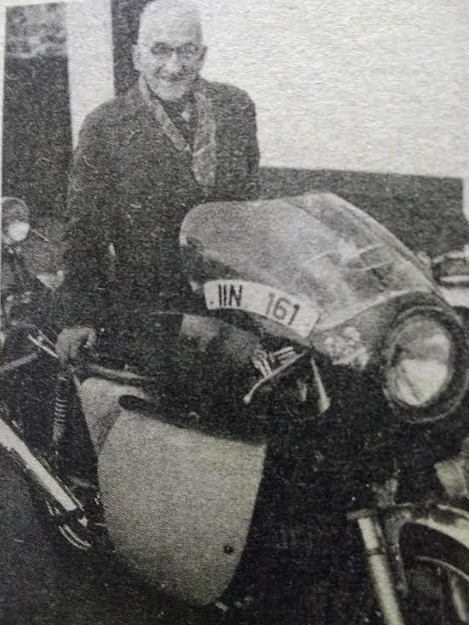
“MY WIFE AND I have returned to motor cycling after a gap of 10 years. Our last machine was a Tiger 110, but now we have a couple of 150cc Hondas, and excellent little machines they are—though we wish the importers were a little more co-operative and quicker off the mark when asked for technical information. But where have all the real motor cyclists gone? Where’s all the old friendliness, the readiness to help, the camaraderie? This morning I had a minor breakdown. It took only 20 minutes to put right but in that time 11 bikes went by, not one stopping to assist. And the number of burn-up merchants is startling. In the two weeks we have been riding we have seen the most appalling behaviour—deliberate cutting-up of other road-users, unnecessary throttle-blipping and noise, and dangerous showing off. We’re not old-timers but from all we’ve noticed in the past two weeks, we feel like a couple of over-cautious old fogies who still believe in safe riding. The whole fraternity seems to have changed beyond all recognition.
Dave and Dusty Wiseman, London W3.”
“I AM DISTRESSED by the lack of information in Motor Cycle about the current range of Phoboph motor cycles. I heard a rumour that a new model was to be announced at the Brighton Show; the Phlexidrive. Phoboph’s answer to the Norton Commando. As well as the engine being rubber-mounted, the crankshaft, con-rods and pistons are made of rubber. This breakthrough in engine design is said to give a far more phlexible power-band than for any previous engines. The new Phoboph uses a constant-mesh gearbox. In fact it is so constant that it can’t be got out of mesh. Hence the need for a more phlexible power band.
MC Cox, Brighton, Sussex.”
As well informed readers will know, the Phoboph range featured some remarkable models, including the turbocharged Phlatulent, the 18cc Phoetus and the 2,500cc single-cylinder Phearsome—Ed.
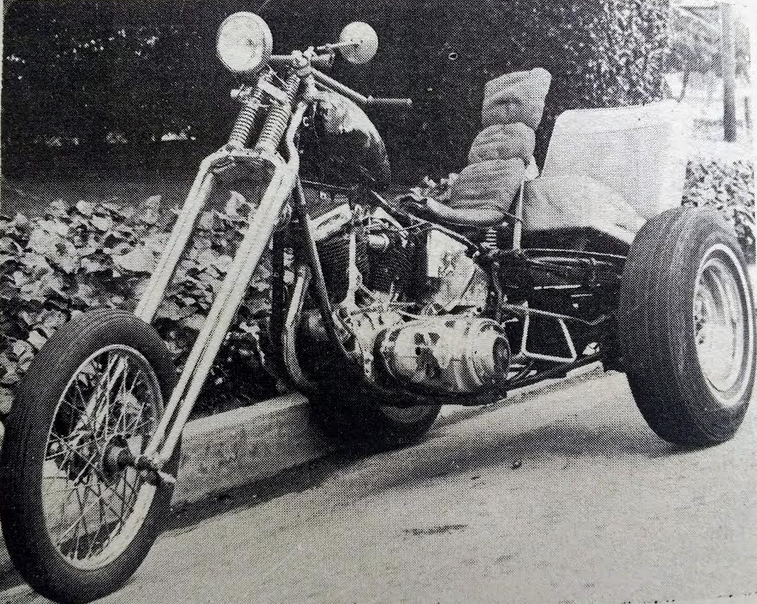
“SIDECARS SURVIVE, BUT ONLY JUST, Nitor warned. “Watsonian soldier on as Britain’s last manufacturer, and the position on the Continent is no better. Even Steib have ceased production. Nevertheless, through the cloth-cab, rock-bottom-price family transport brackets seems to have shifted to three-wheelers, a hard core of dyed-in-the-glass-fibre sidecar enthusiasts remain. And a keen lots they are, comparable in their enthusiasm with the vintage brigade.”
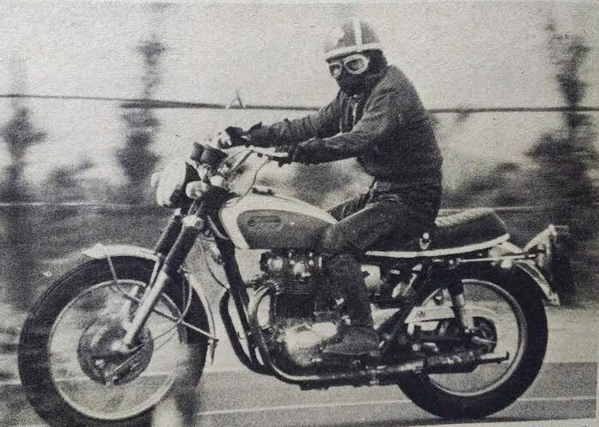
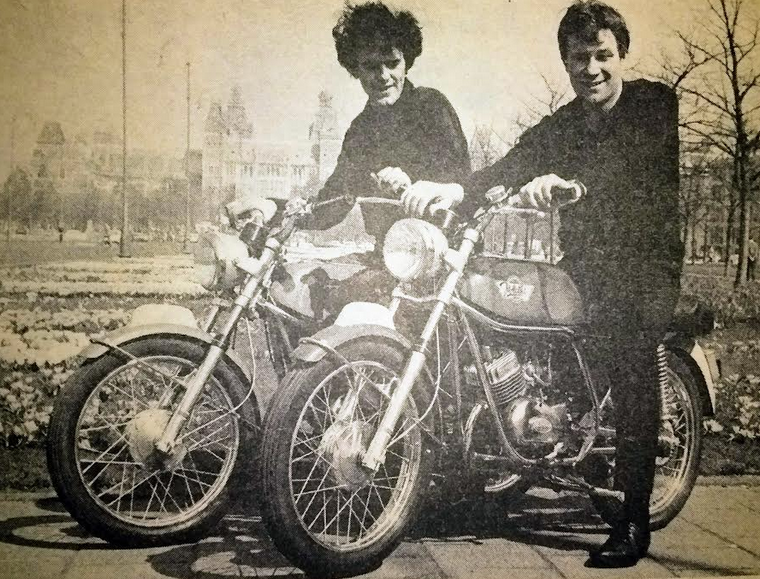
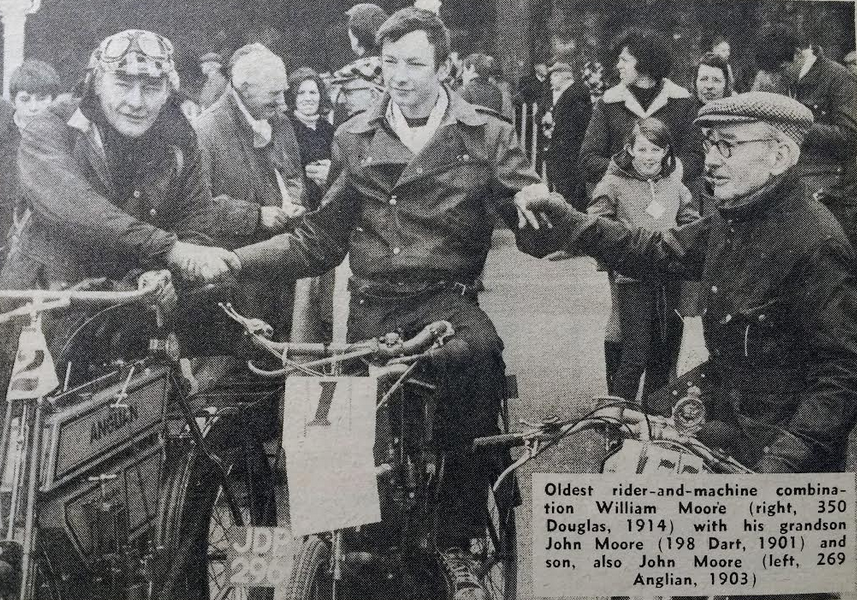
“YORKSHIREMAN BILL WILKINSON achieved his greatest victory last week when he powered a works 250cc Greeves to his first win in the Scottish Six Days Trial after one of the most dramatic and closely fought weeks in the event’s 60-year history. Wrecking British and European champion Sammy Miller’s bid for his sixth Scottish win and the hat-trick, Wilkinson winkled Miller and his Bultaco from the lead during Saturday’s final stage of the 692-mile Highland international…ending a run of mechanical failures in his previous nine Scottish rides. His effort brought Greeves their first victory in the trial after about 15 years of effort—and the first British machine success since 1966…Still without a production trials machine on the market after Villiers engine supplies were axed two years ago, Greeves sent no mechanic or executive in Support. And when Greeves director Derry Preston Cobb was telephoned with the news of Wilkinson’s win, he did not believe it….all but one of the next nine places were filled by Spanish Bultaco, Ossa and Montessa machined or British-modified Japanese Suzukis…the Montessa trio of Gordon Farley, Don Smith and Lawrence Telling aced the Barcelona factory’s first Scottish success by winning the manufacturer’s team prize after a week-long ding-dong with the Suzuki team…Mick Andrews (250cc Ossa) stole up from fourth place on the final day to seize second spot under Miller’s nose…Miller finished one mark down on Andrews with Don Smith, the leader for the first two days, taking fourth place, seven marks behind Miller. Best 150cc rider was 17-year-old Martin Lampkin (126cc G aunt Suzuki) , with Miller (252cc Bultaco) leading the 350cc battle from start to finish and Rob Edwards (170cc Cotton), 10th overall, having a runaway success in the 200cc class. Top newcomer was 21-year-old Darrell Stobbart (250cc Bultaco) from Barrow-in-Furness…The Edinburgh Club’s event is run against the clock, with average speeds ranging between eight and 24mph and a one-mark-per-minute penalty for riders outside a one-minute allowance at time checks…The course, which started and finished in Edinburgh but was centred 150 miles away on Fort William during the week, turned out to be less gruelling than those of the past two years. But the sections were plenty tough.”
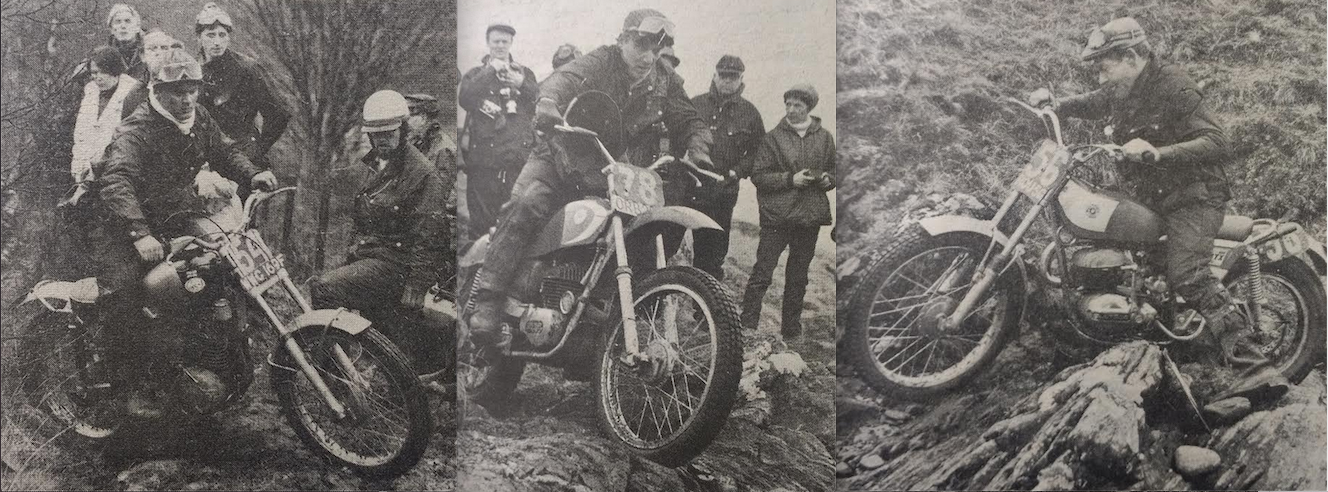
“WORLD-CHAMPIONSHIP ROAD RACING is at the crossroads,” Mick Woollett warned. “The Japanese have pulled out and it is now up to the European factories and private equipes to make a success of the series—just as it was when the championship began in 1949.”
ALEC ISSIGONIS, THE ITALIAN guru who designed the Mini, was contracted to design the next generation of bikes from Norton Villiers. “And it is believed that this brief does not even rule out the possibility of new road-racers going on the drawing board.”
‘DETERMINED TO IMPROVE SPARES and service facilities, Lambretta-Trojan, new controllers of Suzuki (UK) Ltd, have flown a representative to Japan to bring back urgently needed parts to Britain. New Suzuki director Maurice Knight said he hoped that a spares service would be working within a fortnight.” Knight promised to “get the complete service up to Lambretta standard”.
GREEVES WORKS MOTO-CROSSER Richard Hughes was forced to put his racing career on hold for 18 months because his mum and dad wouldn’t sign his contract. Hughes, 19, left home, near Maldon, Essex “to stand on his own two feet”; he planned to ride for Greeves again as soon as he turned 21. However, within a few weeks Motor Cyccle reported: “Teenage scrambler Richard Hughs may bid to become a ward of court in an attempt to beat the racing ban imposed by his parents. He is holding on to his Greeves works machines until he has had legal advice. Nineteen-year-old Hughes cannot ride without parental permission until he is 21. And his mother and father refused to countersign his entry form after a family row over the young landscape gardener’s girlfriend. If Richard does become a ward, the court could give permission, as his legal guardian, for him to race.”
“SACKED BY GREEVES AFTER an on-off parental ban on racing, 19-year-old Maldon, Essex, scrambler Richard Hughes rode a 250cc AJS into second place in the 250cc allcomers’ race at the Stourbourne scramble at Wratling, Suffolk on Sunday. It was his first outing on the AJS, which he collected from the Andover, Hants factory on Friday. In recent years he has been racing a 250cc Husqvarna…AJS director Peter Inchley said: ‘We are lending Richard a bike to see how he gets on with it. If he likes the machine and goes well we might enter him in some of this winter’s TV meetings.'”
MOTOR CYCLE’S MIDLANDS ADVERTISING rep Howard Middleton rode a 1966 Velocette Venom Thruxton. Top-of-the-range Thruxtons were selling so well that the Hall Green factory would not spare one for roadtest. Motor Cycle was particularly keen to test the latest Thruxton. And that’s why Middleton’s bike was stripped, refurbished and rebuilt to 1969 spec at the factory (the main changes concerned cylinder-head tracts and valve diameter). Velo singles had been about for decades but in 1967 Neil Kelly had ridden a Thruxton to victory in the 500cc Production TT at 89.89mph with a 90mph-plus lap. With a spec including an Amal GP carb, twin-leading-shoe front brake, close-ration box, ally rims, rearsets and clip-ons “the Thruxton is, in essence, a road-going racer…traditionalists to a man, Velo fans were dismayed when, a few months ago, the factory abandoned the hallowed magneto and…installed direct-current coil ignition. It was an enforced choice following a stop to magneto manufacture by Lucas, yet…as a result the Thruxton has become much more civilised. Formerly, starting was an acquired art, the secrets of which were passed down from Velo-owning father to son. Now, it is a first- or second-kick exercise calling for nothing more in pre-kick drill than a flooded float chamber and a gentle easing over compression…This particular Thruxton was used by Middleton for the 1969 Dragon Rally…plodding along through deep snow at 15 to 20mph without missing a beat…Many times on that trip the coil ignition showed its worth, keeping the engine pulling strongly and happily from as low as 1,500rpm…The semi-racing crouch defeats wind pressure without placing too much strain on the wrists and arms. The Velo is. above all, an enthusiast’s machine and, given an experienced rider, can out-perform most other models on the road, six-fifties not excepted…with its two-way damped front fork the Thruxton is superior even to the Venom. It can be cranked over safely until the footrest ends touch down, and that is way beyond the limits of lean found in normal riding…The legal 70mph limit can be held indefinitely, the engine turning over lazily at a mere 4,000rpm…Given freedom from speed limits, as at the MIRA circuit, and the bike cruises comfortably in the nineties. Top whack? Our two-way 104mph figure was recorded on an exceptionally windy day, and though an exhilarating 114mph was recorded when running with the breeze, the opposite-direction run came down with a bump to just under 95mph…under calmer conditions the two-way speed could well have been a couple of miles an hour higher…The Thruxton brakes were first class…offering plenty of feel and a reassuring freedom from fade…Big surprise of the test was the meagre fuel consumption…the recorded 96mpg at a steady 30mph would have done credit to a touring 250 (even at 60mph consumption was 63mpg)…To condemn it to a life among city streets would be sheer cruelty to machinery, but owner Howard Middleton is a long-distance rally addict, and for fun of this nature the Thruxton must come very close indeed to the ideal mount.”
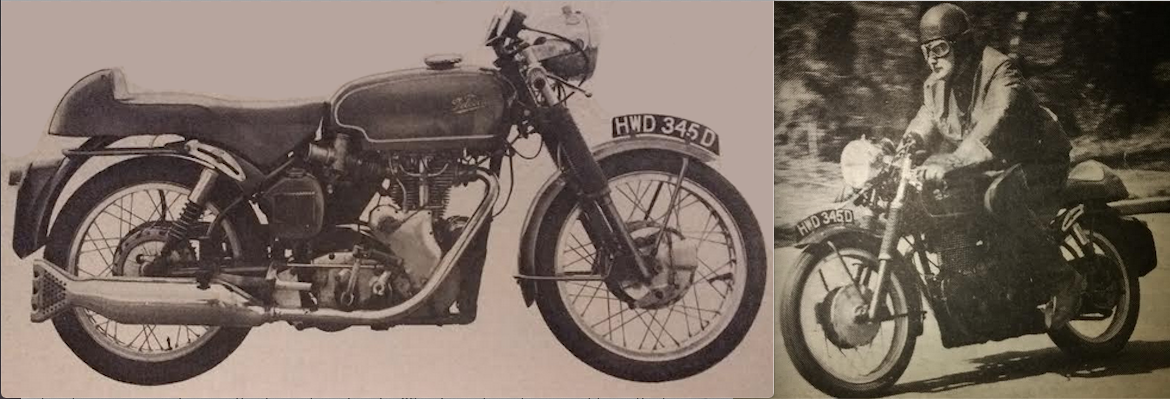
“DESPITE BEING CUT TO A ONE-DAY event with no overnight camping , Sunday’s Brith Motorcyclists’ Rally at Woburn Abbey, Beds, attracted over 2,500 entries. Voted Miss Federation 1969 was Vincent Owners Club member Heather Benyon of Trowbridge, Wilts. Outright long-distance award went to Canadian C Cuthbert (BMW), who started from Munich. Ladies’ long-distance award winner was Hillary Musson of Grimsby, and NHJ Shaw of Bromsgrove topped the veteran-vintage distance contest with a 75-mile run. Concours d’Elegance class winners were Robert Tucker (250 BMW), Ian Lane (1,000 Vincent), Michael Green (350 BSA, 1927), Alexander Ayers (350 Velocette, 1937) and Ron Payne (500 Triumph, 1926). Special-of-the Year award went to David Blanchard (EMC Excelsior.”
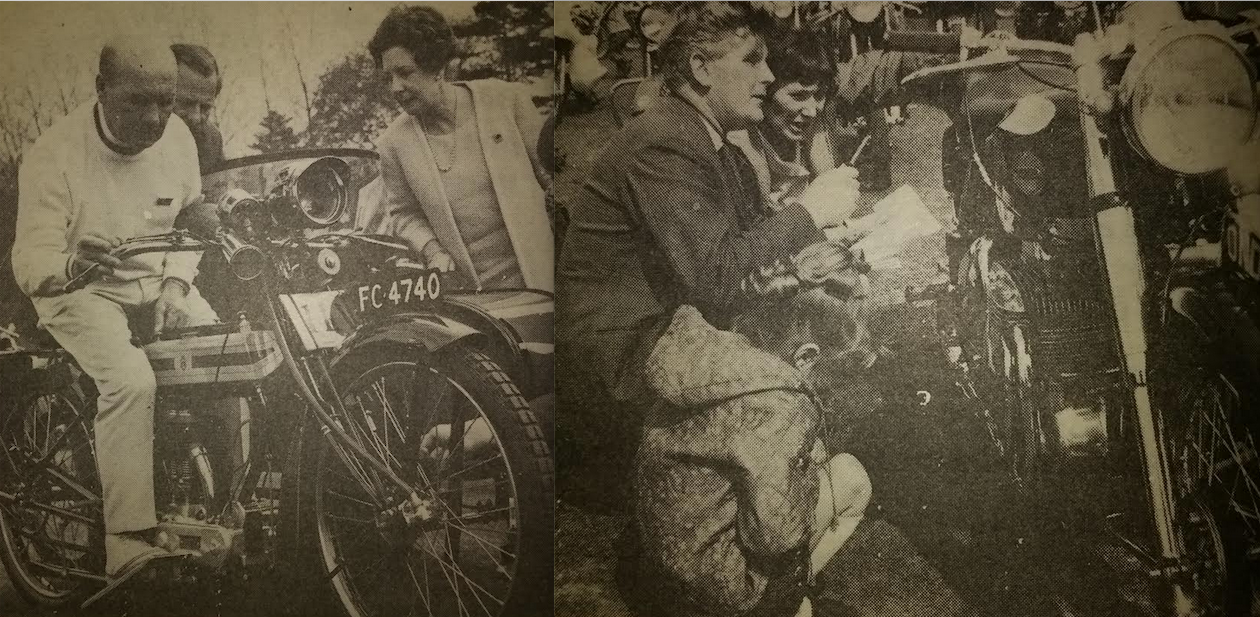
“THREE OF THE MOST IMPRESSIVE outfits on the British grass-track sidecar championship trail this year are the unorthodox car-engined specials of Nobby Golden and Dave Langley and the immaculate 998cc V-twin JAP plot of the Miell brothers, John and David. All three made their title debuts at Easter’s Yeo Valley meeting. But it was Golden’s Renault-powered machine, finished at only 2.45am that day, which caused the biggest stir. This was mainly because of its twin rear wheels, which consist of two 3.50x16in Dunlop rims spoked to a common hub and shod with two Dunlop knobblies. Mounted transversely, exhaust ports facing to the rear, in a frame of mixed channel and square-section members, its 845cc four-cylinder engine drives from a sprocket on the left end of the crankshaft, through a four-speed AMC gearbox. Robbed from his own Ford van, Dave Langley’s 998cc engine is mounted in the sidecar…A large part of the outfit’s frame also originated in the four-wheeled world—as propshafts. A Dodge shaft was used as the backbone and the front downtube is part of a Ford Consul shaft. The Miells’ rare JAP unit…is mounted in the duplex frame with the front cylinder vertical and the other sloping rearward. This arrangement will allow the brothers to install their 650cc Triumph engine as a spare if the JAP blows up in a big way.”

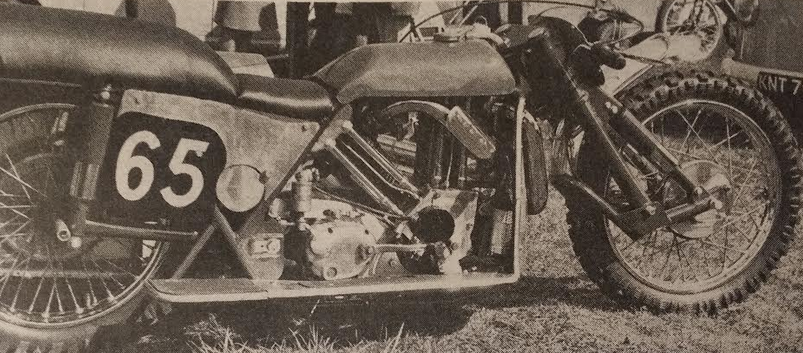
“THRUXTON SIZZLED WITH SPEED on Sunday when Motor Cycle’s international 500-mile Grand Prix d’Endurance returned to the Hampshire circuit. Overcast skies and a spattering of rain midway through the race did not stop Percy Tait and Malcolm Uphill on the winning 650cc Triumph Bonneville from shattering all previous records with a searing average of 84.3mph. It was the first time in the 15-year history of the event that it has been won at over the 80mph mark. The factory prepared Triumph led almost throughout the race, but at one stage Welshman Uphill abandoned all hope of victory. ‘The engine seized and locked the back wheel. I pulled the clutch in and coasted for a while. My heart sank. I said that we were out of the race,’ said Malcolm. After coasting almost to a standstill he dropped the clutch. The engine fired and he toured into the pits. There, under the vigilant eyes of Triumph development chief Doug Hele, the plugs were changed, the bike was refuelled and Percy Tait took over. After a couple of cautious laps Tait opened up and from then on the Triumph ran faultlessly to the end…the bike bikes dominated the dominated the race, taking the first five places with Triumphs first second and third. Sixth home and winner of the 500cc class was yet another Triumph, the Daytona entered by Hughes and ridden by Ray Knight and Martin Carney…Pickrell, lying second to the Tait-Uphill Triumph, arrived at the pits on the pillion of a marshall’s bike. He reported that he had abandoned the Triumph after it had clanked to a standstill with a gaping hole punched through the crankcase by a broken con-rod…Minutes later a completely exhausted Tony Smith staggered into the pits area pushing the works BSA Spitfire that he was sharing with Pat Mahoney. He had run out of fuel and had shoved the 400lb BSA for well over a mile. He collapsed in the pits, the bike was refuelled and Mahoney got away as a BSA mechanic carried Smith to the ambulance room…Barnett, on the other factory Lightning, came in only a lap after taking over from Spencer. The BSA was jumping out of gear; the bike was withdrawn. This incident was quickly followed by news that the Ossa that was leading the 250cc class by a lap had been eliminated by a crash. In the 500cc class the Knight-Carney Triumph continued to run perfectly. It was four laps clear of the Suzuki Cobra ridden by Dave Browning and Grant Gibson with the Whiteways-Woods Suzuki Suzuki a similar margin ahead of the Ducatis of Clive Thompsett and Ron Baylie and Ken Watson and Chas Mortimer.”

Results
Overall: 1, P Tait/M Uphill (650 Triumph) 212 laps, 5hr 55min 39.2sec; 2, JH Cooper/S Jolly (650 Triumph) 208 laps, 5hr 55min 40sec; 3, L Phelps/C Carr (650 Triumph) 207 laps 5hr 56min 17.4sec; 4, AJ Smith/P Mahoney (650 BSA) 200 laps, 5hr 55min 53.6sec; 5, K Buckmaster/G Collis (650 Triumph), 199 laps, 5hr 56min 36.2sec; 6, R Knight/M Carney (500 Triumph) 199 laps, 5hr 56min 52.8sec. 750cc: 1, JH Cooper/S Jolly (650 Triumph) 208 laps, 5hr 55min 40sec; 2, L Phelps/C Carr (650 Triumph) 207 laps 5hr 56min 17.4sec; AJ Smith/P Mahoney (650 BSA) 200 laps, 5hr 55min 53.6sec; 4, K Buckmaster/G Collis (650 Triumph), 199 laps, 5hr 56min 36.2sec; 5, R Avery/C Dixon (750 Triumph), 198 laps, 5hr 56min 37.6sec; 6, A Jeffries/J Barton (650 Triumph), 193 laps, 5hr 56min 50.4sec. 500cc: R Knight/M Carney (500 Triumph) 199 laps, 5hr 56min 52.8sec; 2, D Browning/G Gibson (Suzuki), 196 laps, 5hr 56min 41.4sec; 3, P Butler/D Dixon (Triumph), 188 laps, 5hr 55min 46.8sec; 4, G Green/R Guy (Triumph), 187 laps, 5hr 56min 40sec; 5, P Smart/T Dickie (350 Ducati), 187 laps, 5hr 56min 58.2sec; 6, C Williams/A Peck (441 BSA), 183 laps, 5hr 57min 5sec. 250cc: 1, F Whiteways/S Woods (Suzuki), 191 laps, 5hr 57sec 35.2sec; 2, K Watson/C Mortimer (Ducati) 187 laps, 5hr 55min 46.8sec; 3, C Thompsett/G Hunter (Ducati) 186 laps, 5hr 57min 5sec; 4, T Loughridge/P Walsh (Suzuki) 174 laps, 5hr 56min 32.6sec; 5, E Pitt/C Bond (Yamaha), 173 laps, 5hr 57min 11.6sec; 6, H Kist/T Lablans (Honda) 173 laps, 5hr 57min 18.6 sec.
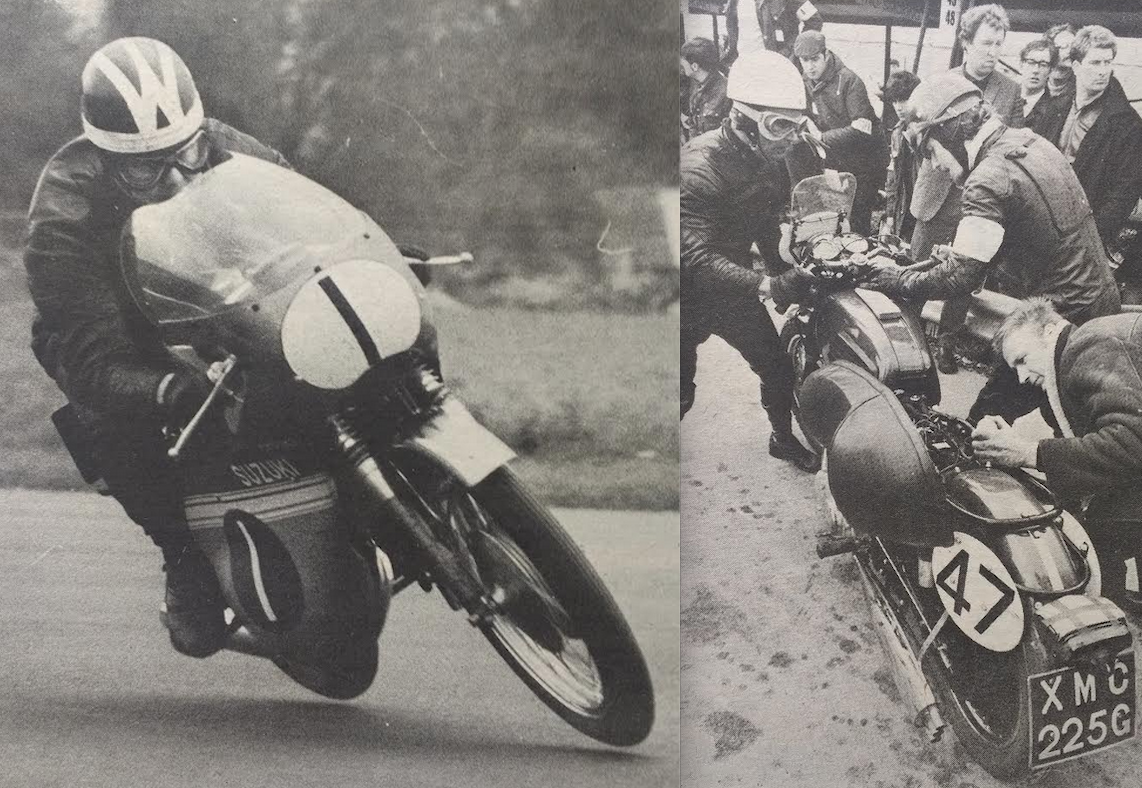
FOLLOWING THE THRUXTON 500-MILER Mick Wollett noted: “Quite a lot of resentment was generated when the two works-prepared Norton Commandos appeared with brand new disc front brakes which hardly anyone, let alone the average clubman, had ever seen before. Yet the Norton entries were in order, for there is a loophole in the regulations through which you can drive the proverbial coach and horses. This bypass to more exotic equipment comes under the heading of optional extras, and it seems to me time it was plugged…it gets a bit naughty when special equipment, not on sale, is used.” (The ACU also took a lot of interest in the Commando discs when they appeared at the Production TT; you’ll be able to read all about it as soon as I’ve finished writing it. But that will have to wait until the new clutch plates are in the GS850 combo…first things first.)
“AS A SUBJECT FOR METICULOUS RESTORATION, a vintage speedway Rudge might seem an odd choice,” Bob Currie admitted. “As Dave McMahon of Coventry, who spent nine years on the project, admits: ‘There’s not a lot I can do with it, now the job is finished. There are no brakes, so I can’t even use it for vintage grass-track meetings—and it’s too big to sit on the mantlepiece!’ However, there’s a historical angle. This is a 499cc four-valver with iron barrel and head, dating from 1928, the infancy of British speedway. At that time nobody had a clear idea of what sort of bike was needed, hence the abundance of extra frame struts to give absolute rigidity. Only later was it discovered that a degree of frame whip was, in fact, an advantage. Details include an ML racing magneto…and a genuine quick-action twistgrip with rack-and-pinion operation. The fuel tank is of polished brass. The centre-stand is quite authentic. No neutral is available with the Rudge single-speed countershaft and clutch unit; the practice was to warm up the engine in the pits on its stand and with the rear wheel spinning. Immediately noticeable is the vast area of chromium-plating, on the front fork, frame struts and mudguards. Again, this is as should be. Chromium-plating was a none-too-successful novelty in 1928, but the Rudge factory had their bright parts plated by a specialist cutlery firm in Sheffield.”

“ALLEGING BAD SPORTSMANSHIP by Giacomo Agostini and MV, Innocenzo Nardi-Dei, team manager of Benelli, withdrew works rider Renzo Passolini from the 350cc class of Sunday’s Spanish Grand Prix [the opening round of the world road-racing championships]. When Benelli arrived at the Jarama circuit, near Madrid, on Friday Agostini was practising although the official training did not start until Saturday. Anxious to learn the circuit, being used for the first time, Pasolini asked track officials if he could practice also. He was told that MV and Ossa had the exclusive use of the course and that he must ask them. His request was turned down and Benelli immediately withdrew. ‘If Agostini wants to practice alone he can race alone,’ said Nardi-Dei. Agostini replied: ‘For weeks we have tried to book the circuit and finally came to an agreement with Ossa. If we had let Passolini on all the others would have wanted to join in.'” After the event Motor Cycle’s Mick Woollett reported: “Two crashes and two wins—that was MV-ace Giacomo Agostini’s score after the Spanish Grand Prix. The first spill came in practice when the double world champion dropped his 350 and went bowling end over end down the track. Within five minutes he was out on his reserve machine…The second came in the 500cc race, soon after he had won the 350cc class…he was pressing Kel Carruthers (Aermacchi) hard when Kel slid off right under the MV’s front wheel. Down went Agostini. ‘I helped him pick the MV up and give him a hand starting it. That was the least I could do,’ said Kel, whose 382cc Aermacchi ended up jammed under a wire fence.” Carruthers was runner up to Agostini in the 350cc race; Bergomonti was runner up in the 500cc race on his Paton…As the field reeled off the last of the 40 laps a touch of drama returned to the race as Bergomonti’s Paton slowed almost to touring speeds. His engine coughing and banging, he completed the distance with the Paton’s rear tyre sliced through to the tube by a dangling right-hand megaphone which had broken completely away from the pipe.”
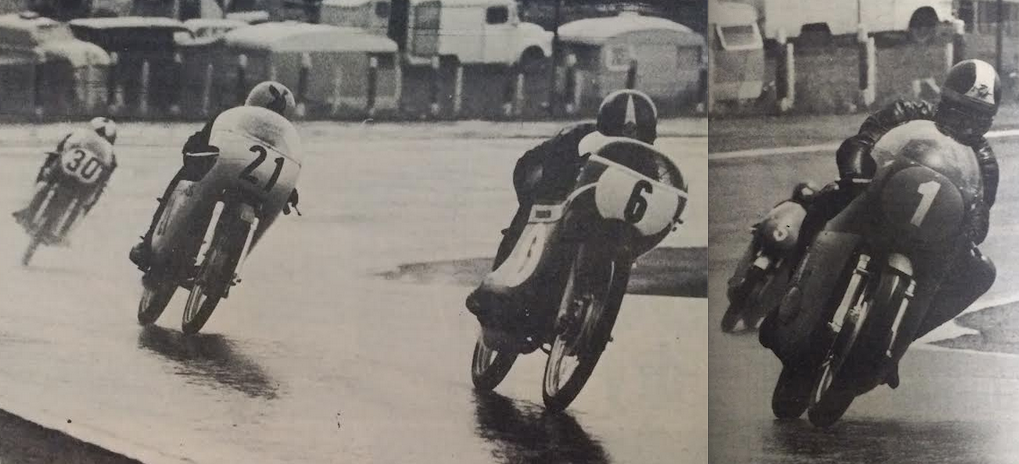
“BY THE NARROW MARGIN of one mark in 50 Jaquie Blendell of London’s 59 Club became the popular winner of the Miss Mermaid competition in Holland’s Starfish Rally. She rode Bumble, her blue-and-white 500cc Triumph. The seven-mile beach ride made the big adventure of the weekend gathering on the Dutch coast. Hundreds of riders sped along hard going, squelched through quicksand, rode carefully round the tide pools and fought their way up through the dunes—with garlands of flowers and special badges for reward. This race was followed by a conducted tour round the tulip fields before the return to the Zandvoort road-race circuit for the bonfire. But, as happened last year, a nervous burgher, alarmed at the red glow on the skyline, called the fire brigade—who formally doused the flames! Though organised by only a small group of Amsterdam enthusiasts, the Starfish always provides a crowded programme.A sprint succession concluded this very successful weekend. Exactly 622 machines booked in. As last year, the British contingent, 37 bikes strong, were second only to the Dutch.”
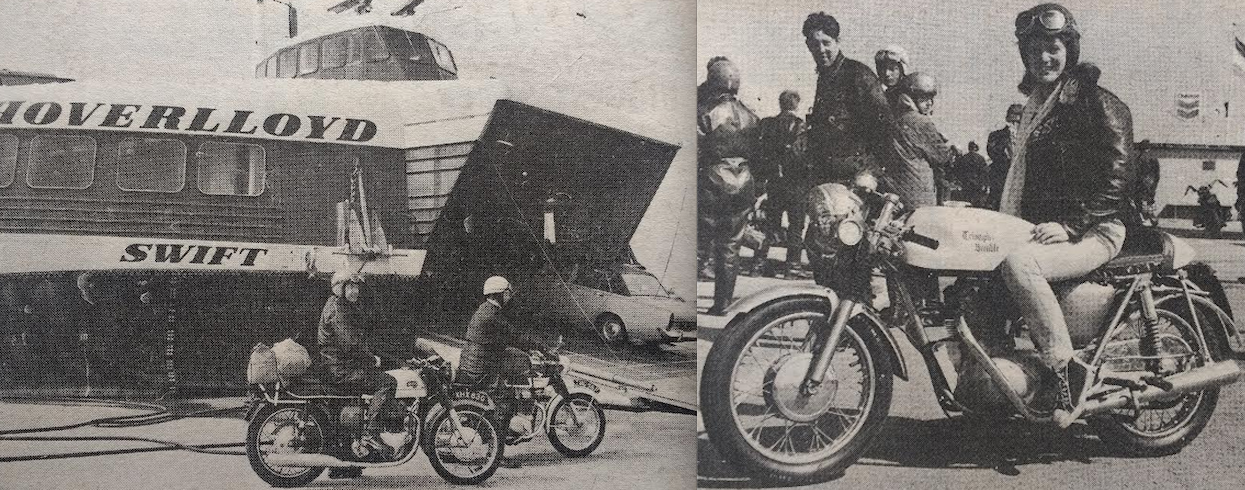
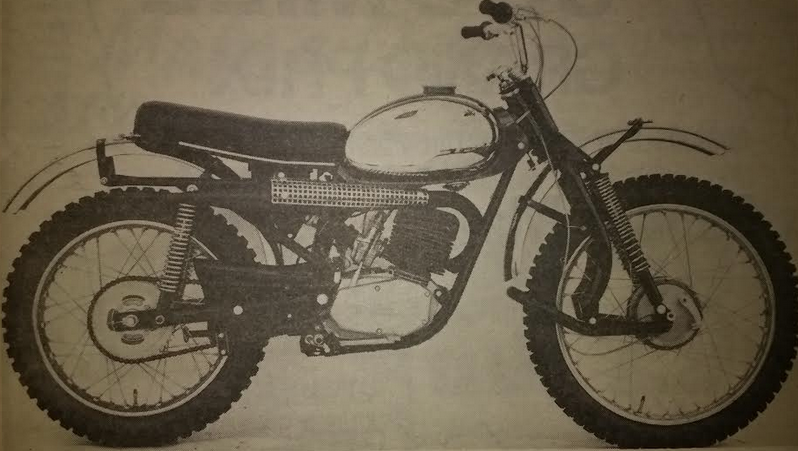
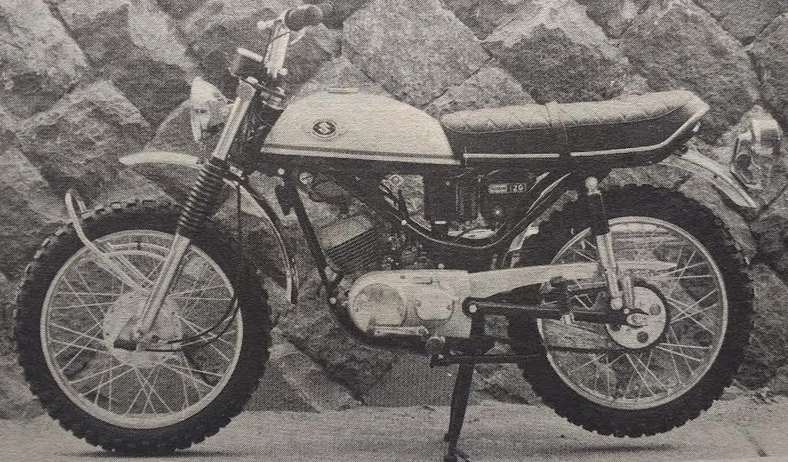
“REPEATING HIS EIFELTREFFEN form of the previous weekend, Karl Hoppe (Urs Metisse) dominated the 500cc class of the Austrian Grand Prix at Salzburg on Thursday. Not only was his race speed a record. He also shaved 0.7sec off Giacomo Agostini’s record lap made on the MV four in 1967, and must now be considered a leading contender for 500cc honours in the classics…Under ideal racing conditions the 125cc class set the ball rolling with a fierce battle between last year’s winner Lazlo Szabo (MZ) and Silvano Bertarelli on a factory five-speed Aermacchi two-stroke. The little air-cooled Italian stroker…seemed a match for the swift MZ rotary-valve six-speeder. Not far behind them till he struck trouble was the Finn Jarno Saarinen on his very neat and fast Puch Tunturi…Having his first big race on the Eddie Crooks Cobra Suzuki, Frank Perris was dogged by ignition bothers and never really got going before being forced to retire. But in the 250cc race he led from the start until three laps from the end.Then his Crooks Suzuki lost an exhaust tail pipe and 1,000rpm. That let Ralph Bryans on a Honda four borrowed from a museum into first berth…Rain on one part of the circuit, which comprises two legs of an autobahn, caused havoc among the midfield men in the 350cc race…veteran Lewis Young (Aermacchi) showed all the youngster’s the way by grabbing a secure second spot ahead of Ulsterman Phil O’Brien (Aermacchi)…Young’s chance of a win evaporated when last year’s winner, the Czech Bohumil Stasa (CZ) slipped past into the lead just before the finish…The gearbox of Helmut Fath’s four-cylinder Urs failed in the last practice session and he arranged to use the gears from Hoppe’s Urs. So the organisers obligingly leapfrogged the sidecar race over the 250 and 350cc races to last on the programme to give the world champion a chance to fit the replacements. Fath repaid by a dazzling play of speed, shaking off ex-champ Klaus Enders (BMW) to win easily…with the rest of the field trailing far behind.”

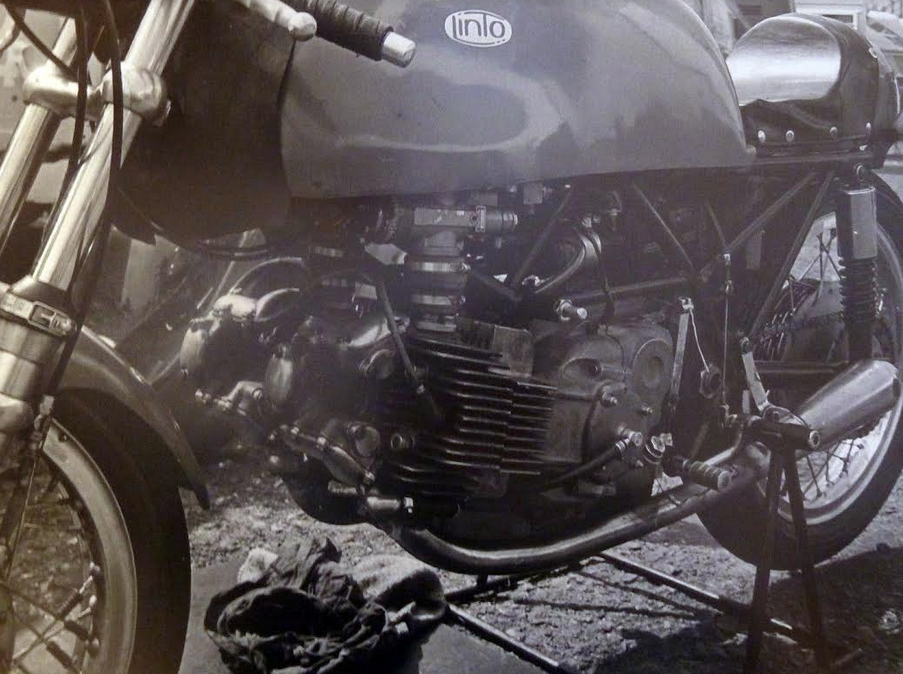
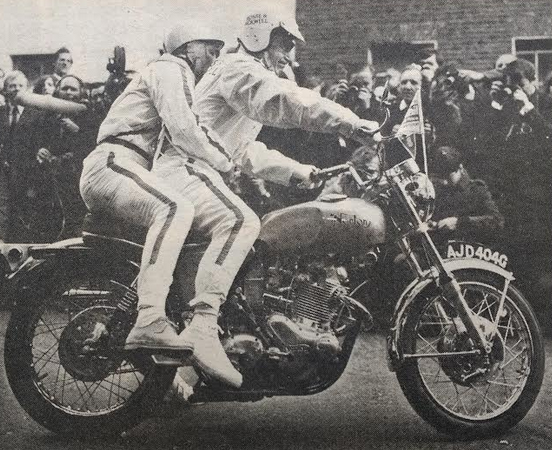
HERE’S AN OBSCURE TITBIT of motor cycling trivia: the first examples of the BSA Rocket 3 and the Triumph Trident were both bought by George Lazenby, who played James Bond in On Her Majesty’s Secret Service. Fearing for their star’s safety producers Harry Saltzman and Cubby Broccoli reportedly confiscated both triples during shooting. Lazenby said: “People think motor bikes are dangerous but, quite frankly, I’d rather be on one than on a gorse. I’m in full control of the brakes and engine. But if a horse decides to go wild, there is nothing I can do about it.”
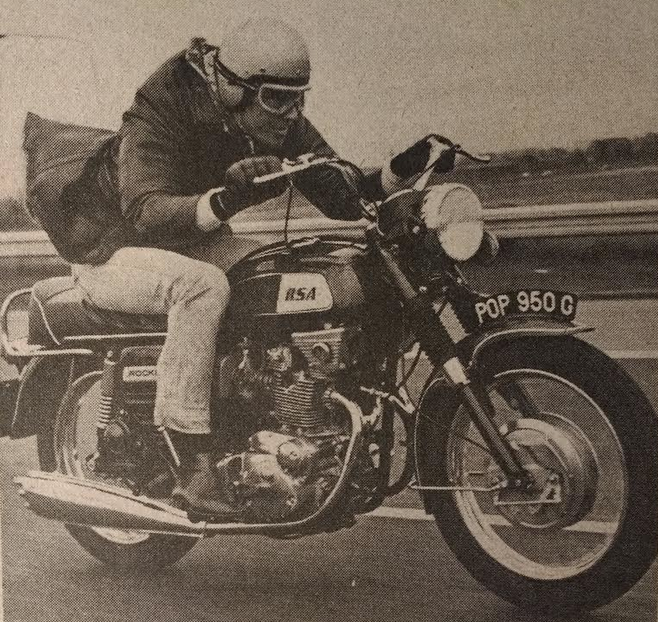
“TRADITIONAL FLYING-BANANA LOOK of MZ roadsters (tank and headlamp shell styled in one) is abandoned in this new version of the East German MZ ISDT-bred two-fifty. The bulbous tank is recessed for the rider’s knees. and, replacing the pivoted front fork, a gaitered telescopic fork carries a conventional headlamp. Chain enclosure and light-alloy rims are retained and the engine is tuned to give 21bhp at 5,200-5,500rpm, tested with air filter, silencer and all accessories. A 243cc two-stroke single, it has a bore and stroke of 69x65mm and compression ratio of 10 to 1. The claimed maximum speed is approximately 80mph. First importers of MZ road machines, not previously available in Britain, are to be Green Motorcycles Ltd, of 369 Abbeydale Road, Sheffield, 7. A limited quantity of ES150 models will be imported at first, followed by the new ETS 250. The two-fifty will cost less than £300.”
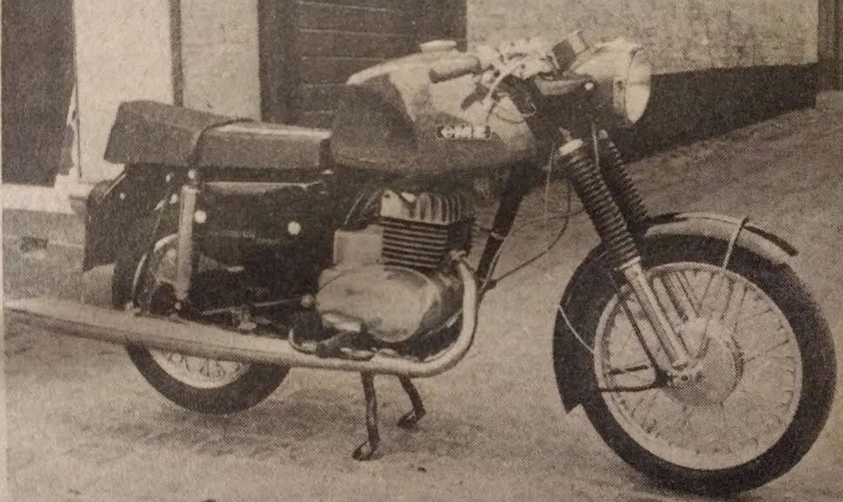
“SINCE JUST AFTER THE WAR, former wall-of-death Herbert ‘Speedy’ Brooker has yearned to own one of the mighty 750cc Zundapp sidecar outfits which acted as mobile gun posts for Rommel and the Afrika Corps’ thrusts across the desert against the Eighth Army. Speedy, who barnstormed around the country fairs with a 1924 Indian after the war…a few months ago the 20-year search was over. The son of a former Luftwaffe officer wrote to Herbert and offered him a complete machine. Now the Clacton, Essex enthusiast is rebuilding the BMW-like twin to its former glory…The half-ton monster is 7ft long and was built to carry two gunners. It has eight forward gears and four reverse speeds. Brake operation is a combination of hydraulic and mechanical systems. The engine drives to the rear wheel and sidecar wheel via a differential.”
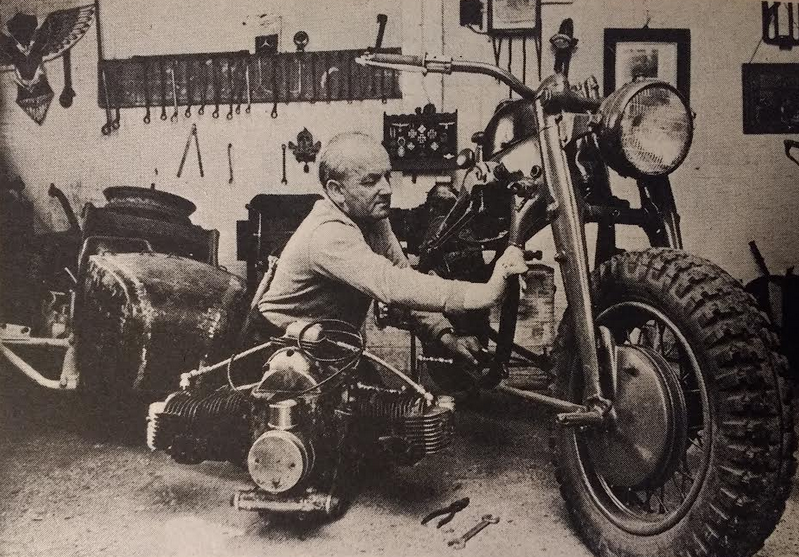
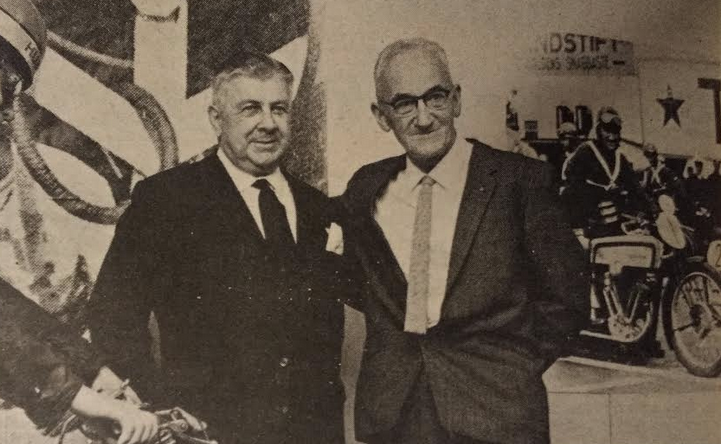
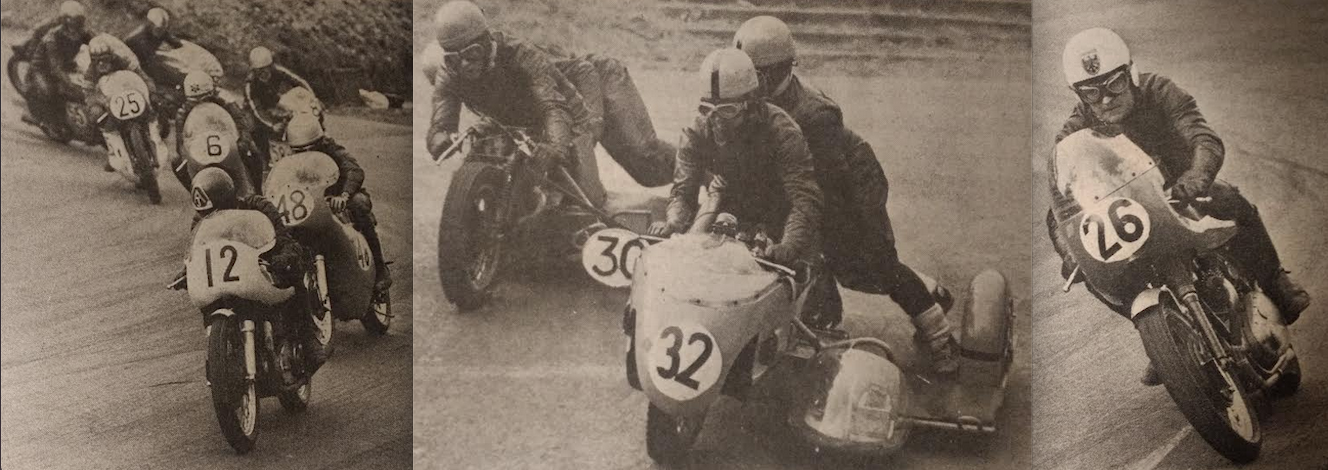

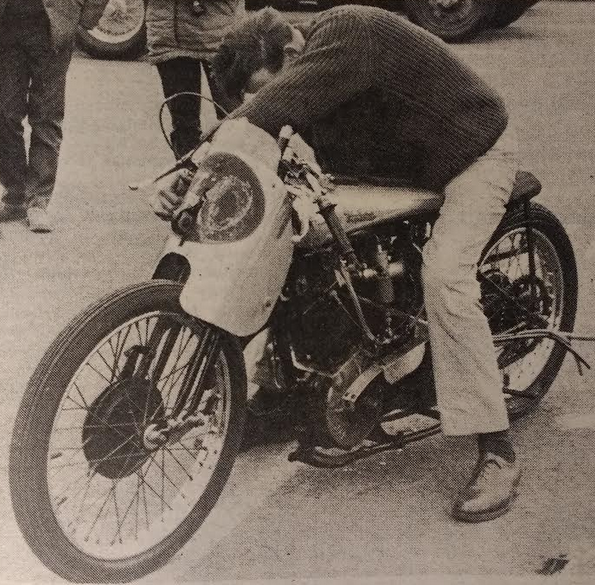
“THE TOP TWO PLACED machines in the Welsh Three-Day Trial give the widest possible variation in ISDT-type bikes. Scott Ellis’ winning 125cc Dalesman Puch is a spindly ultra-light model with a highly stressed engine giving fantastic performance for its size. The second-placed 504cc Triumph of Six Days veteran Ken Heanes is a traditionally British ISDT machine relying on a big Beefy engine to provide the last word in reliability and counter the weight handicap…Search parties were sent out from Trial headquarters in Llandrindod Well, Rads to try and fine Surbiton rider Roy Smith, lost somewhere on the bleak mountains during a storm…As the section on which he had stopped was not approachable by a normal road vehicle, forest rangers were called out to join the search parties which included competitors and Mid-Wales officials. Smith was eventually found 11 hours after he had stopped, huddled in a forest hut, down to his last cigarette and barley-sugar sweet.”
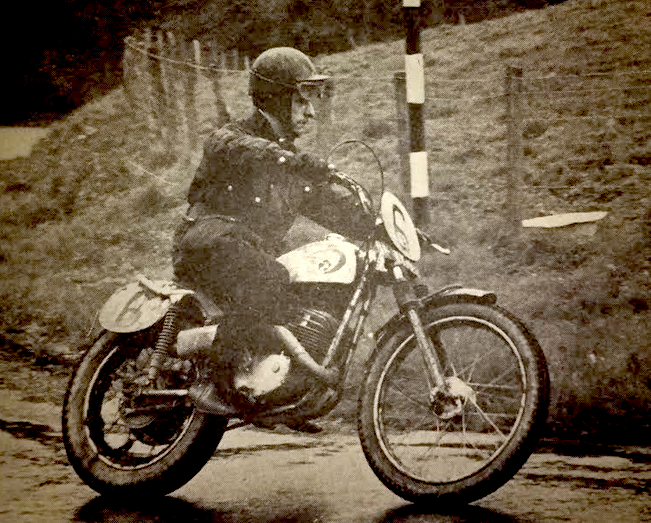
A DOZEN NEW 455CC FIVE-SPEED Ducati singles are to be imported by Vic Camp. Basically an over-bored three-fifty, the 86x75mm engine has desmodromic valve gear and a compression ratio of 9.3 to 1. Peak-power revs are 6,500rpm and the claimed to speed is 113mph. The new model, Ducati’s biggest ever single, which shares the frame and cycle parts of the 250 and 350cc bikes, tips the scales at only 287lb.
“VANDALS TORE UP COBBLESTONES at the top of the West Leeds Club’s freak climb, Post Hill, shortly before Sunday’s open-to-centre scramble. Now club officials have cemented the stones back in an attempt to make the famous old one-in-two hill vandal-proof.”
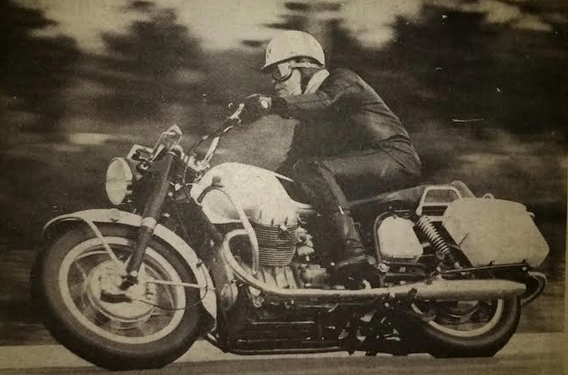
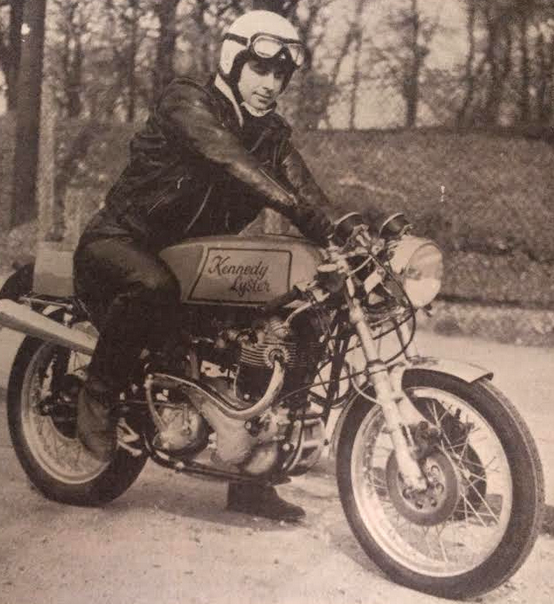
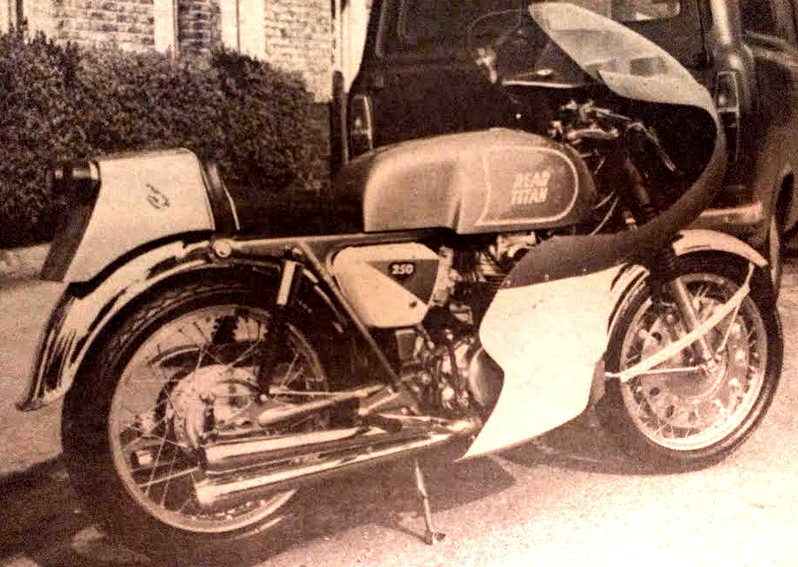
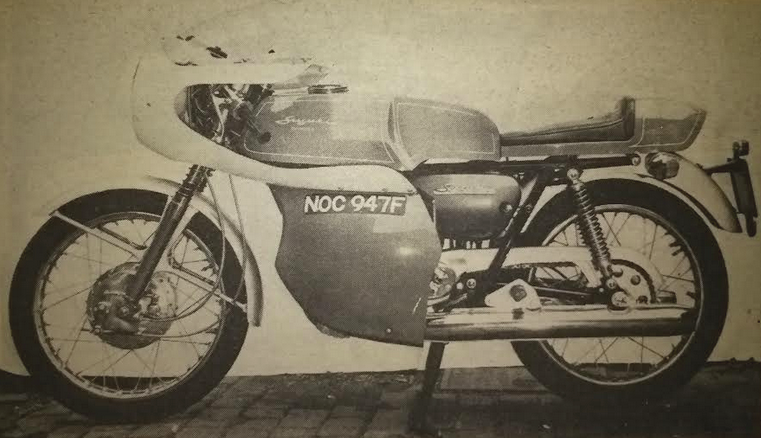
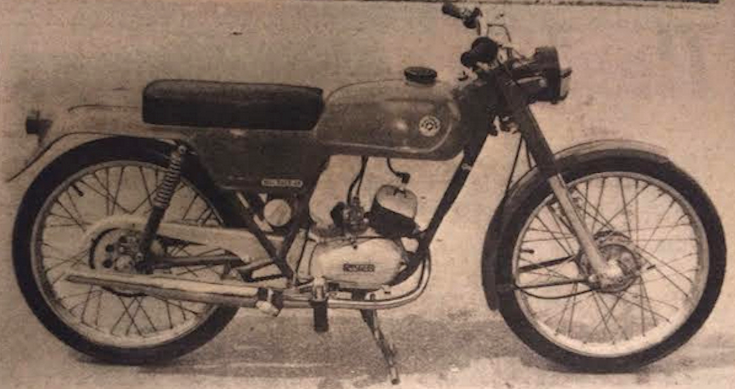
“SHATTERED RECORDS…SUSPECTED SABOTAGE…searing pace…a surprise exclusion—the Saturday and Monday TT races had all the action, drama and excitement the crowds could want…Confounding the cynics, West Germany’s Siegfried Schauzu romped away with the winner’s laurels in Saturday’s 750cc Sidecar TT—twice in 16 hours! They said he had been lucky to win the 1967 and 1968 500cc Sidecar TTs, taking over after others had retired. But this time, ‘Sideways Sid’ left no room for doubt. He led the three-lap race for every one of its 113.2 miles to notch a new race record of 89.83mph—0.72mph faster than Chris Vincent’s 1968 lap record with a 650cc BSA. After that, no one questioned that Schauzu had earned his victory—until the ACU disqualified him! They said he had failed to stop his engine when, goggles smothered with dead flies, he and passenger Horst Schneider had picked up fresh pairs at their pit as they started the final lap.” He appealed, the ACU accepted that “there was insufficient evidence that he had kept his engine running” so he was reinstated. Chris Vincent’s Beeza stopped with transmission problems on the last lap but Peter Brown was runner-up his 750cc BSA twin ahead of Bill Currie on a 650cc Triumph. “A newcomer, he was aiming only to

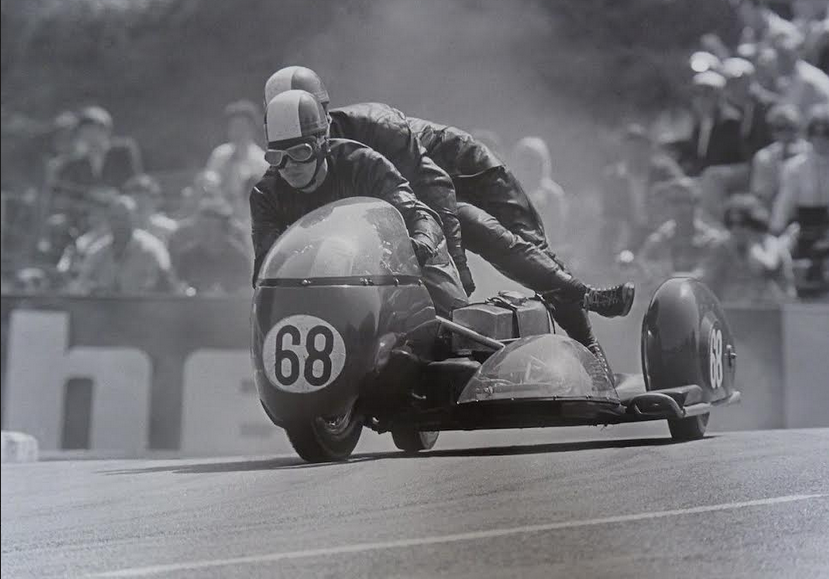
finish and had not arranged for signals so he was astonished to be ushered into the winners’ enclosure…Of the 69 starters, only 33 went the full distance…Klaus Enders beat his Isle of Man jinx—and suspected sabotage—to win the 500cc Sidecar TT. Foiled by a broken con-rod with four miles to go last year, he led all the way this time to notch a race record of 92.48mph…He won despite being forced to strip and rebuild his BMW’s engine on the eve of the race when he and Georg Auerbacher both found sand or something similar in their combustion chambers…Enders’ mechanic Dieter Busch said: ‘Someone put abrasive powder in the carburettor intake. It was sucked into the engine and scoured a piston.’ Auerbacher’s engine was more extensively damaged. He alleged that a sparking plug had been removed and the powder poured in…As a result, both had to weigh in late, but Auerbacher was less fortunate than Enders. Lying third for a time, he stopped briefly on the first lap and then retired on the second, suspecting dirt in his BMW’s fuel line. As expected, the race was completely dominated by West Germans. Early challenger to Enders was Helmut Fath on his home-built four-cylinder Urs. But as the race progressed so his pace slackened, letting 750cc winner Siegfried Schauzu (BMW) into second place. Enders reported a trouble-free race, but criticised the course: ‘Every year it gets bumpier. This year it was very bad in Ramsey, but I am happy to have won at last.’…On a factory four-cylinder Benelli, offered to him during practice week, Australian Kel Carruthers led the Lightweight 250cc TT virtually all the way. It was his first TT win and Benelli’s first success in the Isle of Man since Dario Ambrosini won the 250cc race 19 years ago…Carruthers set the
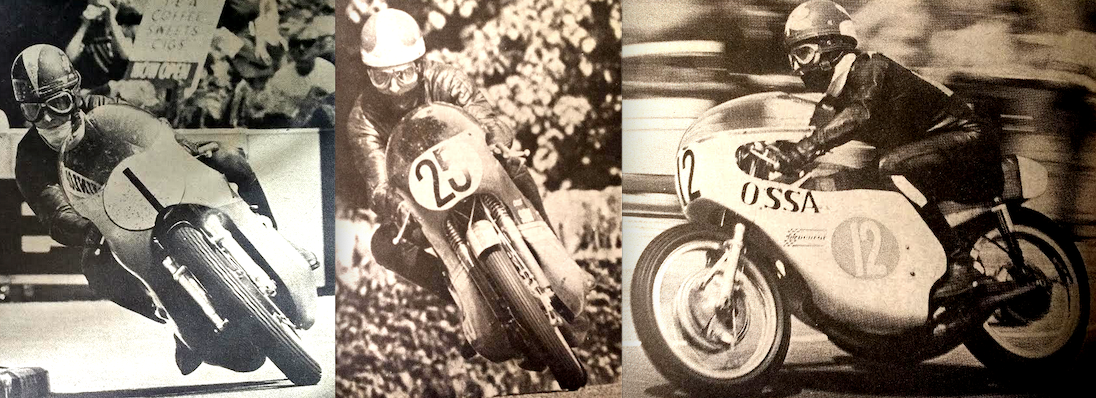
fastest lap at 99.01mph and averaged 95.95mph for the six-lap, 226.4-mile race…For the first three laps…there was a tremendous dice between Carruthers and Phil Read, also on a works Benelli, and Rod Gould, on his rather special Yamaha.” Gould’s juicy Yam ran dry on lap three; Read’s Benelli let him down at the end of lap five. This left Frank Perris as runner-up on a Crooks Suzuki with Santiago Herrero third on an Ossa. “Without any serious opposition, Giacomo Agostini had only to stay aboard his MV three to canter away with the Junior TT for the second successive year. And that was just the problem. Staying aboard was dead tricky because of molten tar on many sections of the Mountain lap. And the unusually hot day reduced the damping of his rear suspension units. Ago thought they, and not the tar, were the cause of many hectic moments on the opening lap. So he eased off and his winning average of 101.81mph was nearly 3mph slower than the record he set last year. From eighth on the opening lap, Belfast’s Brian Steenson (Aermacchi) benefited from a swarm of retirements until, on the last lap, he snatched second place from Jack Findlay (Aermacchi). Of the eight TR2 Yamahas which started, only two survived to finish in the first dozen and of the 53

finishers out of 100 starters, the vast majority were four-strokes. The flaming sunshine took an inordinately heavy toll of the two-strokes. The manufacturers’ team prize went to the Seeley trio—Tom Dickie, Steve Jolly and Mick Andrew. Obviously enjoying himself, the Duke of Edinburgh was introduced to the riders on the front ranks of the grid before the off…Prince Phillip heard the cheer as Alan Barnett (Kirby Metisse) out-accelerated Giacomo Agostini’s MV three in the opening 200 yards. Then Ago was gone, on the headlong dash to Ballacraine…Twice topping the ton lap, and hoisting the race average to a new high at 99.99mph, Welsh ace Malcolm Uphill blasted his works-entered Triumph Bonneville to an all-the-way victory in the 750cc section of the Production Machine TT. Though troubled by unwanted neutrals when changing down on the first of his three laps, Paul Smart (Norton Commando) improved his timings each time round to run home second, 25.8sec astern of Uphill. Third place went to consistent Darryl Pendleberry on another Triumph. Overshadowed by the bigger machines the five-hundreds and two-fifties fought their own battles—and provided the drama. Leader of the 500cc class during the opening lap, Tony Dunnell crashed his whispering three-cylinder Kawasaki through the fencing at the 33rd Milestone on lap two, collecting facial injuries and a broken arm; that left Graham Penny on a Honda CB450 to get home ahead of last year’s 500cc winner, Ray Knight (Triumph Daytona). Main upsets came in the two-fifty section. There was a fresh leader on each lap. First time round it was Charles Mortimer ahead, but his Ducati was to suffer a whole catalogue of misfortunes before he eventually finished third. Then
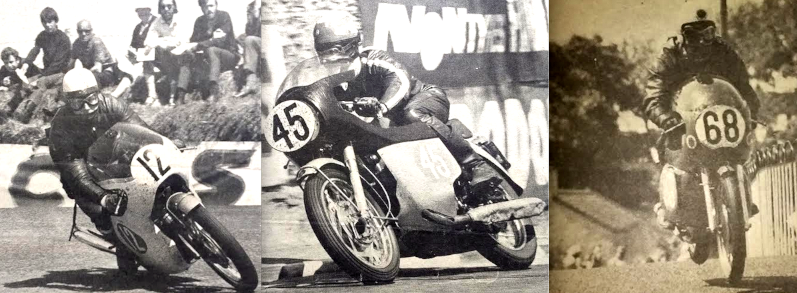
John Williams (Honda) took over, only to run out of petrol and push in from Hillbery for 10th and last in the class. So in the end it was a very surprised Mike Rogers on his four-year-old Mach 1 Ducati who gained the 250cc laurels. He had not seen leader Williams drop out and no idea of his placing until waving programmes gave him the clue…There was nothing unexpected about Dave Simmonds’ fine win in the Lightweight 125cc TT. He and his Kawasaki disc-valve twin, on loan from the factory, had led the practice leaderboard. In the race, he was out front from flagfall throughout the three laps, finally finishing nearly six minutes in front of Aussie Kel Carruthers (Aermacchi). With no one to push him, Simmonds’ 91.08mph average and fastest lap at 92.46mph were well down on the records made last year—99.12mph for the race by Phil Read (Yamaha) and 100.32mph for the lap by Bill Ivy, also on a Yamaha. (However Simmonds could not afford to nurse his water-cooled eight-speed engine, for unless it was buzzing in the 12-14,000rpm power band it was prone to oil a plug). The real drama came more than three hours after the race was finished. Fred Launchbury, the 37-year-old Raynes Park, London dealer, rode the race of his life to run home third on his Bultaco, but when the engine was stripped for measuring it was found to be 1.2cc over 125cc! The clerk of the course had no option but to exclude him and
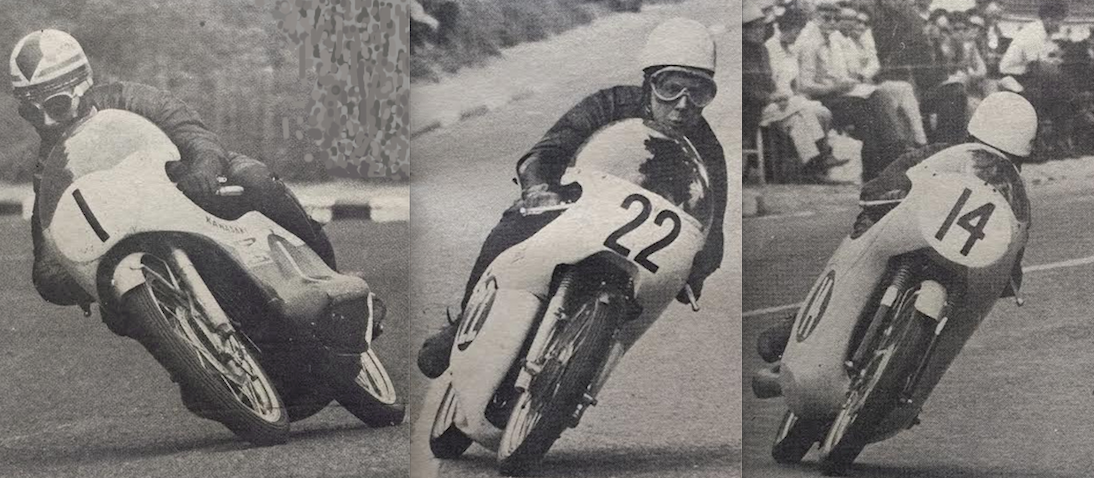
award third spot to the smallest rider on the island, Gary Dickinson (Honda). Said Launchbury afterwards: ‘Because of seizures I had to rebore the barrel to 0.010in oversize and fit a stock piston. It never occurred to me to calculate the capacity. I assumed it would still be within the limit as the standard capacity is 124.88cc.’ As in the other races of the week the retirement rate was highish and only 25 of the 46 starters finished.” (Among them, in 22nd place, was Rodney Gooch on a BSA Bantam, ahead of two Hondas, a Bultaco and a Kawasaki)…”‘Forza Ago’ proclaimed the cup-final-style banner waved aloft by a group of excited Italian enthusiasts as Giacomo Agostini crossed the line on a three-cylinder MV Agusta to win the Senior TT. The reigning world champion had little need of encouragement from his supporters. The ultra-reliable MV being by far the fastest bike in the race he able almost to cruise to victory. Minutes after finishing the six-lap 226-mile race he admitted with a smile: ‘I did not go fast today. It was not necessary.’ This was the dashing Italian’s fifth TT victory and it completed his second Junior-Senior double in succession—a feat previously achieved by only two legendary racing characters, Stanley Woods and John Surtees. The winning average of 104.75mph was within 1mph of the record set two years ago by Mike Hailwood (Honda) while fighting a desperate duel with Agostini, which
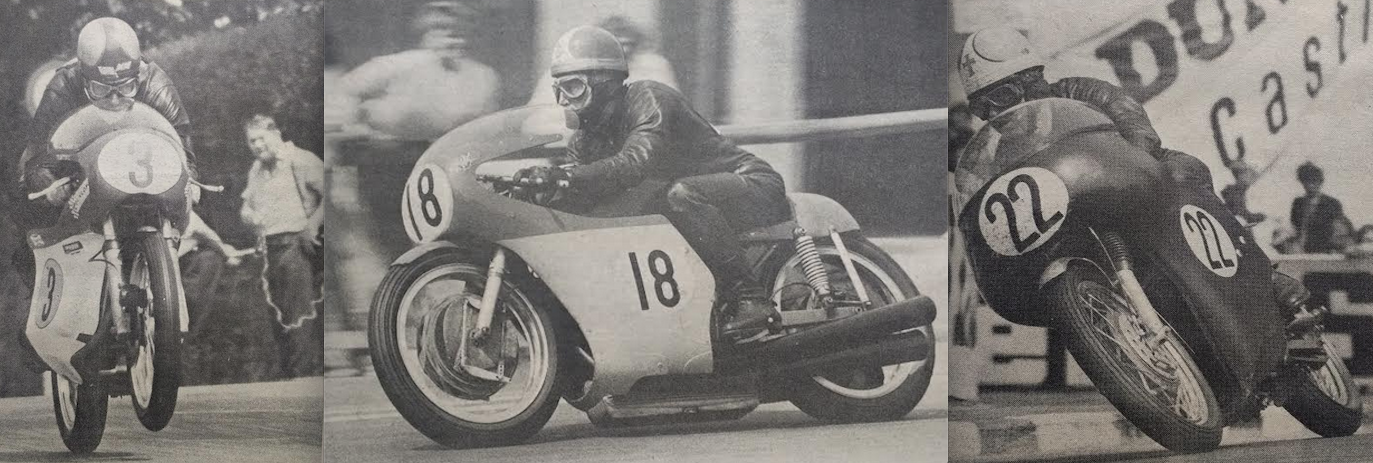
ended only when the Italian’s chain broke on the fifth lap. But while Agostini’s win was the biggest certainty in TT racing since the days of John Surtees, the battle for the places behind the Italian maestro were tremendous. With a sizzling lap of 100.03mph, just a fifth of a second inside the magic ton-up figure, Alan Barnett consolidated second place on lap two. And, on the special Tom Kirby-prepared Matchless-powered Metisse, the 25-year-old Iver mechanic gauged his place like a veteran and held the place to the finish. Runner-up to Giacomo Agostini with the only single-cylinder lap of the race at over a ton, Alan Barnett might be expected to be reasonably pleased with his performance in the Senior TT. Not so this rider of Tom Kirby’s immaculate scarlet-and-white Metisse racers. ‘With its engine lower and farther forward, the new-style Metisse handles so much better than the one I raced last year that I was confident I could beat any time I’d done then,’ he says. ‘In practice for the 1968 TT I lapped at just over the 100 mark, so I was aiming for 102 this year. But unfortunately, the engine was just a little off song and things didn’t work out the way I’d hopped.’ Behind Barnett the 1966 Senior Manx GP winner, Tom Dickie, on a Gus Kuhn Seeley, fought out a terrific duel with Isle of Man specialist Derek Woodman on another Seeley, one of three in the race fitted with the new extra-long megaphone. Both lapped at over 99mph and only 7sec separated them at Ballaugh halfway round the last lap. But brake trouble was slowing Woodman, and Dickie clinched third place. This, combined with his fourth in the Junior, won him the Joe Craig Trophy for the most successful rider on British machines.”
MOTOR CYCLE’S PEERLESS TECHNICAL EDITOR Vic Willoughby wrote a two-part technical review of the TT machinery, including a review of the 350cc Jawa V4 two stroke: “When Honda quit racing 18 months ago, the Senior and Junior four-valve MV threes were left without serious opposition, and there has been no apparent development in them. In cool air, the 347cc (56x47mm) engine gives 68bhp at 14-15,000rpm, though race-chief Arturo Magni estimated that the hot weather of Junior race day took 4bhp off the peak. For the 489cc (62x54mm) engine, peak power is about 85bhp at 12,500rpm. In the 125 and 250cc classes, however, Honda’s withdrawal at first left the Yamaha two-stroke vs four-stroke battle that had raged so fiercely for years on a purely technical front. Yamaha’s subsequent withdrawal, at the end of last season, left the four-stroke Benelli four as the best two-fifty on the Island. And, though Derek Woodman’s MZ and Rod Gould’s private Yamaha TD2 beat it for speed, Benelli are sitting pretty. They won in spite of their better bike, Phil Read’s four-valver, being below par from the start; and they hope to have their much lighter and more potent air-cooled V8s raceworthy for 1970. There are signs, however, of a revival of the struggle between four-stroke and two-stroke—and in the 350cc class at that. For though it failed to survive its first TT practice lap, the new Jawa V4 was timed at 143mph past the Highlander while far from full out, and that compares well with Agostini’s 150mph in the Junior race. Given thorough development and the right rider, the Jawa could well challenge the MV three and Benelli eight in the 350cc class…top speed is little short of 160mph and the engine is already giving 70-74bhp at 13,000rpm. Translated into bhp/litre/1,000rpm, an excellent measure of breathing and burning efficiency, this works out at about 16. And good though that is, it shows scope for improvement, for MZ, past-masters at efficiency, have passed the 20 mark in their 125cc single and 250cc twin. The Jawa four promises to make its mark soon on the faster circuits. Slimmed, lightened and piloted by a world-class jockey, it could be so competitive all round as to send the four-stroke designers scurrying back to their drawing boards.” Some years later I was in the Island covering the road riding events that were held on non-race days, and serving as a gopher during race days. As always Motor Cycle (by now renamed Motor Cycle Weekly) was based in the Sefton on Douglas Prom; I was billeted with Vic. After the first night he pointed out, not unkindly, that he had a busy week ahead of him and needed his beauty sleep, which he was denied by my snoring. I spent the rest of the week sleeping in the bath. Happy days—Ed.
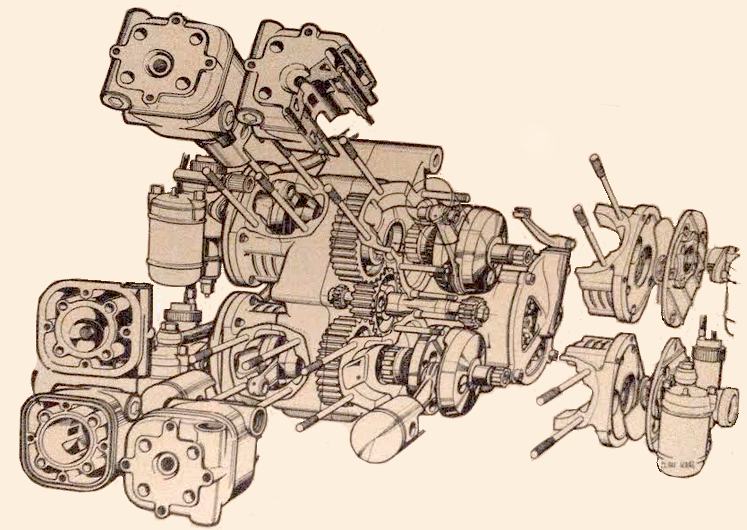
GREEVES DIRECTOR BURT GREEVES broke a collarbone and three ribs during the TT, and he wasn’t racing. Greeves was en route to Ballacraine to watch the racing when his combo, powered by one of his factory’s 360cc moto-cross engines, was involved in a collision with a car.
“HOPES OF NEW FINANCIAL BACKING for motor cycling and other sports on the Isle of Man were dashed last week by the Island’s Legislative Council. They rejected a proposal already approved by the House of Keys to use money from a betting-shops tax to subsidise sport.”
NOT EVERY TT ENTRANT rode an exotic racer. Godfrey Benson’s Suzuki Super Six completed the 250cc Production TT and was quick enough to earn him a Bronze replica. It cost him £70 and had covered 21,000 miles with four previous owners, two of whom used it to pass their L-test. The only race preparation was the fitting of a new piston.
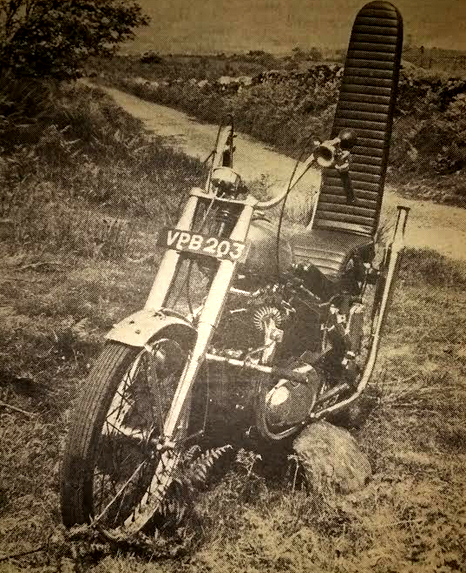
“OUR DICTIONARIES AREN’T ALWAYS so out of date as you might suppose. Take the word gear, for instance. According to my dictionary, one definition is ‘whatever is prepared for wear, hence dress or ornaments’ and that derives from the Anglo-Saxon gearwe, meaning habiliments or equipment.”
“AS A LONG TIME READER of Motor Cycle in both magazine and newspaper format, I welcome anything that helps to balance the racing reports and pictures that nowadays fill the issues. I cannot help thinking that all your readers must be either racers or want their mounts to seem as if they were. Those of us who have an interest in all things connected with motor cycling now have to look elsewhere to obtain an overall picture. If we are to have only news and reports, then at least let us have all the news that affects us. There was not a mention of the weekend at the seaside resorts when, apparently, the last of the rockers were on the rampage, yet I imagine that rockers also read Motor Cycle. Because it’s nasty and detrimental to our image does not mean it isn’t news. If certain places are good to keep away from, then this is news as well. Similarly, certain disgraceful incidents at the Brighton Show were swept under the carpet. I am firmly of the opinion that the motor cyclist wants to know everything that’s going on which may affect him, his sport, his image, and to see both sides of the coin. If there is a nasty smell, simply ignoring it won’t make it go away.
John A Neave, London W10.”
“I WAS THOROUGHLY revolted by the bike-riding hooligans at the Brighton Show who were decked out in imitation Nazi helmets and insignia. Even so long after the war there are plenty of people for whom such tasteless aping will evoke painful and unpleasant memories. I don’t blame the clods who wear this stuff with such satisfaction; they probably know no better. But whatever organisation is selling it should be put out of business as soon as possible.
D Harvey, Eastbourne, Sussex.”
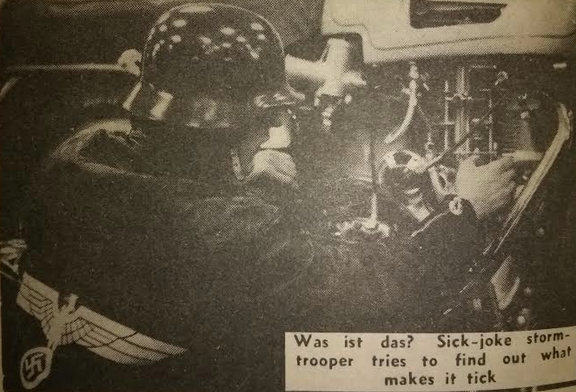
“AFTER READING THE PUBLICITY given recently to ‘swastika-bedecked thugs’ I should like to express my utter disgust at the childish attitude which some motor cyclists display on the subject. I should have thought that after the idiotic mods-and-rockers era, there would have been a little more give and take over the dress of motor cyclists…people have the right to dress exactly as they see fit. I’m no Hell’s Angel on a chopper; I’m a rocker on my idea of transport, and I like to be left alone to live my way, not someone else’s.
Norman Reed, Brundall, Norfolk.”
“NOW THAT A NATIONAL NEWSPAPER has carried a full-page article on the Hell’s Angels I am sure thousands of its readers will equate all motor cyclists with the immature people depicted in the feature. As motor cyclists we are by now cynical about our public image, but it is beyond a joke to be labelled as Nazis, perverts and mentally-retarded exhibitionists.”
John Best, Springfield, Essex.
“I’D LIKE TO EXTEND a warm welcome to Bill Shergold, who recently made the move from Paddington to St Bartholomew’s, Dover. His induction, conducted by the Archbishop of Canterbury, took place on Saturday, May 24, and it was good to see that a number of 59 Club members from London attended.
CM Barnett, Dover, Kent.”
Father Bill lost no time in setting up the Dover 69MCC which thrives to this day. I try not to boast but my Panther won a special award for surviving my mechanical ineptitude at the club’s 1976 White Cliffs Rally. My lady and I were delighted to be invited to the club’s 50th anniversary party.
“READER DAVID FARTHING THINKS that Triumph and BSA should cut the Americanese from their advertising. But why? After all, everything they make is for the Americans. All we can hope for are the bits left over from the export market. I bought a BSA because I thought it would be easy to maintain with such a large dealer network. But what do I find? Agents show me parts order forms sent to Small Heath six months previously and still not honoured. Now, to crown it all, I am told there is no longer an exchange service for BSA units. All parts have to be bought at full list price.
MA Coombes, RAF Valley, Holyhead.”
A BONNEVILLE 650 RIDDEN BY George Collis and Ken Buckmaster won the Spanish 12-hour international endurance race a Jarama, near Madrid, completing 338 laps (715.19 miles) at an average 59.59mph. Runner-up, just a lap behind the Triumph, was a 250cc Bultaco ridden by Juan Bordons and Benjamin Grau. A works 360cc Bultaco led for nine hours until it dropped out with a broken crankshaft.
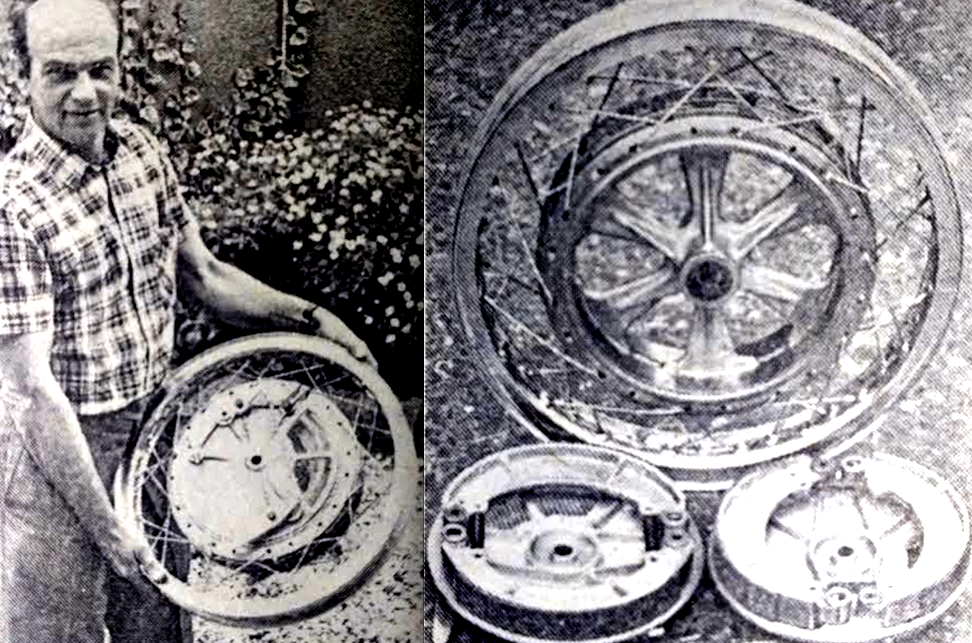

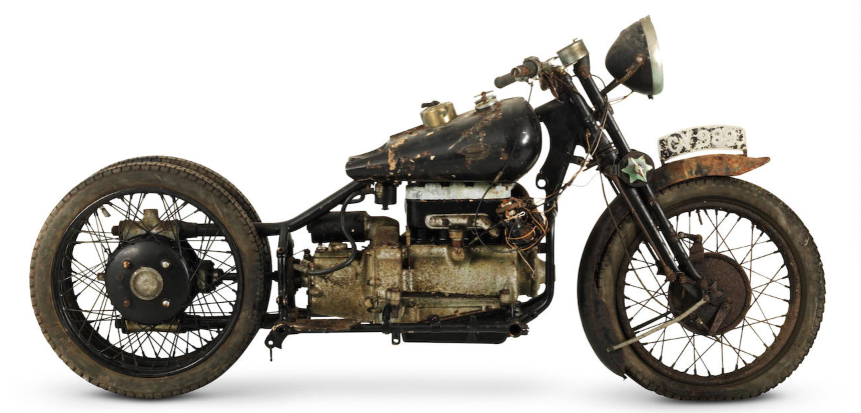
THE 10 FRANC ENTRY FEE to the Chamois Rally covered a cheese-and-wine party, wine with Sunday dinner and entry to a rally with prizes including three motor cycles.
“BRITAIN’S ROAD RACING PRESTIGE slumped in the French Grand Prix, when all five races were won by continental riders from five different countries.” Fastest 50 was a Kreidler ridden by Dutchman Aalt Teorsen. The 125 class was won by Frenchman Hubert Auriol on a Yamaha. Top of the 250s was a Spanish Ossa ridden by Spaniard Santiago Herrero. Not surprisingly the 500 winner was Giacomo Agostini on his MV Agusta, both Italian, of course. And equally unsurprisingly, sidecar honours went to German ace Helmut Fath on his URS.
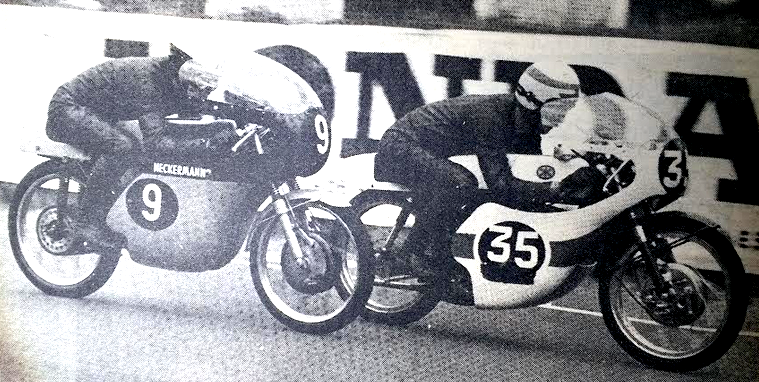
MOTOR CYCLE EDITOR HARRY LOUIS was not best pleased with the Beeb: “In the past three months or so, the BBC seem to have gone out of their way to ruffle our feathers. We had that episode in The First Lady series which rehashed all the old rubbish about rockers. Then, a few days later, came another showing on the rocker theme in a 24 Hours programme. Next, Edward Wilson, on behalf of motor-cycle manufacturers, felt obliged to protest to the BBC about the preparation of a documentary film on—yes, rockers! Now we come right up to date. To the time given to the TT on television and radio…it was absurdly inadequate. What goes on the ivory tower of the BBC? There seems to be plenty of programme time for publicising the antics of a tiny and objectionable proportion of the motor cycling community but next to none for the magnificent sport to be see in the Isle of Man…It is manifestly unfair to give a distorted impression of motor cyclists by featuring rockers, and equally unfair to provide such scant coverage of the TT races.” Columnist Nitor also had his say: “I go all the way with those fans who berate the TV people for their miserable coverage of the TT. The brutal truth, I suspect, is that the motor cycling is not a sport followed by the Best People. You think I exaggerate? Very well—go to your local library and get down that weighty tome, Who’s Who. Moss, Stirling, who didn’t win a world championship in his entire career and hasn’t raced for seven years rates no further than 62 lines. Hailwood, Stanley Michael Bailey, nine times a world champion and Britain’s greatest racing motor cyclist of all time, is not even mentioned!”
“PRICE OF THE FRENCH VELOSOLEX moped has been cut by the importers, Motorised Cycles Ltd, to £39 10s, including purchase tax. The Velosolex, originally sold in Britain for £50 17s 11d, is at first being offered at the new price only by the Jet petrol station in Purley Way, Croydon.”
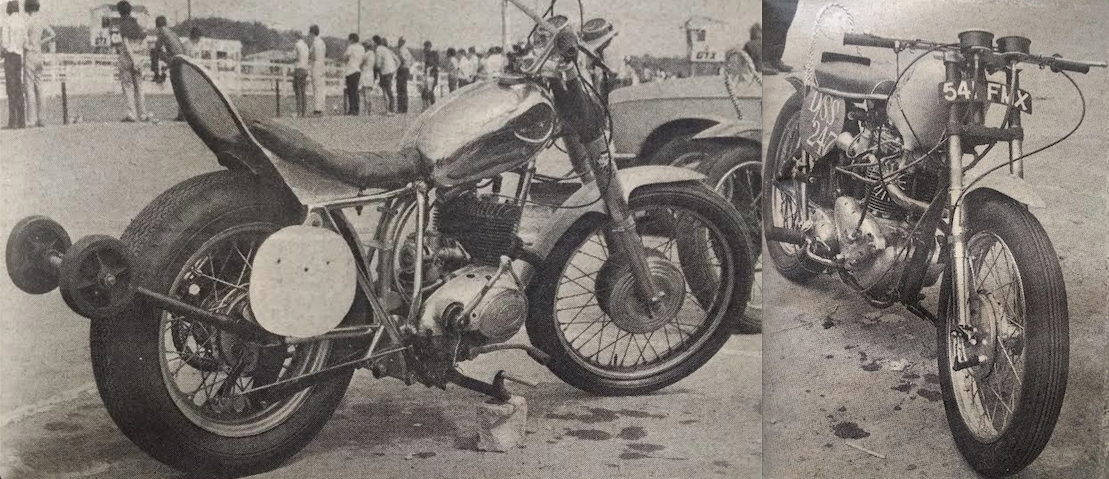
“ANTICIPATING COMPULSORY PASSENGER INSURANCE two big companies have announced premiums for unlimited liability risks on motor cycles. Previously this was unobtainable at any price, despite Transport Minister Richard Marsh’s intention to make such cover obligatory…British Motorcyclists’ Federation secretary Jack Wiley said: ‘Our worst fears are confirmed. These premiums are excessively high for the average motor cyclist.’ And at the BMF annual meeting delegates from the 82 member clubs called for an early meeting with the British Insurance Association to ask for lower rates.”
“THE MODERN MOTOR CYCLIST is fast becoming akin to the car driver, and rides without even a plug-spanner in his tool kit. He can afford to pay out £300 to £400 for a machine, so he can afford to get it repaired in a workshop. I am one of the few riders of the old school, and I’ll tell you how to recognise one. He will be riding a pre-1960 bike with character. He will have with him a complete set of spanners, spare inner tube, plugs, files, grinding paste, spring links of all sizes, string, wire and a tow rope. I ride a 1957 Dragonfly and two 1953 Square Fours, one solo, and the other with a chair.
E Howard, Tyldesley, Lancs.
“REMOTE THOUGH THE VENUE WAS at Loch Vennachar, to the west of Callender, 87 riders turned up for the Forth Valley Club’s Trossachs Rally. One of them, R Laithwaite, rode his BMW all the way from north-west London to win the prize for the farthest distance travelled. Another of the Trossachs gathering was John Graham of the Tees Tornadoes, who travelled via the Three of Clubs Rally, at Whitmore Park, Basildon, Essex, where he won the long-distance award with 311 miles on his 1968 Triumph Trophy.”
“BRITISH POLICE ON TRIUMPHS won the makers’ team award at the Circuit des Pyrenees high-speed mountain rally at Pau. Best of the British riders was PC Dave Minskip, on a 750cc Trident, with 290 penalty points. The other members of the three-man team, Sergeant Len Farmer and Inspector Alec Smith, both on 650cc Saints, scored 385 and 471. Outright individual winner was Vega Carmoa (230 Ossa).”
“A FIVE-HOUR RIOT by drunken youths who invaded the normally peaceful town of Assen, headquarters of the Dutch TT, on the eve of Saturday’s races, was finally quelled at four in the morning after the police had made 80 arrests…they finally won control after mounted police and tear gas had been used.”
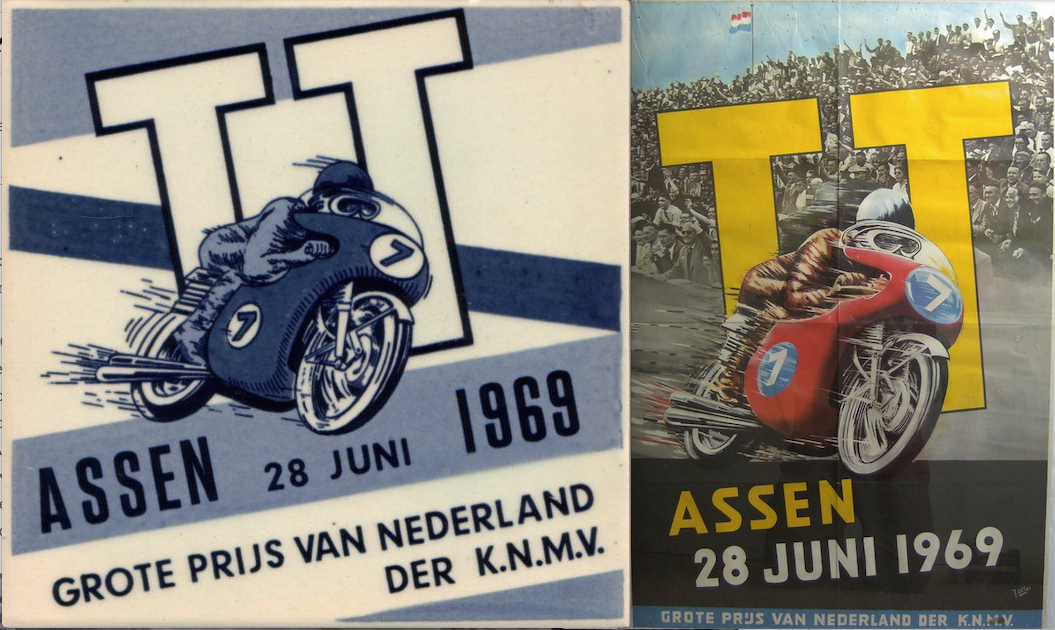
“RIDING THE FOUR-CYLINDER JAWA with typical verve and dash, Bill Ivy gave Giacomo Agostini and his MV Agusta a real run for their money in the 350cc class of the Dutch TT…Urged on by a record crowd of over 150,000, Ivy hurled the Czech two-stroke around the magnificent 4.8-mile circuit to such good effect that he caught and passed the Italian world champion at the end of the first lap. He clung to the lead for two laps. Then the Jawa started to misfire slightly on one cylinder. Agostini regained first lead and pulled away. The dice seemed to be over. But the Jawa chimed back on to four pots and was in business again. With the bike flying, Ivy whittled Agostini’s lead away and gaining 100 yards a lap, flashed into the lead on lap 12. Agostini, in trouble with cramp in his throttle wrist, looked a beaten man as Ivy drew away. Not for long, though. The Jawa ignition system played tricks again and, back on three cylinders, Ivy had no

answer as Agostini, with a record lap at 91.38mph, regained the lead and went on to win. Agostini’s task in the 500cc class was very much easier. In fact, the fastest lap of the whole day was his 350cc round when chasing the Jawa! It was a good meeting for Italy, for Renzo Pasolini (Benelli) recovered from his broken collarbone, scored a fine win in the 250cc race, his first world-championship success of the year. But Rod Gould and his Yamaha gave the Italian bikes a run when he led the race for the first six laps with Pasolini and Yamaha new-boy Kel Carruthers screaming in hot pursuit. Then Gould’s luck, which had deserted him when he was holding third place in the 350cc race with just over a lap to go, let him down again. After a pit stop to change a plug, he eventually finished fourth behind Santiago Herrero (Ossa), who holds his league in the 250cc title table. British riders dominated the lightweight classes, with Dave Simmonds (Kawasaki) scoring his third 125cc classic win of the year and Australian Barry Smith outpacing the strong Dutch contingent to finish first in the 50cc race on a Derbi.”
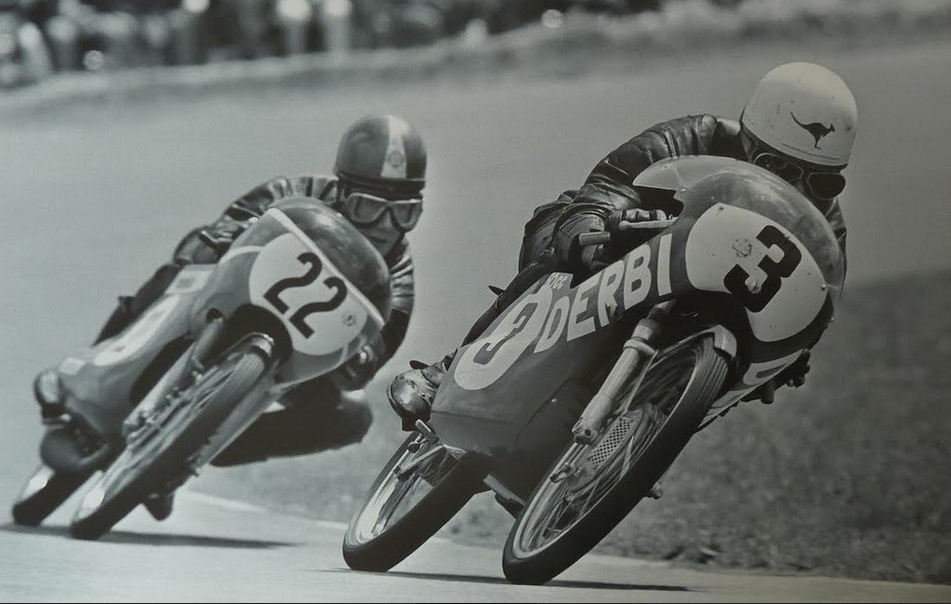

“RIDING A BRACE OF SPECIALLY PREPARED Moto-Guzzi V-twins on the banked circuit at Monza, three Italians established three world records in the 1,000cc class and another three in the 750cc. For the larger class, the machine was basically a 757cc (83x77mm) Ambassador. On it, Remo Venturi, one-time second string to John Surtees on MVs, pushed the 10km record to 129.45mph before quitting as a result of rear-tyre chunking. The bike was then taken over by hill-climb champion Angelo Tenconi, who set a 100km record at 129.65mph and put 130.22 miles into the hour. The previous 1,000cc records were: 10km at 118.64mph by Bert Le Vack (Brough Superior-JAP) in September 1929; 100km at 111.26mph by Joe Wright (Zenith-JAP) in July 1929; 101.98mph in an hour by Claude Temple (OEC-Temple) in September 1925. Machine for the 750cc records was a 740cc (82x70mm) V7 ridden by Vittorio Brambilla, younger brother of Ferrari racing driver Ernesto. Vittorio also experienced tyre chunking but managed to break Rex Butcher’s 10km, 100km and one-hour records, set on a Dunstall Norton two years ago. After lunch, however, Brambilla’s machine was fitted with a Dunlop racing rear tyre and he improved his figure to 125.95mph (100km) and 133.26 miles (one hour). Butcher’s figures were 120.78mph, 126.88mph and 126.75 miles respectively.”
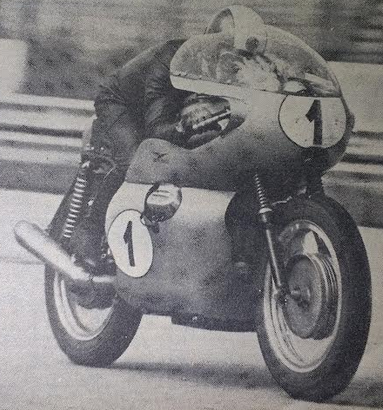
“THERE IS A GRAND OLD PIECE of motor cycling folklore we’ll call the Maximum Cruising Speed Myth. An irrefutable law of nature is supposed to declare that id you exceed more than Xmph for Y miles your engine is doomed to catastrophic blow-up. This is a lot of baloney. A modern engine of any capacity, provided it is in sound condition, properly run-in and efficiently maintained, should be able to hold full-throttle rpm from one end of our longest motorway to the other. Like all good folklore, the cruising myth has a basis of fact. In bygone times, when material standards were inferior and design far less scientific, it was truth indeed. As a safeguard against over-driving, designers would push the low frequency vibration period up to the top end of the rpm scale. It was too darn uncomfortable to hold full throttle for anything but short periods!”
PETER WILLIAMS, RUNNER-UP in the 1967 TT, was promoted from the Norton-Matchless drawing office to run a new road-racing department.
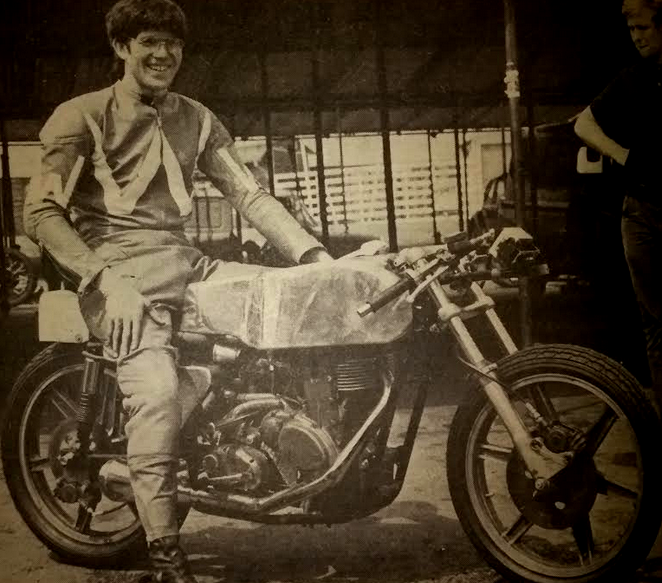
THE PRICE OF REFRESHMENTS IN the growing network of motorway service station was scrutinised by a parliamentary committee. When a Transport Ministry mandarin appeared before the MPs he produced a British Rail buffet menu and pointed out the motorway prices were lower. A committee member retorted: “Sir, you are comparing the outrageous with the ridiculous.”
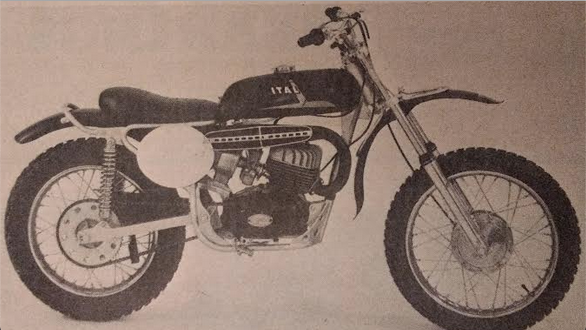
“TAKING THE LEAD within the first few minutes, a prototype 360cc Bultaco completely dominated the world’s toughest road race, the international 24-hour event on the tortuous Montjuich park circuit in Barcelona…Brilliantly ridden by Salvador Canellas and Carlos Rocamora, the Spanish two-stroke averaged 67.48mph, beating the previous record by 22 laps of the sinuous 2.3-mile circuit. Equalling the old record, the works 650cc Triumph Bonneville shared by Malcolm Uphill and Steve Jolly finished second, four laps ahead of the Spanish-crewed Ossa which won the 250cc class.”
A RIDER PASSING THROUGH EDENBRIDGE, Kent was charged with speeding on the evidence of two bobbies on foot patrol who estimated his speed at 50mph in a 30mph limit although it was dark and the street lighting was “not very good”. The rider’s brief told the cops they were “scraping the bottom of the barrel”. Case dismissed.
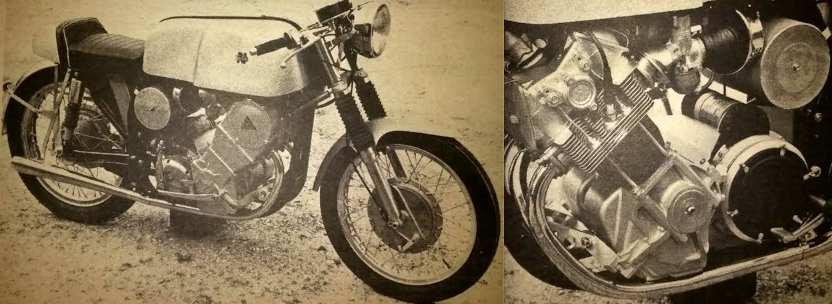
“HAVE AT YOU, LORD ROLLO! Honda owner the Earl of Denbigh lurks inside this medieval-looking American helmet. He is sure he is the first British motor cyclist to adopt the dramatic headgear familiar from Stateside racing. The helmet is a Bell-Toptex Star model…We are told the interior of the plastic face screen is free from draughts and misting, thanks to cleverly contrived face padding.”
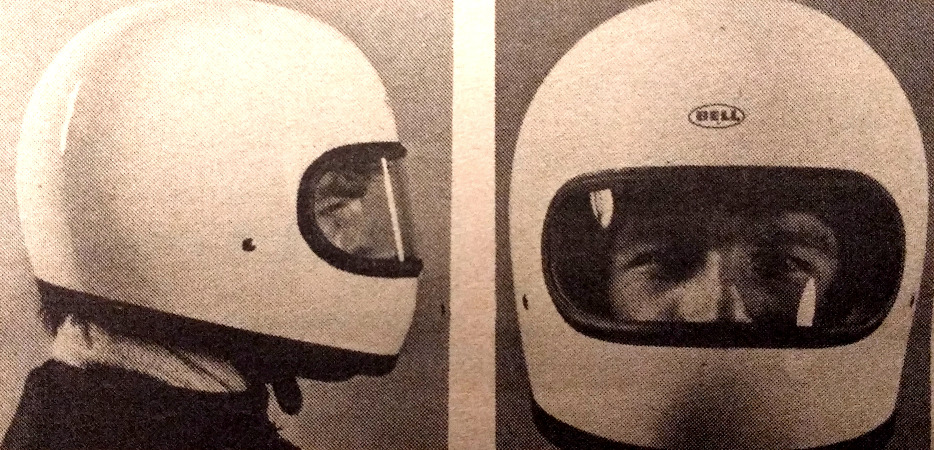
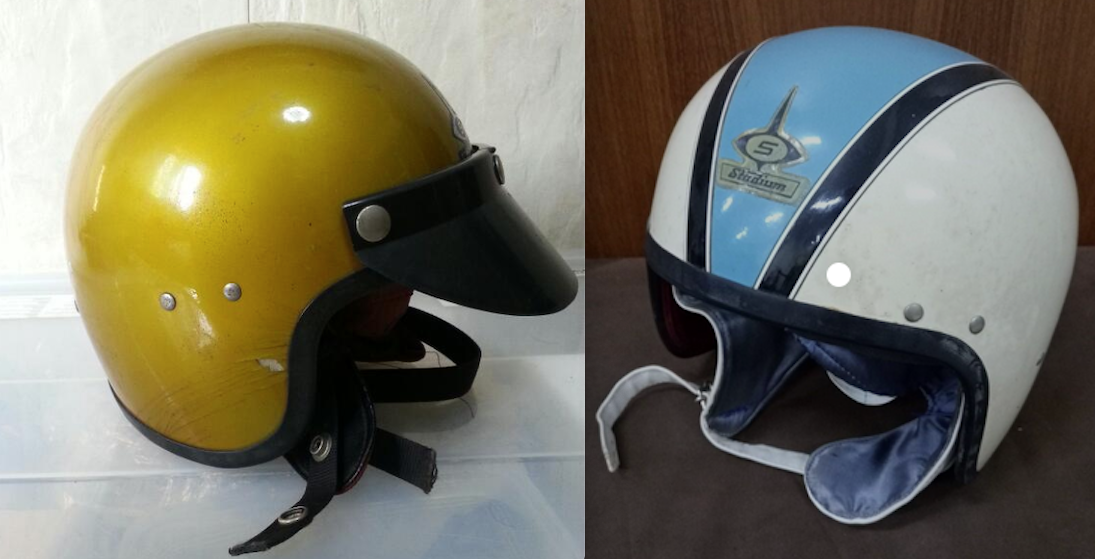
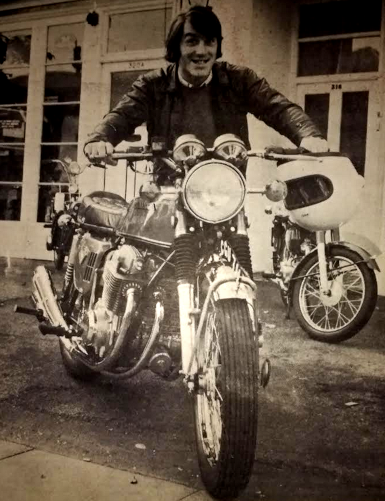
“WHO THOUGHT UP THE FIRST dolphin fairing?” Nitor wondered. “As we all know, roadracers in the early 1950s got this particular ball rolling in a big way, but leafing through our bound volumes the other day I turned up a proposal for a roadster fairing, dated 6 October 1938, under the title ‘Luxury of Necessity?’ It was an advanced conception. The author, JK Carter, prophetically saw that the handlebar-attached screen had its limitations. So he proposed a neat half-fairing ‘mounted on a frame, supported above the tank, with room for the handlebar to swing beneath’. His windscreen looks surprisingly modern. ‘Shape is more important than mere size,’ Carter went on, and it would be easily moulded from one of the new transparent materials used on aeroplanes.’ Well, two decades went by before the development of glass-fibre made stylish and inexpensive frontal fairings a commercial proposition. What’s more, we are still waiting for the fulfilment of one concept in this 31-year-old pipe dream—the twin headlamps.”
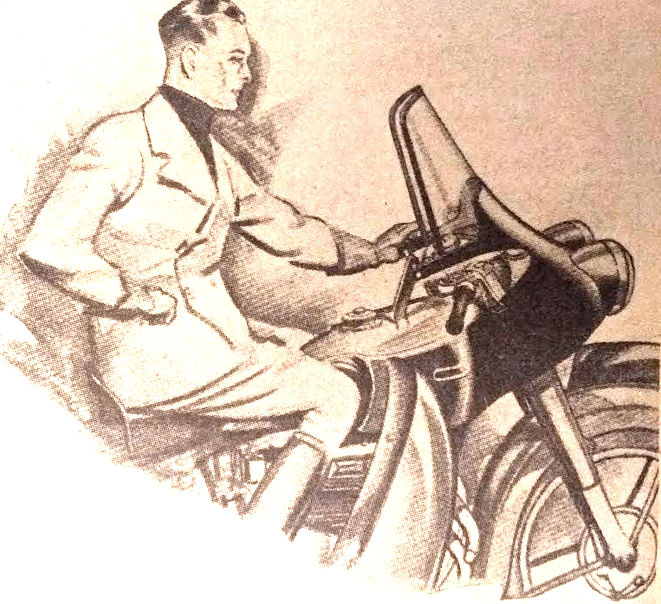
BUCKINGHAMSHIRE’S FARNHAM ROYAL CLUB are the country’s first local club to train successfully 1,000 learner riders in the RAC-ACU Training Scheme…a record reached only by the Crystal Palace scheme, organised by RAC headquarters, some years ago.”
THREE DUTCH ROAD RACERS were interviewed by the cops following the theft of a 50cc Suzuki racing engine from the national motor museum at Leidsendam. It was alleged that they had and tried to sell it to the Kreidler sponsor, Van Veen Imports.
BILL IVY WAS KILLED during practice for the East German Grand Prix when his Jawa V4 two-stroke seized. He slid into a concrete post that lacked straw-bale protection; witnesses said his helmet came off just before the accident. Before the start of the 350cc race at the Sachsenring 200,000 spectators stood in silence as a wreath was laid on Ivy’s vacant place on the grid. Dave Simmonds clinched the 125cc world championship on his ‘semi-works’ Kawasaki twin; his fifth GP win in seven outings gave him an unassailable lead. Giacomo Agostini rode his MV Agusta triple to victory in the 500cc class, winning his fourth successive world championship and equalling Mike Hailwood’s record. Following a race-long duel Santiago Herrero (Ossa) snatched a last-lap 250cc win from Renzo Pasolini (Benelli). The 50cc race was also a nail-biter, with Angel Nieto (Derbi) pulling ahead of Herrero (Derbi) on the last lap. They were followed over the line by a trio of Kreidlers. No-one was surprised when Agostini’s MV was first past the flag in the 350cc class; Rod Gould was runner-up on his Yamaha; Heinz Rosner pleased the home crowd with third place on an MZ.
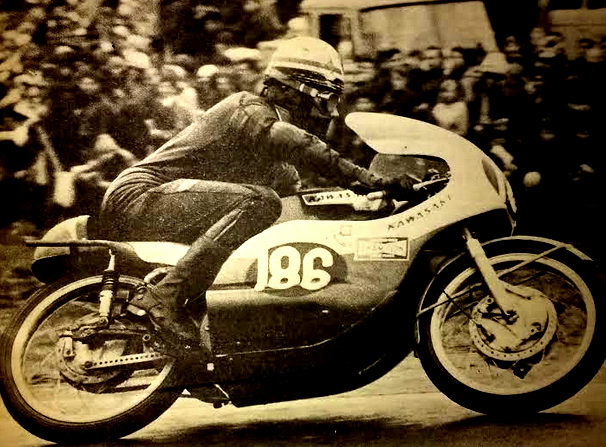
“DESPITE COMPLAINTS LAST YEAR and an FIM request that competitors be given at least a month’s notice, many who applied to ride in the East German Grand Prix were not told until eight days before the meeting whether or not their entries had been accepted…Bultaco works rider Ginger Molloy, fourth in the 350cc class at the Sachsenring last year, applied weeks ago. But it was only at the Belgian that he received a cable saying he had not been accepted this year….So what about it FIM? The East Germans have ignored your plea and they should be disciplined.”
“WORLD 500CC MOTO-CROSS CHAMPION for the past three years, East German Paul Friedrichs (380 CZ) finally broke his duck in this year’s title series when he won his first 1969 classic, the seventh-round West German GP. In a tense and dramatic meeting, Friedrichs won overall by only two seconds from Sweden’s Bengt Aberg (400 Husqvarna) after twice stopping in the second leg to straighten a bent gear lever. BSA team leader John Banks, who took the championship lead at the last round, in Russia, was right out of luck on the twisty Beuern circuit, 60 miles from Frankfurt. He suffered ignition problems during the first race and, failing to score overall, was ousted from the head of the table by Aberg, the former leader.”
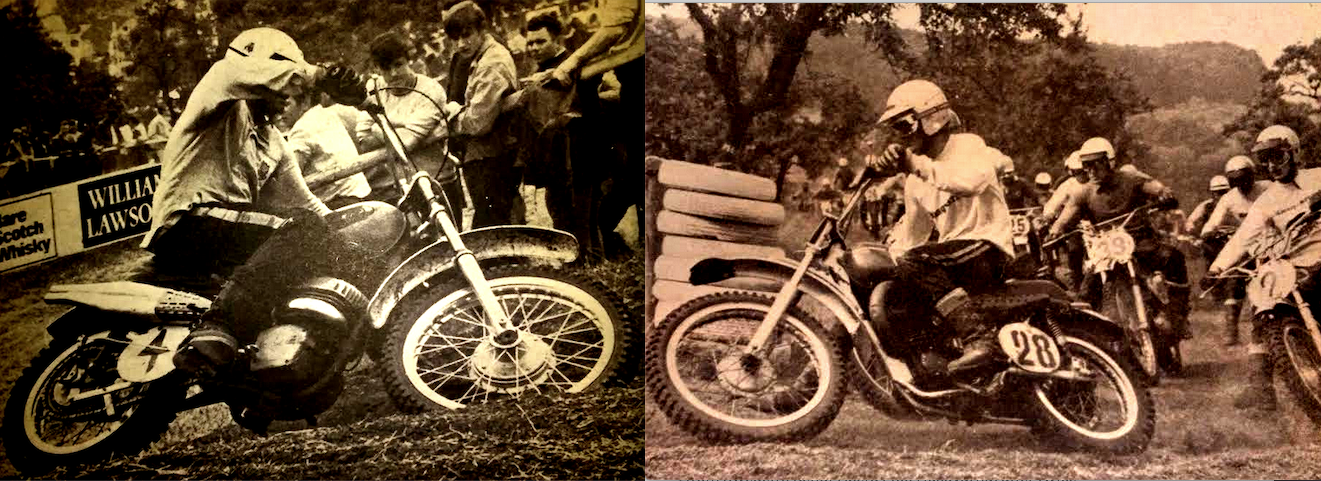
“OVER 250 RIDERS FROM AN ORIGINAL entry of 566 tied for first place with 668 maximum marks in the ACU 24-hour National Rally, which ended at Stoke-on-Trent’s Trentham Gardens pleasure centre on Sunday morning. After the 600-mile road run, with each mile counting for a bonus point and each control visited adding two more marks, ties were settled by an 11-mile timed section over the south Pennine hills. Riders were told to average exactly 22.5mph and overall winner Metropolitan policeman Jack Chatfield (500 Triumph) was only 0.8sec out. Among the class winners was one-legged Yorkshireman Brian Atkinson, who took the 250cc three-wheeler award with his Invacar…There were only 71 checkpoints compared with 85 last year but there was no lack of enthusiasm. Alec Furness of the Buxton Club, manned his windy hilltop control almost single-handed for nearly 24 hours non-stop. With a weekend of perfect weather and some of the most enthusiastic motor cyclists in Britain competing, it was little wonder that there were few stories of breakdowns. Best club team, Birmingham Scooter; runner up, Wessex Norton Owners; third, Midland Triumph OC; fourth, Coventry Antelope MCC.”
WHEN BMF NATIONAL COMMITTEE member Patrick Howell asked his insurer fir a quote on unlimited liability passenger cover for his bike and car the price demanded was £120. All of Howell’s insurance was handled through a single underwriter; he suggested they think again or he would transfer his business elsewhere. A revised quote duly arrived: three quid.
ON THE SUBJECT OF INSURANCE, there was a real problem with bikes and scooters in urban areas being vandalised. Motor Cycle reported: “The overworked police shrug off vehicle vandals as just one of those things. Insurance companies gleefully fasten on the small print on the policy which excludes malicious damage unless the bike or car is stolen completely.”
“AS USUAL, BRITISH RIDERS in the Stella Alpina rally made up the second-largest contingent after the 200-plus Italian home team. We had 42 rallyists present, beating the French by one body. Frequently, in overseas rallies, the second-biggest group is from Britain—at one recent continental get-together the UK contingent outnumbered the locals.”
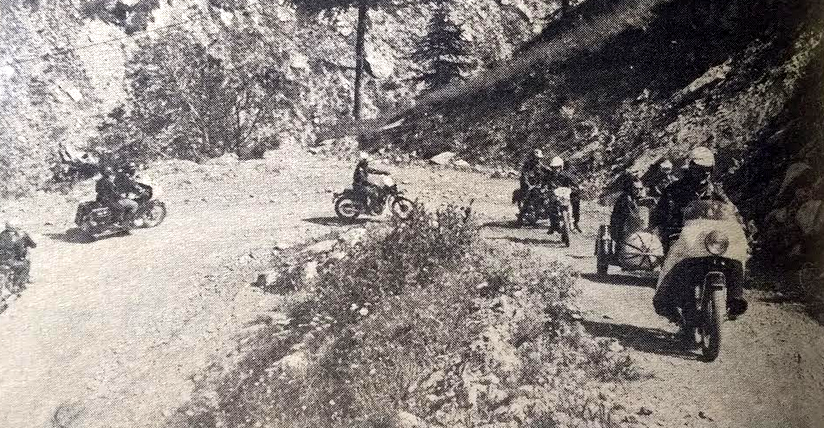
“BEARING AS IT DOES the badge of one of Italy’s most famous factories, the Moto Guzzi 125cc Sport has a high tradition of engineering excellence to maintain. This it does superbly. Throughout our test it behaved impeccably and left us convinced that what little it may lack in all-out speed it amply makes up in petrol economy and all-round character…years of steady development, much of it in tough regularity trials and the ISDT, are embodied in the 125cc Sport…The engine is delightfully tractable and builds up its power progressively right through the speed range. It makes light work of cruising indefinitely at 50mph…Contributing markedly to the general air of refinement is a very low level of noise—exhaust, induction and mechanical…The left-side kickstarter is a little unfamiliar initially, but the engine, whether hot or cold, can be relied on to fire on the first or second prod…The handlebar is upswept, American style, and in conjunction with the large, softly spring dualseat and well-placed footrests, provides and relaxed and very comfortable riding position…a flat bar may be specified. Unusually for an Italian lightweight, there was ample room for a pillion passenger without cramping the driver…the Sport handles superbly. It steers precisely and can be banked confidently through corners even with the ends of the hinged footrests nudging the road…Though only 5in in diameter the brakes are well up to their job and pleasantly progressive in action.” Mean maximum speed, 65mph; highest one-way speed, 67mph; braking distance 30ft from 30mph; fuel consumption, 128mpg at 40mph; 150mpg at 30mph.
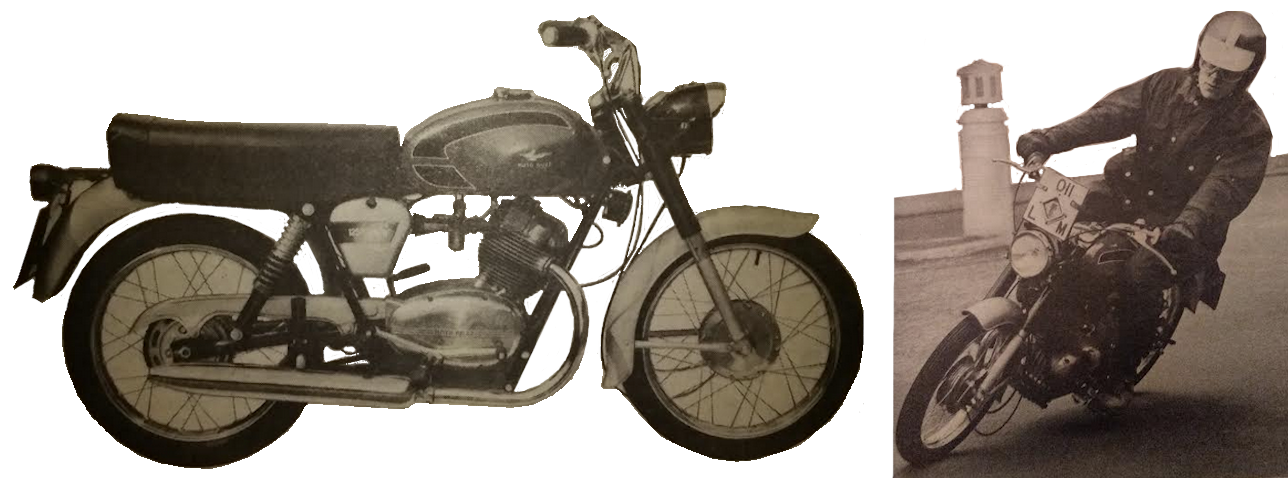

“THE ONLY TROUBLE WITH PRODUCING a machine which looks as fast as the latest 744cc Laverda Sport, is the inevitable disappointment when it fails to live up to its appearance. It looks like 120mph and is even advertised as such by its Italian manufacturers, but the model I tried on the Spa Belgian Grand Prix circuit in the Ardennes managed just 107, putting it well below the top-speed standard set by other 750cc machines. But its true category of a sporty, rather then super-sporting machine, the twin is certainly impressive…Borrowed from Italian journalist Roberto Patrigani, the travel-stained Laverda responded to a touch of the starter button and settled down to a quiet, even tickover—a tribute to well-synchronised twin Dellorton carburettors. Bottom end power was about average, the best response was from 3,000rpm to 6,800rpm. Peak power, 60bhp, is claimed at 7,400rpm but Roberto, faced with a return trip to Italy, politely suggested 6,800rpm in the lower gears as a ceiling for my run…Closely-spaced gear ratios kept the engine on the boil and produced an uninterrupted flow of brisk power straight up to 100mph plus. The crisply engaging hear changed
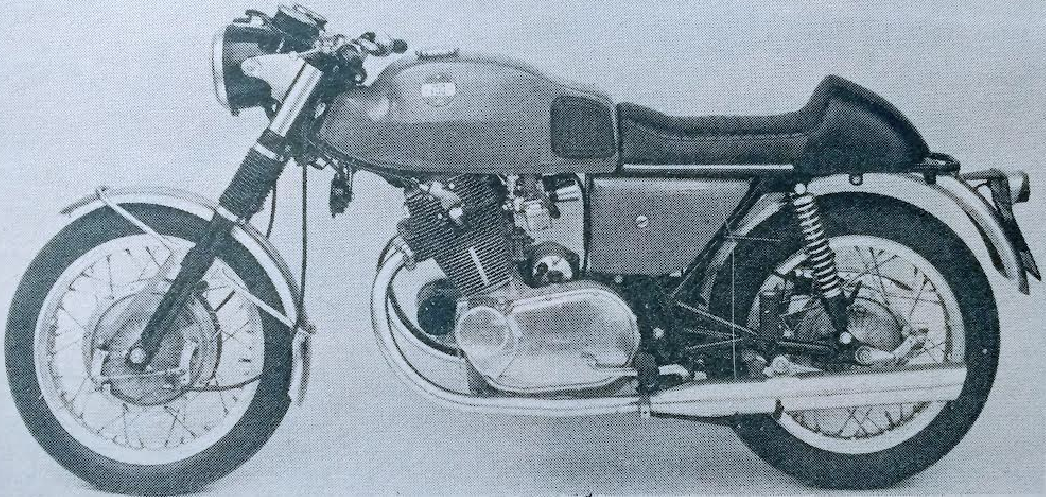
encouraged cogswapping for no better reason than the pleasure of using an unusually well-built box…Smooth up to 4,000rpm, the engine then roughened until vibration felt through the handlebar and seat, was sufficiently severe above 6,000rom to set the speedometer and rpm needles dancing. Quiet at low engine speeds, the exhaust note assumed a throaty growl higher up the rev scale. Mechanical noise was negligible. With a low, flat handlebar and rear-set footrests the forward lean necessary is ideal for high-speed cruising. The petrol tank—one of the best shaped ever produced—has been profiled to allow the riders’ knees to grip it comfortably…Below 30mph the steering felt heavy but at higher speeds it lightened progressively until, above 100mph, there was a tendency to weaving from a side to side. With a low centre of gravity, cornering effort, except on bends under 30mph, was negligible giving little indication of the model’s 430lb…I blamed the pannier set for a certain amount of rear-end weaving on slow corners and it might also have been responsible for a suggestion of front- and rear-end unsteadiness on fast corners. The 9in 2LS front brake, and 8in single-leading-show rear, were smooth and more than adequate for the model’s performance. Finish is an attractive orange for the petrol tanks and side panels with chromium plating for the usual parts. At the moment there are no plans for importing the Laverda into Britain.”
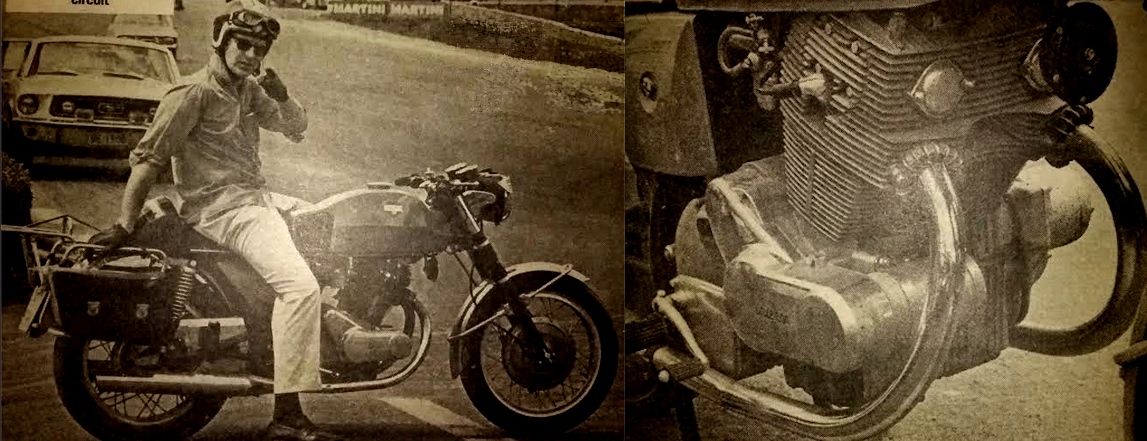
MOTOR CYCLE EDITOR HARRY LOUIS marked the closure of the motor-cycle factory in Woolwich: “To generations of motor-cyclists the old, solid-looking building in Plumstead Road has meant, first Matchless from1911, joined by AJS in 1931, Sunbeam in 1937 and, finally, Norton in 1962; originally the Matchless works, then Associated Motor Cycles and, latterly, Norton Villiers. Efficiency has demanded the switch to the new factory at Andover from where the bikes will soon be rolling off the line in ever-increasing numbers. Every motor cyclist will wish Norton Villiers success in this bold move, the first completely new British motor-cycle factory since the bombing forced Triumph to move out of Coventry to Meriden during the last war.”
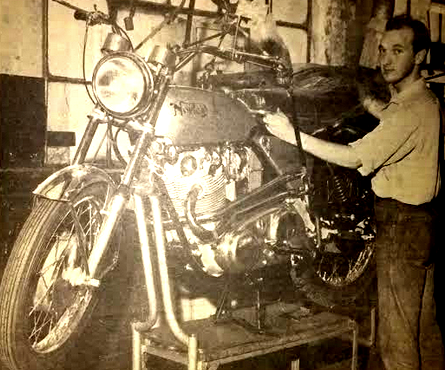
“BECAUSE OF FALLING SALES BSA are cutting back their labour force at the Small Heath and Redditch factories, possibly by as much as 30%. BSA motor-cycle managing director MI Jofeh blamed America’s credit squeeze for the drop in sales…output of the Trident has been temporarily halted…The factory’s workers were told the news at the start of their annual holiday. They will learn just who will be sacked when they return.” Belatedly, it must be said that this timing was a despicable example of insensitive management. For shame, Mr Jofeh.—Ed
“I READ WITH INTEREST of the industries’ association plan to carry out a survey on declining sales. From my experience with a Triumph TR6 I can put forward two reasons: bad workmanship and terrible after-sales service. I waited for four months four an exhaust pipe because the one fitted had faulty chrome, three weeks for a cylinder head, because the original had a loose valve guide, and I’m still waiting for a petrol tank after five weeks. The one fitted had a split joint. The dealer seems powerless to combat the computerised spares-supply system, and letters to the factory are not even acknowledged. Apparently many other riders suffer the same fate. It’s no wonder that some think twice about buying another new bike; the frustration, time wasting and expense are just not worth it.”
RW Tiffen, Romford, Essex.
IF THE MÜNCH MAMMUT IS JUDGED solely on appearance even its creator, Friedl Münch, must admit that it looks a bit of a monster. But, in a way, the appearance is deceptive. For not only is the Mammut one of the fleetest roadsters obtainable (if your bank balance can stand the strain); also its handling is remarkably light and its brakes are almost lethally powerful. With a claimed 90bhp on tap, and a flattish power curve as well, the Mammut excels in crashing acceleration…13.1sec is the slickest [standing quarter] yet achieved in a Motor Cycle test. And I’m confident it could have been bettered, especially since my concern for the clutch made it impossible to break traction on the getaway…How that Mammut flew! Following Ernst [Leverkus of Motorrad magazine on a CB750 round the Nurburgring] called for swift cornering and hard braking, and revealed the Mammut as exceptionally easy to ride. The wide spread of real power (from 3,500 to 6,500rpm) allowed me to concentrate on the incredible variety of corners without worrying about being in the right gear. And handling was so effortless that I would have guessed the weight at 365lb rather than 565. The precision with which the machine went where I wanted it to, and the fidelity with which it kept to its lime were outstanding…Both brakes are of 250mm diameter, the double leading shoes shod with racing linings, the rear brake is hydraulically operated. A more potent hair-trigger combination is difficult to imagine. The lightest pressure on either control brought dramatic retardation. All too easily, both tyres could be made to squeal from top speed…But granted a feather touch, the sheer power of the brakes gave me the confidence to let the Mammut loose…it accelerated very
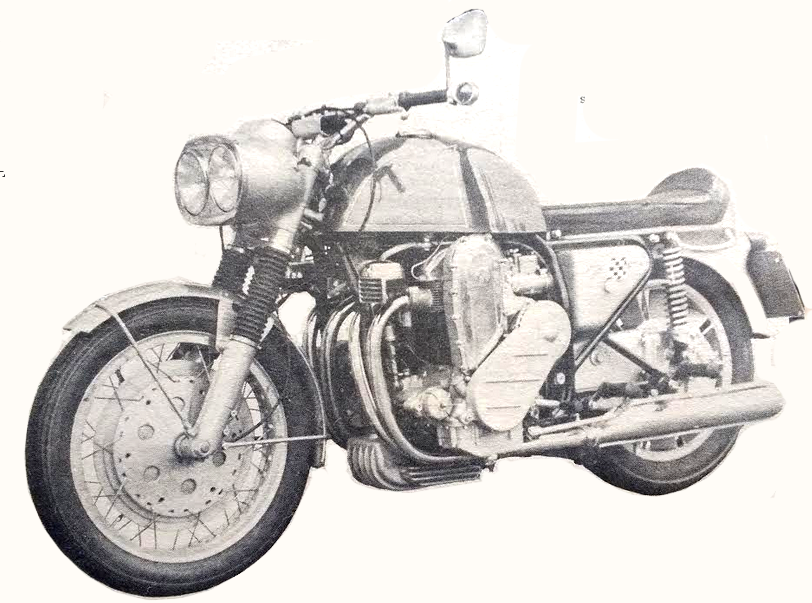
briskly from 3,500rpm in top (75mph) to 110mph before a semi-racing crouch was needed to get up a to ton-twenty…Regardless of engine speed vibration was never felt…For ordinary riding the high-level 32in-wide braced handlebar gives a comfortable position; but for a quick blast down the autobahn a lower bar would be preferable…The Mammut is the result of co-operation between an idealist and a large-scale manufacturer. Münch buys the engine complete from NSU…He fits a high-lift camshaft, enlarges the inlet ports to 40mm, fits valves to match and a pair of twin-choke Weber carburettors. Petrol flow to these has to be pressurised so he fits and electric pump. And Elektron oil container is fitted beneath the engine and an oil pump is fitted that doubles the flow rate…the distributor is moved up beneath the fuel tank. A 400W generator, belt-driven off the left end of the crankshaft, helps cater for the 0.8hp Bosch electric starter. The NSU gearbox is discarded in favour of an Elektron casing containing a gear cluster to Münch’s specification…autobahn tests indicate that the oil temperature is lower in the bike than in the car…Ugly the rear wheel may be but the engine’s tremendous torque wrecked the best spoked wheels that Munch could make. The Mammut is made in small numbers. Two are seldom identical. Now a young American backer has taken over from Floyd Clymer and is aiming to rationalise production…Friedl Münch’s enthusiasm and engineering ability, wedded to American finance and marketing flair, offer the enthusiast who can afford it the most exciting road-burner ever. Mean maximum speed: 121mph (12½-stone rider wearing two-piece Barbour suit). Highest one-way speed, 125mph.”
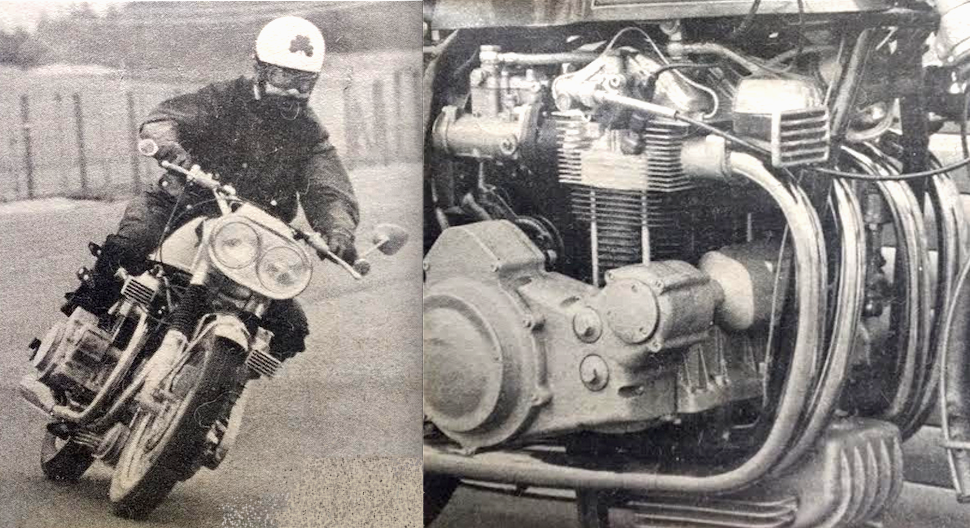
“EUNICE EVANS, FROM BIGGIN HILL, KENT rode four laps to fame when she beat seven rivals to take what is probably the first post-war solo motor cycle race for women. The event was part of the Batley Club’s meeting over the 1½-mile Club circuit at Cadwell Park, Lincs. Aboard a 500cc BSA Mrs Evans had taken the lead by the end of the first lap…only 30 yards separated the first three. Runner-up was road-racer Peter Williams’ sister, Andrea Williams (250cc Thompson Suzuki) and Jean Sutton (500cc Triumph), wife of King’s Langley motor-cycle dealer Dick Sutton, was third.”
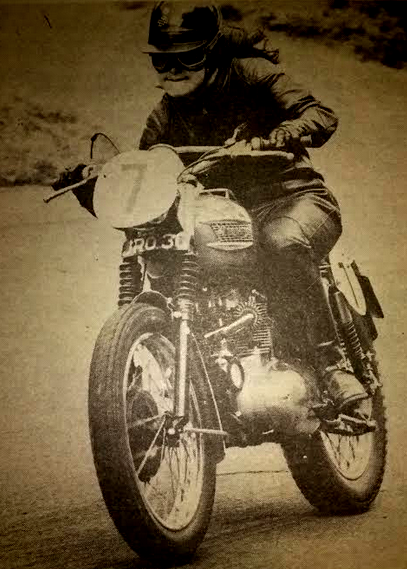
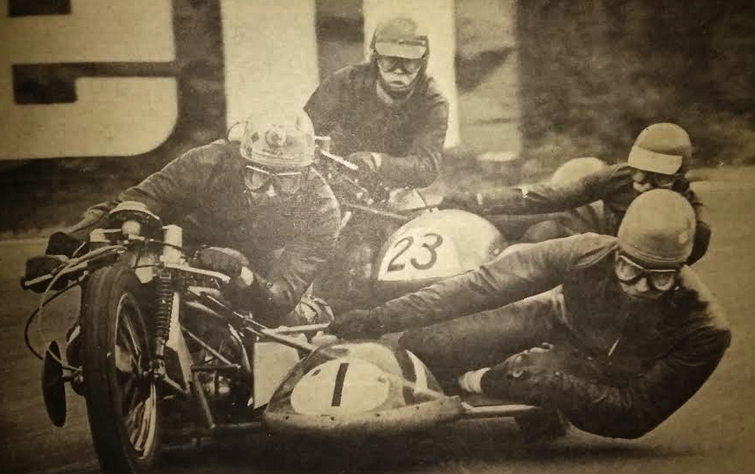
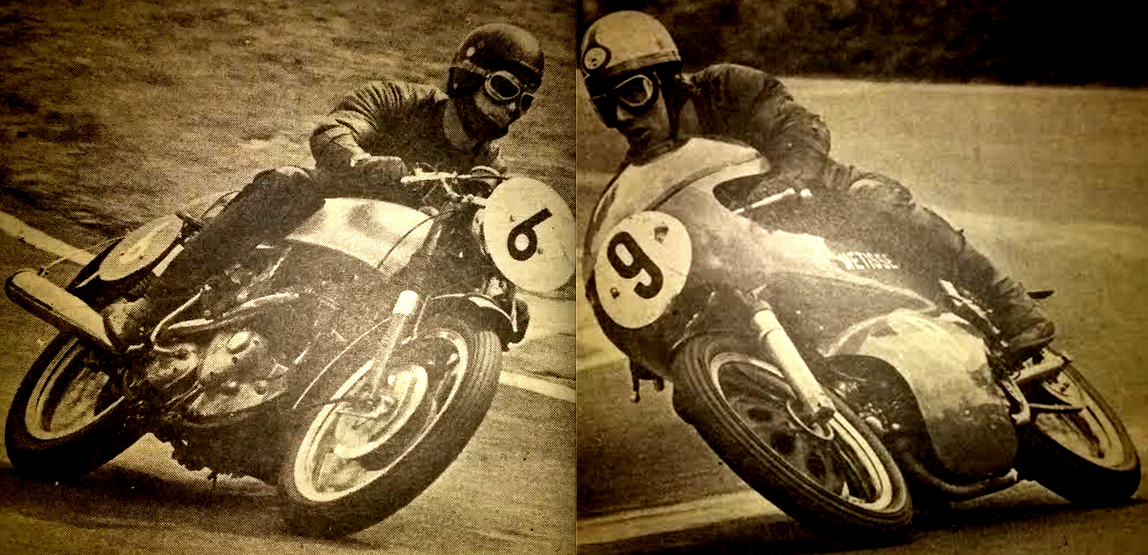
“CHRIS VINCENT (650 BSA) WON the Castle Coombe final and so pocketed the British [sidecar] championship for the sixth time.But he was forced to work tremendously hard by Denis Keen, who nearly pulled off a surprise win on his 1,000 Vincent Special.”
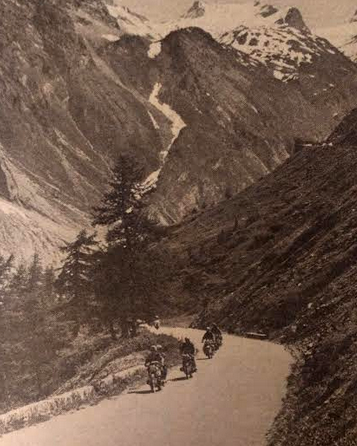
BOB CURRIE TOOK A LOOK at the world’s fastest Squariel: “You wouldn’t recognise it as such now; but when Tim Healey’s big Ariel first went a’sprinting (in 1957) it was a more-or-less standard 1,000cc Mark 1 Square Four.” But now, Bob reported: “The Ariel cylinder block has gone. Now there are four individual cylinders which Healey, from Bromsgrove, turned from duralumin billets and fitted out with cast-iron liners. The head is still Mark 1 Ariel but lightened by 4½lb, mainly by carving away surplus finning. Compression ratio is 10.5 to 1. Screwed into Helicoil inserts in a duralumin plate welded to the crankcase mouth, 18 long socket-head studs hold down the head and barrel.” The forward crankshaft had been replaced with a rear crankshaft because the rear shaft is longer, making room for a toothed-belt supercharger pulley. “Engine, supercharger and Norton gear box are carried in two huge duralumin plates attached to the sprint frame at the steering head and seat tube…Healey intends to start up on methanol then switch over to nitro for his timed runs and, consequently, there are two float chambers feed the SU carburettor. The large-diameter top tube serves as a pressure vessel, charged to 35psi; a reduction valve at the rear of the top tube lowers pressure to 5psi, to force fuel from the low-mounted tank. Tim Healey is planning to reshape the crankcase mouth to a pent-roof formation, turning the Ariel into a narrow-angle V4.”

“THE FINNISH GRAND PRIX came within an ace of disaster when most of the top-line stars threatened to strike because of the dangers involved.” The organisers planned to stage the sidecar race between solo races. “Double world champion Giacomo Agostini asked for a change, pointing out that the rubber and oil shed by sidecars would be a formidable hazard on the tricky, bumpy, tree-lined Imatra circuit. Offering no reason the organisers refused to budge and flash-point came when the FIM jury also rejected Agostini’s plea.” When the riders threatened to boycott the event the FIM jury backed down. Having led the riders in their campaign Ago, as usual, led them home on the track to win the 350 and 500cc classes. Championship contenders Santiago Herrero (Ossa) and Renzo Pasolini (Benelli) crashed out of the 250cc race leaving Swedish rider Kent Andersson to take the flag on an over-the-counter TD2 Yamaha—and he beat Mike Hailwood’s lap record in the process. Dave Simmonds (Kawasaki) continued his string of wins in the 125cc class (like Agostini he had already clinched the world championship). Klaus Enders added to his tally of sidecar wins after Helmut Fath’s URS dropped out with a fractured oil pipe (apart from the URS every outfit on the track was a BMW). Fath was trying to nurse his combo back to the pits when it seized, spun and ejected him and passenger Billie Nelson. Fath suffered a broken leg and ribs; Nelson broke a ankle.
“PRESTATYN URBAN COUNCIL HAVE FAILED in their bid to ban motor-cycle racing at the North Wales seaside town’s Raceway. High Court judge Mr Justice Goff said that the council, having earlier approved the Point of Ayr Club’s plans for long-track events could not later call a halt to them on nuisance grounds.”
THE BRITISH TWO-STROKE CLUB gathered at Epsom Downs to celebrate the club’s 40th anniversary.
SWEDISH 250CC MOTO-CROSS champion Bengt Arne-Bonn joined the AJS team.
MOTOR CYCLE EDITOR HARRY LOUIS was not impressed by the influence the all-important US market was having on British bikes. “There,” he said, “if the sales experts are to be believed, the boys want bikes that will top 120mph, fuel tanks with a capacity of only about 1½ gallons and snazzy appearance…Here’s what we in Europe want of big, expensive bikes—and, I suspect, what the Statesiders would prefer for motor cycling, as distinct from just flashing ostentatiously round the houses. Top cruising speed of 100mph for continental motorways—the 20mph or so above that is useless. Enough powers at low engine revs for top gear to be used at 30mph. A fuel tank giving a range of 200 miles—probably, therefore, consumption must never be heavier than 50mpg. Weight not more than 400lb. No noticeable engine vibration. A low level of mechanical and exhaust noise. Maybe the Americans won’t buy bikes to my spec. All right. But the American market may not continue indefinitely to be the biggest for British machines.”

When developing a 350cc racer CZ had a straightforward reason for building a V4 rather than a transverse straight-four: money. Knowing they lacked the resources to develop an in-line four to its full potential, designers Frantisek Pudil and Josef Brajcha opted for a layout narrow enough to fit into the slim fairing used on the factory’s one-lungers—reducing drag was critical to make use of limited power. They also opted for air cooling to minimise weight. (Right) A batch of five 125cc Maico racers were imported. Claimed output of the disc-valve two-stroke was 23hp at 11,500rpm.
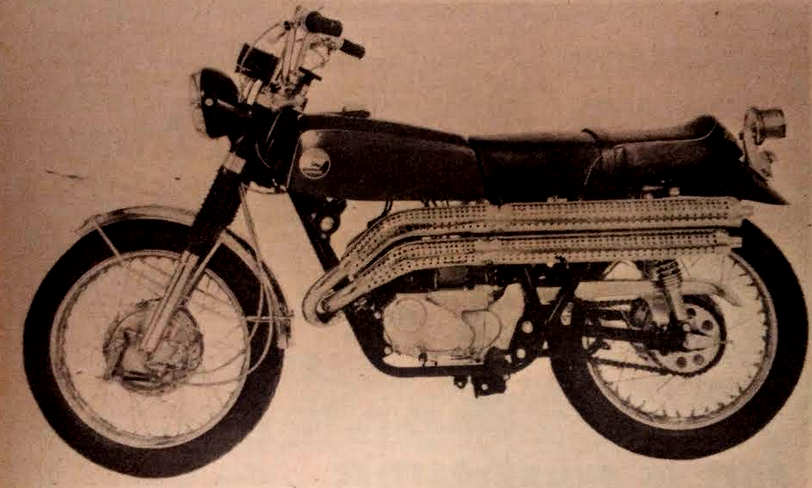
“LACK OF VARIETY IS THREATENING the popularity of the big class in short-circuit sidecar racing. For too long now the BSA boys have ruled the roost virtually unchallenged, and our sport badly needs a shot in the arm.”
THE RAMBLERS’ ASSOCIATION HQ sent a circular to local officials. Discussing Roads Used as Public Paths the RA promised: “In moorland and mountain country…RA officials will seek reclassification as a public path, thus keeping off motorised vehicles, especially the motor cyclists. But in arable country there is a danger that downgrading will lead to ploughing. Where this danger exists the highway authorities should be asked to reclassify as a Byway but impose a traffic-regulation order banning all vehicles except farm and access traffic.” John Ebbrell warned: “This can be interpreted in one way only: the Ramblers’ Association want the total extermination of green-roads motor cycling, and they want it now.”
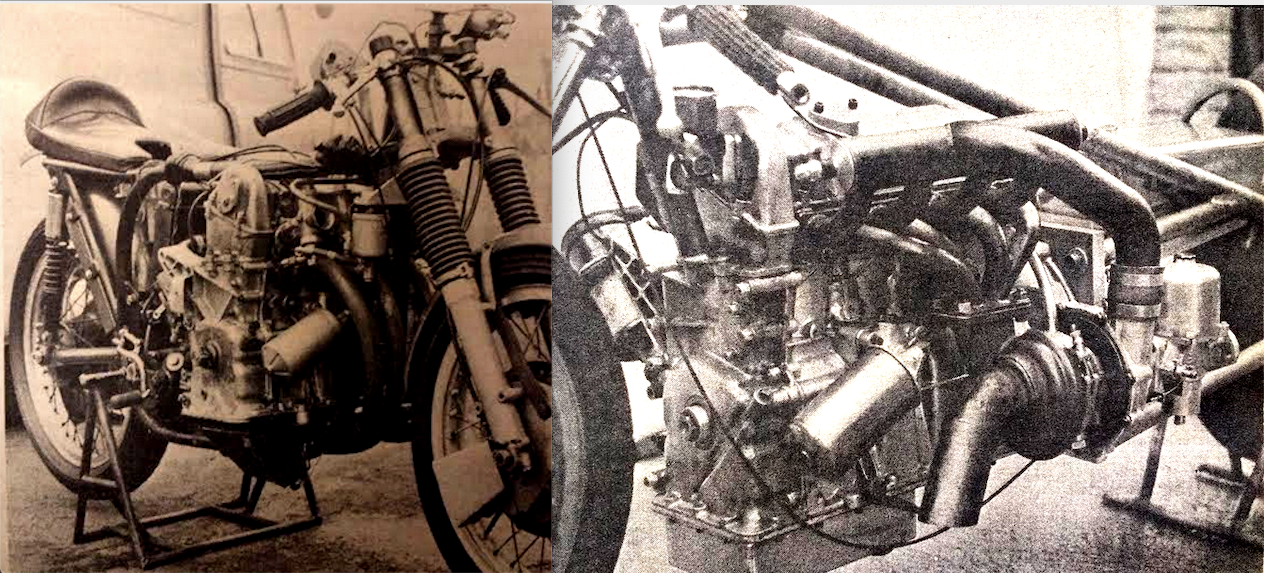
“PROVING YET AGAIN THAT HE IS THE MAN for the big occasion, Christchurch-born Kiwi Barry Briggs hustled through his five rides in winning style at West Ham stadium to recapture the British championship which he lost last year to compatriot Ivan Mauger. World-title-holder Mauger suffered a dramatic and surprising no-points defeat in the opening round of the British final of the world-championship competition. Only his dedicated and superb starting in his subsequent rides carried him through. And the one man to beat him was Briggs, when they clashed in their last of five outings. On a heavy track, and with the starting tapes causing too many problems and upsets, England captain Nigel Boocock provided the biggest surprise in the opening heat, outgating Mauger who trailed last. Only Briggs and Ronnie Moore beat Booey, who then won a thrilling run-off with Moore to finish runner-up. Twice world champion Moore showed all his old trackcraft to amass his 13 points, beaten only by his fellow Kiwis, Briggs and Mauger. Riding on his own track, veteran West Ham skipper Ken McKinlay, recently recovered from serious injuries, got one of the biggest cheers of the night when he just outpaced Howard Cole in the last heat of the meeting to qualify for his ninth world final…A crowd of about 10,000 saw show-business personality Anita Harris present the awards at the end of the meeting.”
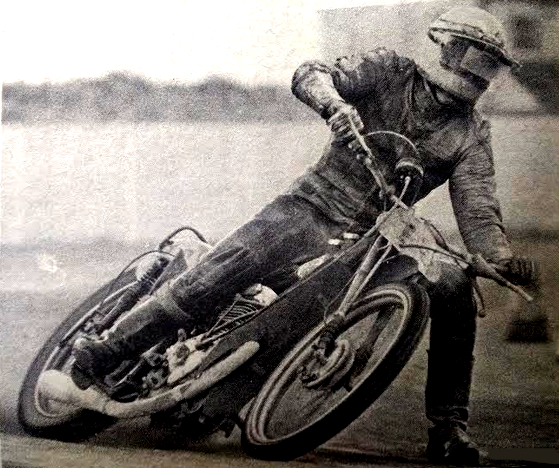
MOTOR CYCLE SET ITS MECHANICALLY MINDED readers a challenge: build “an all-round machine suitable for cruising in comfort and at fair speed along the highways, with full road equipment and civilised traffic manners, yet just as much at home on rough lanes…When the non-starters, slightly modified roadsters and trials jobs with lighting sets tacked on, had been eliminated 23 possibles remained.” John Ebbrell, who organised the competition, met the three finalists, discussed their bikes and took them for “a fair test on road and byway”. The winner was a Triumph-Greeves built by Dick Sutton of Kings Langley, Herts “to the specification of his wife, Jean. Ebbrell explained: “Jean Sutton’s 500 Grumph is really an invalid carriage. Partially disabled through disseminated sclerosis (a disease of the nervous system), she is able to walk scarcely 100 yards unaided. So she needs a machine for commuting daily to her part-time job as a nurse.” At weekends the Suttons went greenlaning—Mrs Sutton had served as backmarker in the Welsh Three-Day Trial; Mr Sutton “boasts that he was the last rider to have ridden his bike to an ISDT, win a medal and ride home again—a bronze, in Sweden, 1966. Dick Sutton lengthened the frame (to give a 53 1/2in wheelbase) and modified the steering-head angle (to 63deg). Cast aluminium-alloy yokes carried AMC forks. The 1959 3TA lump was rebuilt to 490cc with 7:1 pistons, 5TA cams and wide-ratio gears 6:1 top, 18:1 bottom). The extra torque was handled by a Puch rear hub. All-up weight was 285lb with a top speed of 80mph-plus. Ebbrell concluded: “Riding the Grumph round the green lanes of the Chiltern Hills I found it had perfect manners with emphasis on flexibility.”

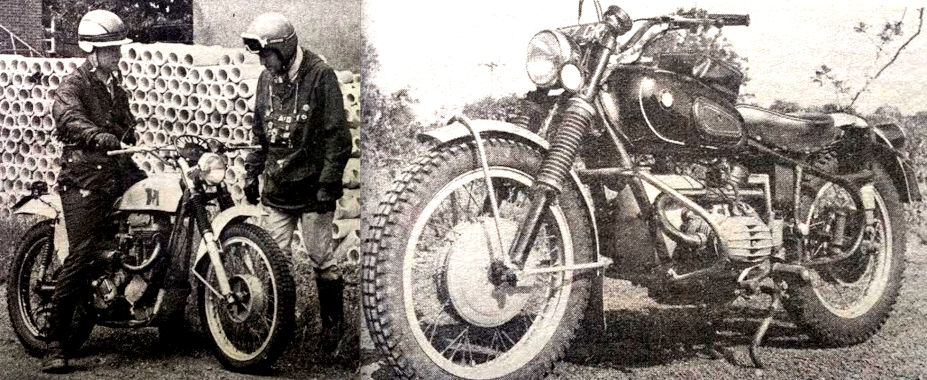
“A QUARTER OF A MILLION RUSSIANS cheered 20-year-old Vladimir Kavinov (CZ) to a home win in the 250cc Russian Moto-Cross GP while Belgium’s Joel Robert sewed up this year’s world championship in the final round of the series near Leningrad. Robert, world champion in 1964 and 1968, finished second overall—more than enough to oust his countryman and CZ team-mate Sylvain Geboers from the title lead he had held for the past six rounds.”
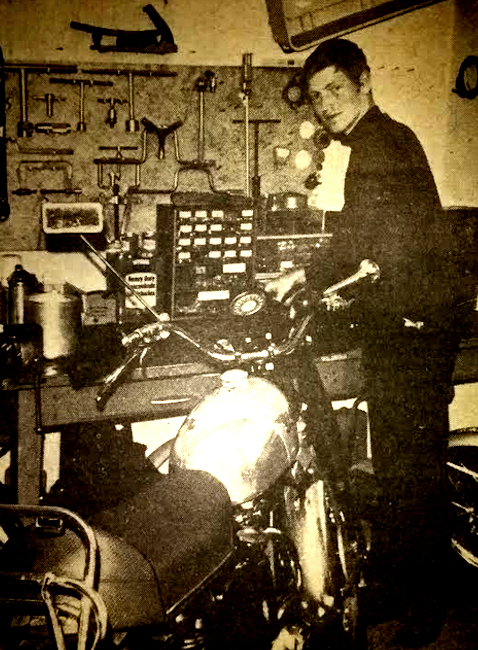
“WITH SMOKE BILLOWING FROM THE FIRES of riot-torn Belfast barely five miles away, the 41st Ulster Grand Prix opened in a tense, uneasy atmosphere. Many feared that just one incident among the crowds surrounding the 7.4-mile Dundrod circuit might turn the meeting into a shambles, Mercifully, their fears proved unfounded…Most significant event, as regards the world championships, was the 250cc race, in which Spain’s Santiago Herrero threw away his two-stroke Ossa but kept his title lead. Late entry Kent Andersson of Sweden closed the gap to two points by taking second place on his Yamaha behind Australia’s Kel Carruthers (Benelli). Remounting after a mid-race crash Herrero’s countryman Angel Nieto (Derbi) won the 50cc event. But, in spite of failing to finish, Aalt Toersen (Kreidler) of Holland still heads the class championship. Predictably the 350 and 500cc winner, double-world-champion Giacomo Agostini (MVs), gave the crowds more than their money’s worth with a series of lap records…But that did not obscure the brilliant 500cc performance of Belfast’s Brian Steenson, alone unlapped by the flying Italian. Already world champion, as a result of Helmut Fath’s accident in Finland, Klaus Enders and passenger Rolf Engelhardt easily won the sidecar race, reintroduced after a lapse of 13 years.”

“AT THE FRENCH 500CC MOTO CROSS grand prix Paul Friedrichs rode in brilliant fashion but not quite brilliant enough to beat Bengt Aberg and get the vital win to keep him in the running for a fourth championship title. Friedrichs is now 29 and has carved himself a unique niche in moto-cross records by being the only man to win three titles. And those were consecutive.”
“NEAT AND PROFESSIONAL LOOKING, this Norton four combines a 1966 Atlas with an 875cc ohc Hillman Imp car engine. To effect the union without butchering the frame was a tricky job for Sonny Angel and David Owen, Norton dealers in National City, California, and called for the fitting of an Amal Concentric in place of the original Solex. A small radiator is fitted above the gearbox, an impeller circulates a gallon of glycol. Total weight, including petrol, oil and coolant, is 455lb.”

“IN THE ROAD WHERE I LIVE dozens of teenage motor cyclists and scooterists daily flock to a coffee bar and listen to beat ‘music’ from jukeboxes at maximum volume, to the detriment of the peace and health of nearby residents. The teenagers congregate in a car park and, until about midnight, torment residents with their shouting, engine-revving and generally uncivilised behaviour. The noise nuisance has become quite intolerable and numerous complaints have been made to Worthing Council, the West Sussex County Council, the police, the Ministry of Health, the local MP, and the clerk of the magistrates at the local law courts. Some residents have even resorted to throwing missiles, but all this has, after some months, resulted in no really effective action being taken. Legal action is now under consideration with regard to the excessive juke-box noise. The police are doing their best to tame the two-wheeled horrors, but under existing laws their powers are very limited. A particularly noisy BSA twin owner, age 16 and without a driving licence or insurance, met a well-deserved fate recently and had to be extricated from under his wrecked machine by firemen. He is now creeping about on crutches and is much less noisy! We residents are not sadistic, but it seems that the noisy riders are. How shameful it is that a bunch of hooligans should bring motor cycling into such widespread disrepute.
WC Haycraft, Worthing, Sussex.”
“I AM VERY CONCERNED about the current animosity against motor cyclists and scooter riders; this is now much more obvious. A large number of camping sites now openly display signs barring all motor cyclists and scooterists. Some pubs are refusing to serve us and we often have to put up with shocking abuse from landlords. If such prejudice were displayed against a coloured person action would swiftly be taken. It’s curious that no signs are displayed barring footballers, rugby players or any other specific groups, even though hooliganism is rampant in some. Society always has to have a scapegoat, but are we to be labelled as something beneath contempt?
Dorothy Davis, Secretary, Newport & Gwent Club, Newport, Mon. “
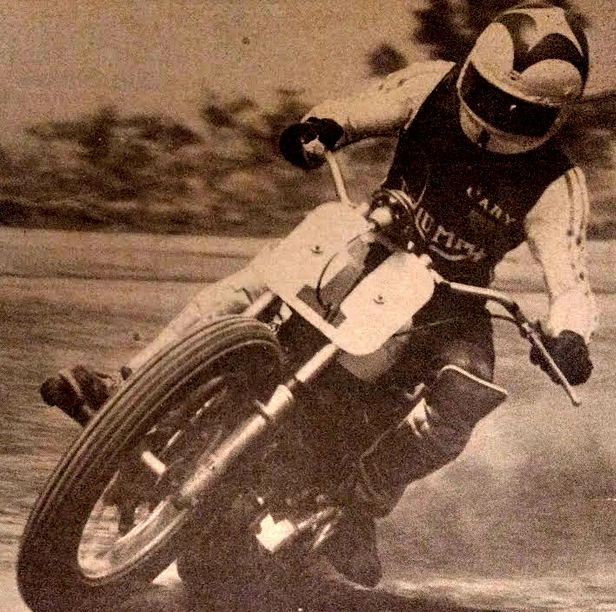
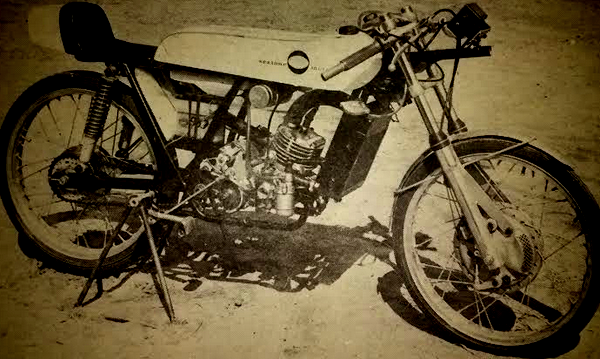
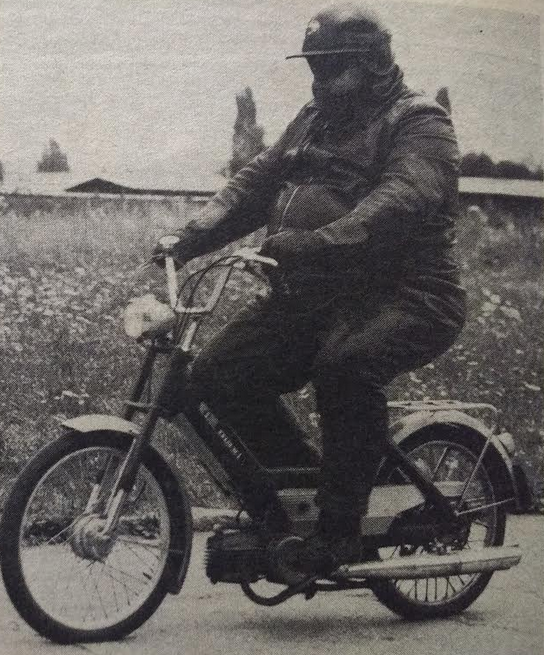
. And probe they do, judging by the dimensions of Puch’s chief tester, Johann Mugler, all 23 stones of him. Maxi mopeds coming off the production line are subjected to Herr Mugler’s elephantine probenfahrt. If a bike doesn’t pull well and start on the automatic clutch without the traditional ‘light pedal assistance’ it goes back for attention…Mugler also tests Puch’s push-bikes.”
“FOLLOWING THEIR MOST RADICAL design changes in 14 years, BMW are now producing a new and exciting range of silk-smooth flat twins in 500, 600 and 750cc capacities. They are known as the R50/5, R60/5 and R75/5. The makes’ overall aim, brilliantly achieved, was to adopt the best in BMW tradition to modern demands for higher performance, easier handling, lighter weight and lower production costs…” Vic Willoughby, not a man to be easily impressed, took a ride on one. He was impressed: “Never have I enjoyed a day’s riding more than when I covered 360 highly varied miles and sampling the BMW R75/5 in the mountains and plains of Bavaria and Austria. At a time when bikes get more and more rev-happy, the R75/5 stands out as a gentle giant with a tremendous spread of torque. It will glide silkily along at a strolling place with the clutch fully home or devour the autobahn at an effortless ton-plus, and with an extremely meagre thirst at that. It will get up and go like a champion show-jumper, climb like a rocket, stop safely on a sixpence, turn in a lane. It whispers as softly as a breeze, rides like a Rolls Royce. Riding a BMW twin is an extraordinary experience and the BMW is the best BMW yet. It is my sort of bike—of all bikes the one for which I would most cheerfully fork out my own hard-earned cash. No machine is perfect but none approaches perfection more closely than does the R75/5. My criticisms are fewer even than on previous BMWs, so let me clear them out of the way for a start. First, for my short legs the luxurious seat is high at 33in. Fortunately, the bike is so well balanced, you can plonk both feet on the footrests as soon as the clutch begins to bite and leave them there until the wheels have stopped turning. Second, some effort is needed to hump the bike on to its centre stand. But I tried it only for fun, so stable and convenient is the prop stand. Third, the BMW gear change has never been knife-into-butter. It is still recognisably BMW, though it is appreciably improved and very easily mastered. Fourth and last, there is, at 3,000rpm, slight roughness by BMW standards. But other makers would be glad if their twins were no rougher at their best. After I collected the seven-fifty a preliminary skirmish through busy Munich showed it to be 100% stable on rain-soaked cobblestones and tramlines, and very kind to the feet, which are sheltered by the cylinders. An excellent start. So well chosen is the kickstarter ratio that starting the engine on the pedal proved well-nigh as effortless as on the button. Hot or cold, idling put me mind of the beat of a grandfather clock. The controls were sweetness itself. Next morning in search of variety, I planned a route eastward along the Salzburg autobahn, southward across lesser roads into Austria, up the Grossglockner to Franz-Joseph-Hohe for lunch, then back along more secondary-road mileage and less autobahn. There was no opportunity to make precise acceleration checks, but so purposefully did the R75/5 extend its front fork and go that the makers’ claim 14.6sec and 90mph for the standing quarter-mile seems to me conservative. Peak torque comes at 5,000rpm. In top gear that’s about 90mph, and when I slammed the throttles wide at that speed I could almost feel the rubber being worn off the rear tyre! For the most zestful hurrying, upward changed were made at 7,000rpm, which means 48, 72 and 90mph.
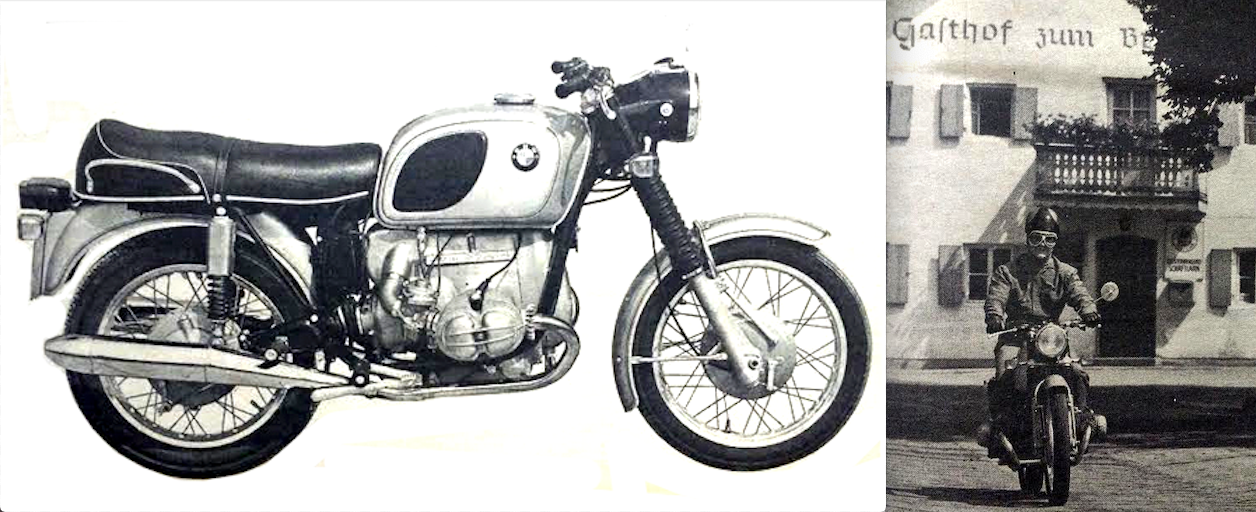
In more leisurely mode I plonked top gear in at 20mph, it was all the same to the Bee-Em. Soon I was cruising at 105mph, and with no more stress than if I’d been sitting in an easy chair dreaming of it. The faultless riding position had me leaning gently on the wind with every muscle relaxed. Gusty side winds were no trouble, for the bike seems to run on its own private rails. And, as at all other speeds, I never heard the exhaust. True, there was the faintest of rustling from the valve gear, but it was scarcely more obtrusive than the ticking of a wristwatch. On the swervery the R75/5 gave a big lie to the ancient myth that a fore-and-after crankshaft axis spoils handling. Compared with the very best of conventional layouts BMW handling is neither better nor worse—it is simply different. It scores heavily on stability but it needs slightly more than the proverbial nod of the head to flip through tight S-bends. A factory tester is said to have whistled an R75/5 round the tortuous 14.2-mile Nurburgring in 10min 42sec, compared with 10min 28sec by Geoff Duke in his racing heyday on the Gilera four. I don’t doubt it. Austria, I found, still has some atrociously bumpy roads. Without a sign of pitching, the Bee-em floated over them with the suspension working hard but unobtrusively. Indeed, had it not been for the rodeo-like antics of cars travelling appreciably more slowly I should never have realised quite how bad some of the roads were. Given time, anything can climb the Grossglockner. What thrilled me on the R75/5 was the scornful way it zoomed up. It treated the 8,500ft zig-zag the way a Saturn V rocket treats the Cape Kennedy launch pad. Bottom and second gears, clutch fully home, were equally suitable for rounding the dozens of tight, cobbled hairpin turns. Surging upward, I felt the air getting rapidly colder and thinner. Sometimes the sun picked out the delicate colours and turned the waterfalls into cascading streams of diamonds. At other times dense cloud hugged the road and I was reminded of groping my way over Snaefell in some of the murkier TT practice sessions. Next to racing I know of no tougher test of brakes than to romp down a long, steep Alpine pass so exuberantly as to need practically full braking for every turn. Indeed that was my chief reason for going to Franz-Joseph-Hohe. The BMW laughed at the test. By the time I was three parts down an unmistakable smell of hot linings was coming from the front brake, but there was never a sign of fade. Only after supporting myself repeatedly against the fierce downhill braking did I notice the weight on my arms. But those conditions were so abnormal that that’s no criticism of the riding position, which is the best I know. A rough check on petrol consumption showed something like 53mpg, which is remarkably economical for the way I was riding and means a range of 250 miles when going like a dingbat or 350 in more normal riding. Such varied riding, in magnificent scenery, is my idea of a heavenly day awheel. Whatever your idea, the R75/5 is versatile enough to fill the bill and give you much more than satisfaction. In addition, it makes you a paragon of politeness. However badly you may be carved up, when you’re riding such an aristocratic bike you feel so superior that you just can’t make any more reproachful gesture than to wag an admonishing finger!”
“YOU MIGHT NOT THINK IT POSSIBLE to achieve one-upmanship by acquiring a Honda,” Bob Currie remarked. “Yet Bicester dealer Eric Trinder has; he’s got a 170cc Honda Juno, probably the only one outside Japan….It is an exquisitely made and superior scooter with a flat-twin ohv engine, 12-volt electrics (including starter motor) and de-luxe equipment. But what really sets it apart is the transmission—a hydraulic device incorporating a swashplate pump and motor, giving infinitely variable gearing (controlled by the left-hand twistgrip) between limits of 21.75 and 6.25 to 1…There was an example at the 1962 Earls Court Show, but it was packed off back to Japan afterwards, and no Junos have ever been imported for sale in Britain. So you’re probably wondering where Trinder’s model came from, and how it managed to get a Birmingham registration. That is the clue, actually. Joseph Lucas are based in Birmingham, and it was they who imported the Juno, to strip it down and see what makes it tick. (They do that sort of thing as a matter of course; right now, there’s a 600cc MV Agusta four running around on Birmingham number plates.) From Lucas it went to the Ferguson tractor folk, who are also interested in hydraulics. When they had done with it, it became the personal transport of one of their boffins. Trinder got it from him. Origin of the hydraulic transmission is Italian. It was devised by Cambi Idraulici Bedalini SpA and first exhibited on a 172cc MV Agusta at the 1954 Milan Show. The Honda version was produced under licence…Honda never claimed the Juno to be a speedster (58mph maximum). But speed in a scooter—especially a town carriage such as this—is unimportant. Weight distribution seems exactly right and handling is up to motor-cycle standards…The pillion seat (which hinges up to disclose a parcels bin) also unclips so that its base can be used as a carrier grid. Should the battery be flat, the engine can be started by a lawn-mower-type pull cord…There is a foot dip switch on the left floorboard…The rear-fork pivot is coaxial with the final drive sprocket, so there can be no variation in chain tension.”
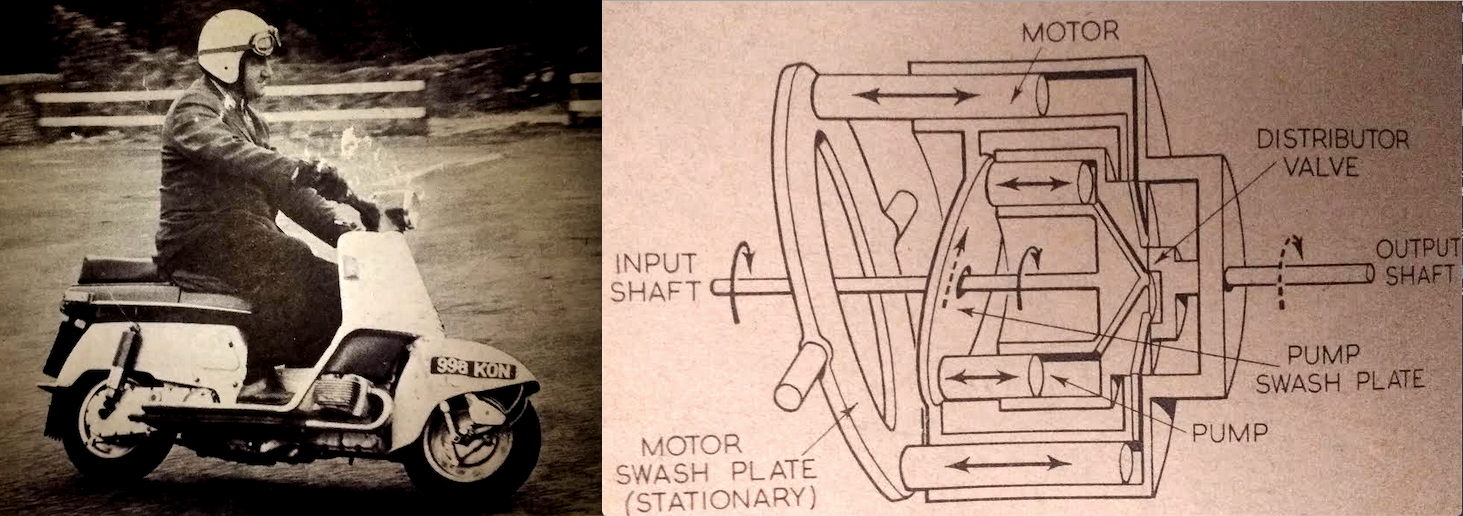
“BRITAIN’S 47 ENTRIES FOR THE 44th International Six Days Trial were in jeopardy less than 24 hours before Monday’s start at Garmisch Partenkirchen, southern Germany. Not having received Bank of England clearance in time, their entry fees had not reached the organisers. But British jury member Cliff King finally solved the snag by guaranteeing the necessary £1,500. That left a recorded field of 321 to face the flag on Monday. Of the 325 riders entered, only four, all Spaniards, had failed to turn up. No panics ruffled the ADAC’s smooth organisation as machines were examined and parts marked with coloured paint or sealed with wire on Saturday and Sunday. But one or two Britons had last-minute jobs to do. On Saturday evening, Trophy teamster Roy Peplow found the front-wheel spoke flange of his 504cc Triumph loose on its rim and borrowed a spare wheel from the Army’s Vase A team equipe…At the final roll call for the 903-mile event there were no changes in the eight six-man Trophy teams from Austria, Czechoslovakia, East Germany, West Germany, Great Britain, Italy, Russia and Sweden. An extra four-man Spanish team hoisted the total in the Silver Vase contest to 25. Permitted more entries than other nations as host country, West Germany fields 72, Britain comes next with 47, Italy and the USA tie for third with 24…most of the 12 seven-fifties are either 650cc Triumphs or 500s bored out to just over the class minimum, but they do include three genuine seven-fifties—massive BMWs, two of the new R75/5 models…Bold-tread tyres proved the best bet. Late on Sunday steady rain set in…low clouds shrouded the mountains as

the first riders—dispatched in threes at minute intervals—started at 6.30. Parked without cover in the close control throughout the night, the bikes were saturated. Yet most fired at the first or second kick, and hardly any riders lost 20 points for not getting their engines going and covering 22 yards in the minute allowed. Using the electric starters of their new 750cc BMWs, Hubert Scheck and Kurt Distler were away in no more than five seconds…Long stretches of the 78-mile morning route were deep in mud. Only 2½ miles out came the first of the week’s seven special tests, a long, timed hill-climb, with a loosish surface where plenty of pre-trial practice paid off, as shown by the speed of some of the stars, like the Czech teamsters. Some 25 miles farther on came a quarter-mile acceleration test on a tarred road, with noise meters to penalise machines exceeding the liberal limits of 90 to 95 decibels depending on engine size. With standard time schedules (average speed about 25mph) in operation, all Britain’s Trophy and Vase men completed the lap without losing marks. And they fortunately had plenty of time to spare—fortunately for Vase A’s Jon Tye (125 Puch Dalesman) who had to whip a 4in nail out of his flat front tyre and fit a new tube. Tye’s team-mate Mick Noyce hold his 441cc BSA’s primary chaincase on a rock, but repaired it with quick-filler and continued…For the first time since 1953, when Britain won the Trophy, our riders ended an ISDT with something other than a few individual medals and minor
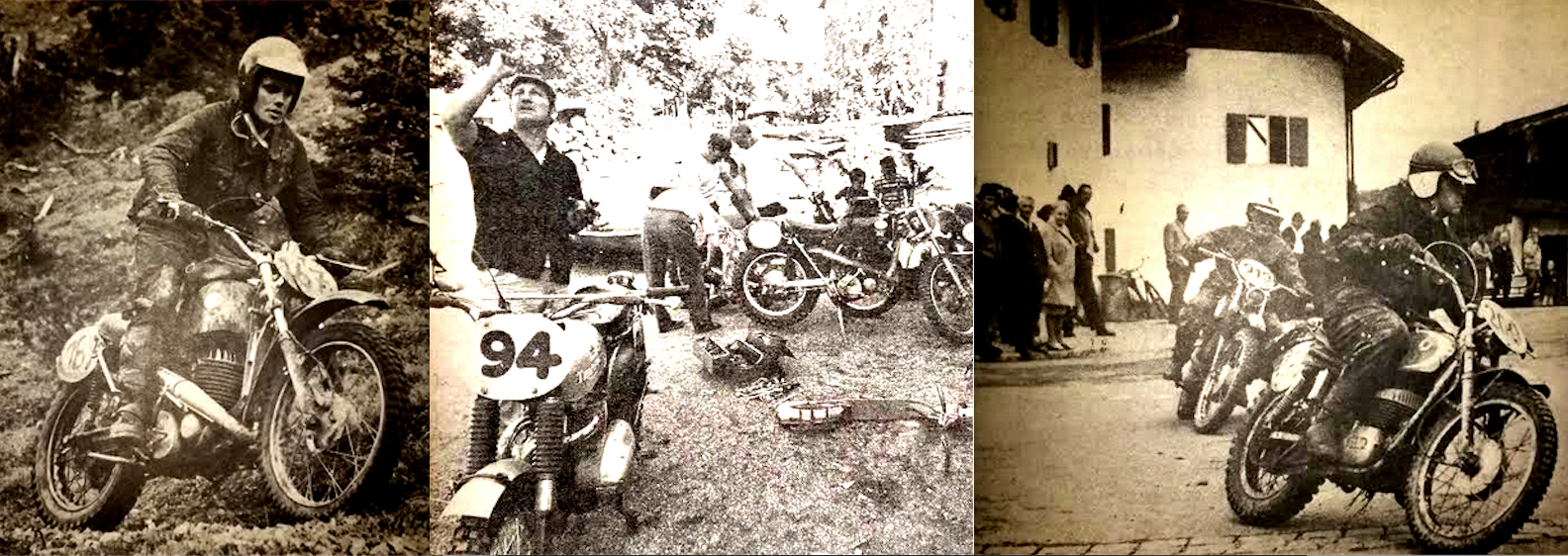
team awards last week. Recognising the difficulties under which our Trophy-team effort was mounted, the international jury voted Britain the Watling Trophy—awarded at their discretion for the best performance by a team other than the Trophy or Vase winners. Our tally: third place in the Trophy contest behind winners East Germany and runners-up Czechoslovakia, 19th spot in the Vase contest for the services-sponsored A team and 24th place for the first-time effort by Scotland’s Vase B quartet. And, from 47 entries, eight gold medals, five silver and 11 bronze. But the real heroes were agin East Germany’s six MZ-mounted men who topped the Trophy contest for every one of the 904 miles of Bavarian rough-stuff to score their sixth victory in seven years. They were the only Trophy team to lose no marks. Six of the 25 Vase teams finished unpenalised, West Germany filling first and second places, with Czechoslovakia third and fourth and Italy fifth and sixth…The trial was as expertly organised by the West Germans as any in its 56-year history. Though not unduly difficult, the routes were tough enough to sort the men from the boys. Of the 321 starters—a record—from 17 nations, 114 retired or were excluded. Gold medals were awarded to 107, silver to 57 and bronze to 43. Britain’s 47 entries netted eight golds, five silvers and 11 bronzes.”
NITOR WAXED LYRICAL OVER the Mach III Kwak triple he’d borrowed from Reads of Leytonstone: “Not only fellow motor cyclists and car drivers but pedestrians too gawped in marvel. The sheer impudence of that incredibly wide cylinder layout, two silencers on one side and one on the other, and the Kawasaki blazon where the rider’s knees should go, transform what might have been just another ugly multi into a magnificent outrage. Never mind its performance—sheer vanity is sure to scoop umpteen potential customers.”
“THIS GEM CAME FROM the bulletin of the British Road Federation: ‘The Secretary of State for Scotland is to discuss the proposal to fill in the bog at the end of Glasgow Airport runway with members of the corporation airport committee.'”
“THE BELGIANS ARE THE WORLD’S new 500cc team champions. They won the title when they clinched the Moto-Cross des Nations for the first time in 18 years, at Farleigh Castle, near Trowbridge, Wilts. Although led by new 500cc world champion Bengt Aberg (400 Husqvarna), the event’s top points scorer, Sweden, slipped to a three-point defeat after leading the first of the two 45-minute races. Britain, unbeaten in the contest for six years, finished third behind Sweden. It was our worst performance since the opening event in 1947. The one bright spot for the 20,000 home fans who lined the West Wilts Club’s circuit was John Banks’ personal triumph. Banks, whose 500cc BSA packed up in the first race, won the second leg after a battle with Aberg—compensation for Banks’ defeat in the world championship. Russia, winners last year of a contest largely boycotted by the Western nations, were absent this year. Eight teams of five men each competed, with riders gaining points according to position in both races but only a country’s best-placed three riders counting towards the team’s total.”
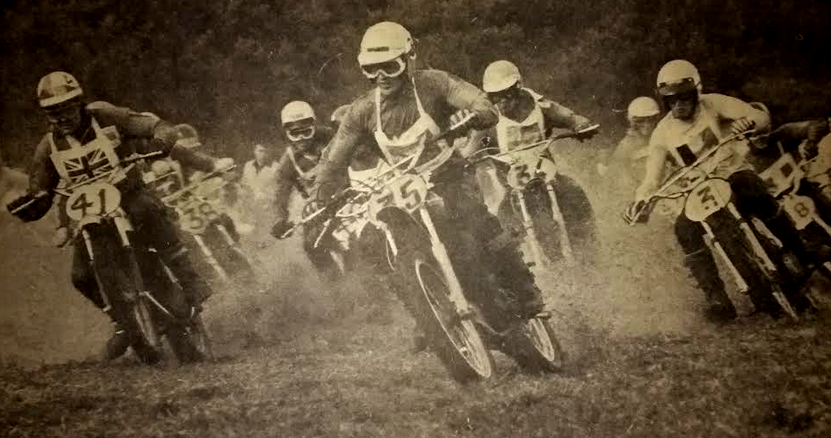
“BRITAIN’S POWER IN MOTOR-CYCLE racing continues to dwindle. Used to defeats in the ISDT, and outsped on classic race circuits by Italian, Czech, East German and Japanese machines, we now have to eat humble pie in moto-cross. The British team in the 500cc Moto-Cross des Nations at Farleigh Castle were pathetic. Neither the bikes nor the riders were up to the task and we were hammered by Belgium and Sweden, two relatively small countries. A week later our 250cc team in the Trophee des Nations was swamped by the continentals and crawled home sixth. Yet we probably run more scrambles and have more active scramblers than any other country. So why are we not producing top-class riders?
PM Stone, Harrow Middlesex.”
“IN A MACABRE EFFORT to boost membership East Yorkshire’s Middlesborough Club have launched their master plan—a scheme to pay funeral expenses of members killed in road accidents!”
“MODS VERSUS ROCKERS,” Nitor noted, “are absolutely old hat, even for the daily press…here is the Guardian’s report of happenings in Brighton on Bank Holiday Monday: ‘First clash was beside the Palace Pier. A stone-throwing fight started among a crowd of about 400 youths. About 200 skinhead boys with crew-cut hair and wearing braces and boots, marched through the town to a cafe with is the headquarters of the local Grease—youngsters who wear black leather jackets and mostly ride motor cycles.’ I thought motor cycles would have to be worked in somewhere!”
“MIKE PUTTOCK, A 19-YEAR-OLD member of the West Streatham Sidecar Club, went home laden from the Panther Rally at Debden House, Loughton, Essex. On his 10-year-old Triumph Thunderbird outfit he won the awards for the best Watsonian sidecar, the best maintained outfit and the concours d’elegance. Had there been an award for the man who drove farthest, it must have gone to Hans Mannaert on his 1953 500cc BMW and Steib; he came from Amsterdam the previous weekend for the Jumbo Run and took in the Panther camping weekend on his way home.”
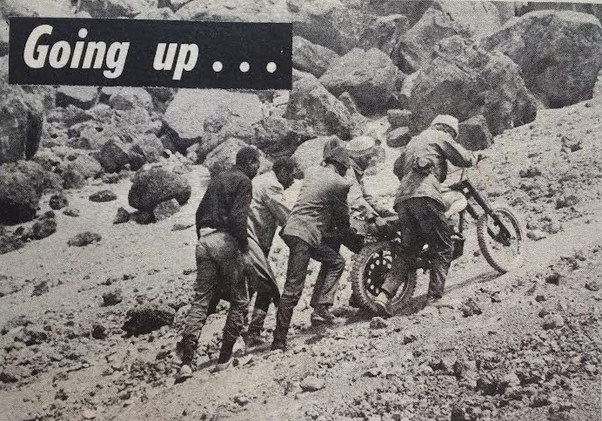
“BSA’S RACE-SHOP CHIEF TONY SMITH has told the Birmingham company’s competitions manager Brian Martin that he will no longer ride the firm’s machines in road races. The factory rider said: ‘Although I am employed in the comp shop, I have too much work to do on other machines and the preparation of my own bikes is entrusted to someone else. The result is that silly things happen, such as the fairing falling on to the front wheel of the six-fifty at 130mph at Snetterton, or the wrong clutch plates being fitted in the Manx GP five-hundred. This sort of thing should not happen on a works bike.’ Now he has plans to do a full round of the continental meetings next season, probably with a brace of Yamahas.”
“BRITAIN’S LAST MOPED MANUFACTURER, Raleigh, are to end production of their range in the autumn. The Nottingham concern blame the slump in UK sales—moped registrations totalled 26,000 in 1968, a 27% drop over the previous year. Raleigh entered the moped market 11years ago with the RM1 and RM2 ranges, of which over 100,000 machines were sold. Their last venture was the Wisp, powered by the French Mobylette engine. Since its launch in 1967 20,000 have been sold—a figure, say Raleigh, far beneath their expectations.” My chum Ken owns a number of mopeds including a couple of Raleighs and a Mobylette. From him I learned that the Mobylette is a far more powerful tiddler than the Raleigh powered by a Mobylette engine. The canny Frenchmen made damned sure that the mopeds sold by potential competitors would not perform as well as those bearing the Mobylette badge—Ed.
“WE MIGHT BUILD THE BEST BIKES in the world—and even that is a debatable point—but British manufacturers can’t seem to produce a decent moped. Now our last manufacturer, Raleigh, are ceasing production because of a slump in sales. With traffic congestion rising alarmingly, there is a market for mopeds and so the blame for any slump in sales must rest with the unimaginative manufacturers. Indeed the Japanese have founded their empire on the tiddlers, and while they are now seriously challenging our big-bike supremacy, they are shrewd enough to consider the moped market of vital importance. The Raleigh decision is a sad comment on the state of the British motor cycle industry today.
RG Bennett, Luton, Beds.”
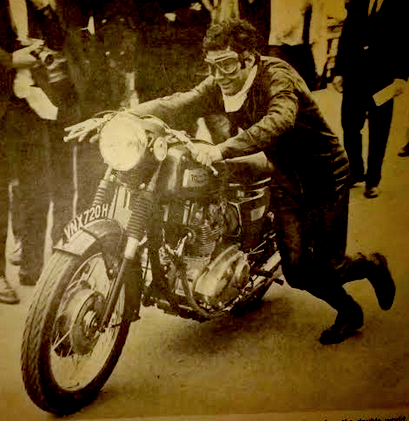
IN A FANTASTIC FINISH to a sensational series, Australia’s Kel Carruthers won Sunday’s 250cc Yugoslav Grand Prix to snatch the world championship for the class from under the noses of Spain’s Santiago Herrero (Ossa) and Kent Andersson (Yamaha) of Sweden. Riding a four-cylinder factory Benelli, he beat his team-mate Gilberto Parlotti (Benelli) and Andersson after a frantic battle over the 3.7-mile Opatija circuit on the Adriatic coast. For the first seven laps it was a three-way dice between the Benelli men and championship-leader Herrero, back on top form after his Ulster GP injuries. But then the Spaniard crashed again and, although unhurt, was unable to continue. Yet even so, in the first world championship to be held in Yugoslavia, Spain clinched her first-ever world title. Angel Nieto took his works Derbi to second place behind Paul Lodewijkx (Jamayhi) in the 50cc race to win the championship by a single point from Aalt Toersen (Kreidler). For the first time since the 1965 Ulster Grand Prix, a Norton took top honours in a classic in the 500cc race. With world champion Giacomo Agostini at Cadwell Park, the race was won by Godfrey Nash on a nine-year-old Manx model from Franco Trabalzini (Hannah Paton). And Agostini’s absence helped the Jawa four to its first grand prix victory. Narrowly beaten at Imola last week—also at Cadwell—Italy’s Silvio Grassetti won the 350cc race from Gilberto Milani (Aermacchi).”

“BRITAIN CAME A CLOSE SECOND in the world speedway team championship at Rybulk, Poland, with 27 points to the victorious Polish team’s 31. World champion Ivan Mauger was Britain’s best scorer with nine out of a possible 12. Barry Briggs scored eight. The Russians, leading at one stage, faded to third, and Sweden were last.”
“DEBORAH ROSE, A 17-YEAR-OLD student from Bushey Heath, Herts, put the men to shame when she won the final of the Top Rider competition, open to learners in the RAC/ACU Training Scheme. Deborah, riding a Honda 90, dropped only four marks in the 25-mile road run and five special tests which wound up at the Triumph factory at Meriden near Coventry. Runner-up Paul Macdonald of Glasgow lost 25 marks. There were 47 finalists in the competition.”
“HONDA, THE JAPANESE COMPANY which grew from a bomb-site shack to become the world’s largest producers of motor cycles, were 21 years old yesterday (Tuesday 23 September). Last year the 10,000,000th Honda rolled off the line in time for the company to celebrate their coming-of-age (one year earlier in Japan than in the West). Since 1961, their first full year in grand-prix racing, the company have won 18 manufacturers’ world-championship titles.”
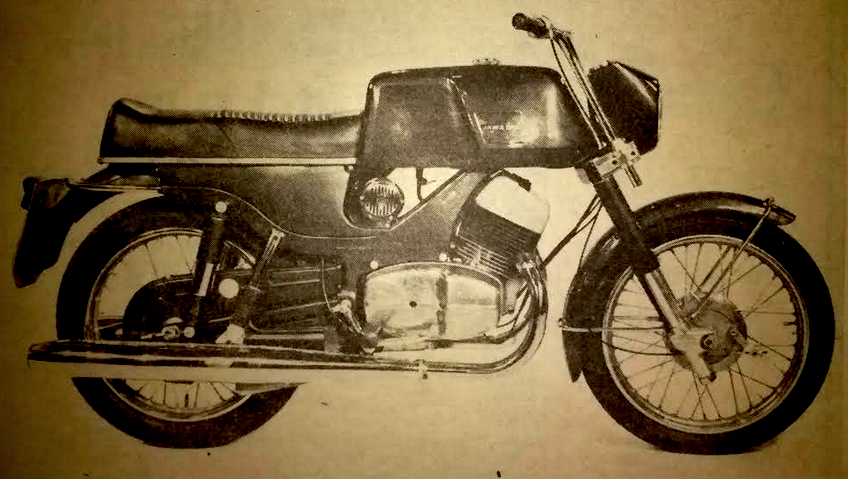
“SHRUGGING OFF A DISAPPOINTING RESULT in the British Final, where he finished fourth, world champion speedway champion, New Zealander Ivan Mauger flashed back to form on Saturday to scorch round Wembley’s tricky shale and retain his title…Four-time championship winner, Mauger’s compatriot Barry Briggs also repeated his 1968 placing. In a run-off for second place he defeated Swede Soren Sjosten.”
“THE BIGGEST-EVER THREE-CYLINDER machine is being developed by the Italian Laverda firm. Aimed at the American market, the 1,000cc ohc machine is built on the same lines as the present five-speed 750cc twin with chain-driven overhead camshaft.”
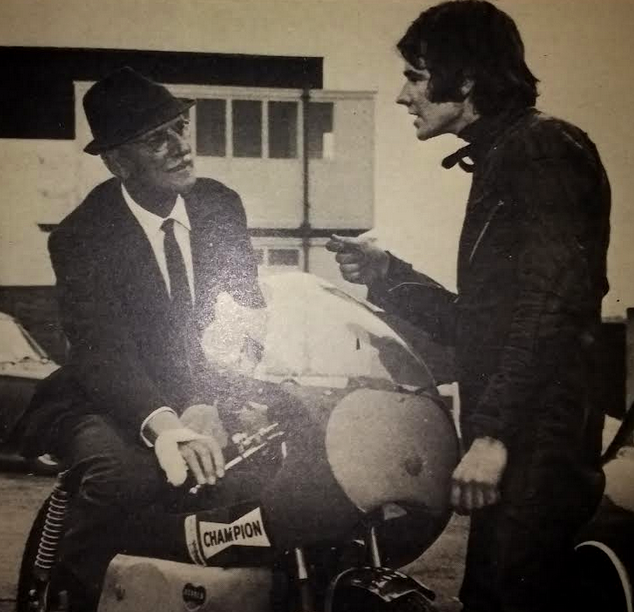
“THE GIANT PIAGGIO CONCERN, makers of the Vespa scooter, are to buy the motor-cycle firm of Gilera, who have been in financial difficulties for some years. Informed sources in Italy say that Piaggio are concerned at shrinking scooter sales and intend to break into the motor-cycle market, particularly in America, by revitalising the well-known and respected Gilera company. In Britain, the Bristol firm of Douglas are to end their 19-year-old association with Vespa by dropping the UK distribution rights for the scooters and mopeds. The company, who gave up making motor cycles in 1957, will thus end their last motor-cycling link.”
“ONLY BRITISH RIDER TO QUALIFY for the European sand-track championship, Kent star Don Godden raced to victory last week in the final near Oslo, the Norwegian capital. Runner up in 1967 and 1968, Godden skated home on his 500cc Hagon JAP in front of a 30,000 crowd lining the 1,000-metre circuit. His wife, Jean, said: ‘Don was determined to win this year. He spent every night for a fortnight before the final tuning the engine.'”
“DO WE MOTOR CYCLISTS REALLY care any longer about petrol consumption? Time was when we looked askance at any five-hundred that turned in less than 75mpg. Today, a real hot-stuff roadburner, ridden hard, is lucky to better 40mpg—yet scarcely anyone turns a hair.”
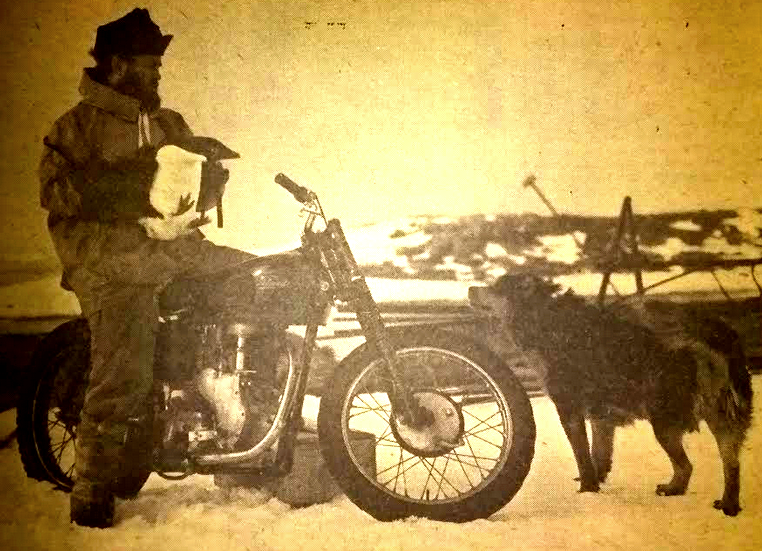
“THE BSA GROUP’S WOES have been much discussed by financial pundits,” said Nitor. “Quite the change for the papers to fasten on something about motor cycling other than mods, rockers and Hell’s Angels. But, as usual, the papers don’t get their two-wheel thinking straight. Nowhere did I read the plain facts that the BSA and Triumph threes cost £100 more than people are prepared to pay, and came on the market at least a year too late. As luck had it, the Rocket 3 and the Trident reached the showrooms precisely when enthusiasts everywhere were talking of nothing but the eagerly-awaited Honda four…in timing their announcements and show presentations Honda pulled off a great propaganda feat. BSA threes languish unsold while fickle riders count their dollars, deutschmarks and pounds in expectation of the fabulous seven-fifty four. Yet how many customers have actually taken delivery? In the UK maybe six or eight, I’m told. And in Europe, Rollo Denbeigh is the only man I can see with his hand up. What’s gone awry is not that Small Heath and Meriden have made too many threes, but that they got the proportions wrong. The Trident sells well enough; the Rocket 3 is unwanted. There’s bitter irony in the sloper version failing to click, for it was with the Sloper (a famous single-cylinder five-hundred) that BSA earned golden dividends back in the late 1920s. That machine revolutionised motor cycling with previously unapproachable standards of silence and reliability. Envious competitors rushed to jump on the bandwagon by the simple expedient of redesigning their engines with sloping cylinders. Few of them succeeded in emulating the civilised manners of the Small Heath product. BSA dealt with serious competition by progressively cutting the Sloper’s price, 20% in four years. Might a smilar policy not pay off with the Rocket 3?”
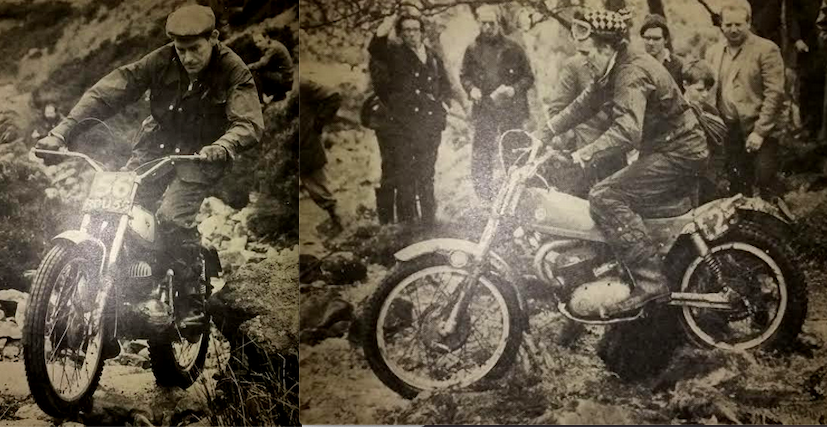
WHEN MOTOR CYCLE TESTED a Norton Commando (in 1968) it recorded a top speed of 117mph. Top-speed claims by Commando owners who contributed to Motor Cycle’s Riders’ Report gave an average figure of 111mph with an average fuel consumption of 45mpg. Mind you one rider claimed to have seen 7,800rpm in top, equating to 128mph. “Acceleration is good at low revs,” he reported, “But take her to about 7,000 in the gears and you’ll wonder what hit you. It’s possible to lift the front wheel, as I know to my cost. I turned her over backwards; I have the bills, scars and witnesses to prove it.” At the other extreme, the only contributor to use the phrase “top speed very poor” reckoned his example ran out of puff at 108mph. In general riders praised the Commando’s high cruising speed (one reckoned a steady ton was no problem with a Motoplas screen) and flexibility (“The way it rockets away from as low as 35mph in top gear, two up, sometimes makes me think I’m still in third.”) John Ebbrell, who collated the Riders’ Report, noted: “Wartime fighter pilots still argue over the relative handling qualities of the Spitfire and the Hurricane. The controversy on Commando-versus-featherbed seems likely to generate no less heat among Norton owners. Opinions on the Commando’s handling range from “perfect” to “very poor”. When the featherbed-framed Atlas was the subject of a Riders’ Report (in 1969) handling was rated at an average of 91%, compared with the Commando’s 90%. The Atlas also outpointed the Commando in mudguarding (80% to 72%) and oil tightness (82% to 80%). But in 23 of the 25 points considered, from reliability and smoothness to transmission and braking the Commando came out ahead of the Atlas. “The Commando’s technical reputation rests on its frame,” Ebbrell wrote, particularly “the flexible mounting for the engine and transmission to isolate high-frequency vibration inseperable from any 360 degree parallel-twin power unit…This arrangement seems almost crude in theory, but in practice works superbly well. Our contributors are full of praise for the Commando frame’s vibration-killing qualities and, significantly, only one reported any trouble…Very few of our Riders’ Reports actually succeed in making me want to buy the bike in question: the Norton Commando falls into that very select company. Although it is the most expensive parallel-twin machine on the market, almost every one of our readers regards the Commando as first-class value…as with all really good motor cycles, small faults stand out against the excellence of the whole. Who knows? Stricter quality control at the factory might have silenced even these few dissidents.” One happy Commando owner described his bike as “A degree of perfection never before thought possible in motor cycling.”
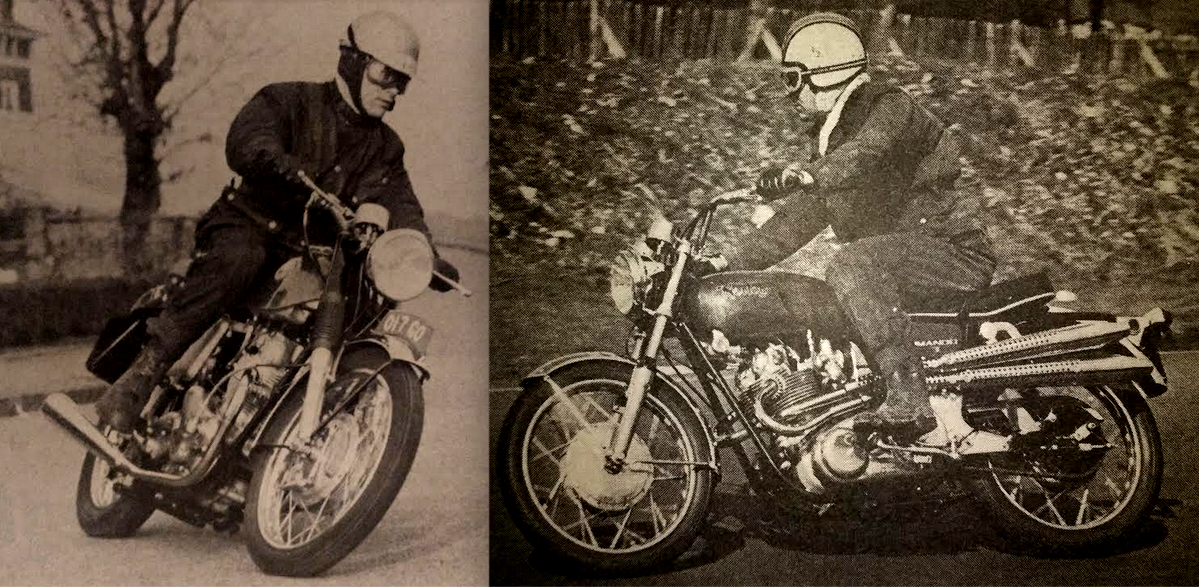
“BRITISH GRASS-TRACK CHAMPION Brian Maxted earned the title of giant-killer with a sensational victory over world speedway champion Ivan Mauger and European sand-track champion Don Godden at Lydden Hill. Although riding with a bone broken in his right foot, Maxted powered his 500cc Maxmade Jawa into first place ahead of ridfers from eight nations on a 640-yard grass-and-dirt oval at the Kent venue. He had to fight hard. Fifth on the opening round of the six-lap final, he clawed past both Mauger and Godden to a crescendo of screams from a crowd of 7,000. Mauger took second place on a 500cc Hagon JAP lent to him by Alf Hagon. The New Zealander had substituted at 48 hours’ notice for West German champion Manfred Poschenrieder, in hospital after a crash earlier at Munich. Godden trailed home fifth on another Hagon JAP—a slump performance for a rider who had won the European title only three weeks earlier.”
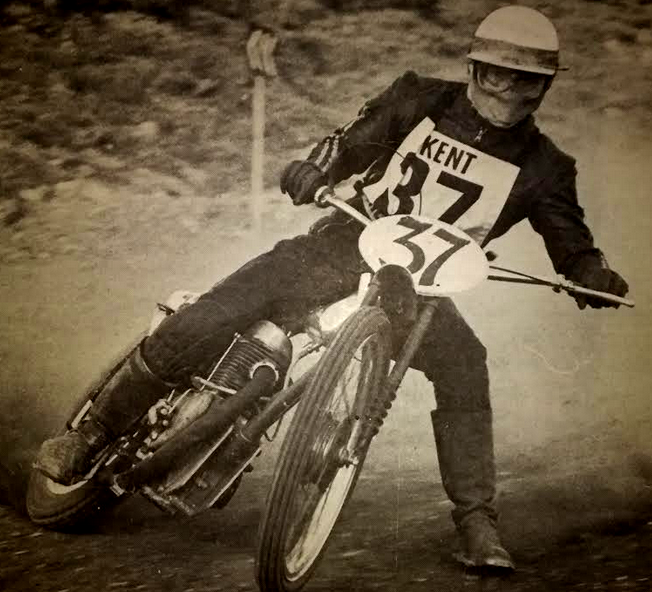
“BUYERS OF NEW 750CC R75/5 BMWs in Britain will receive 61s 9d change out of £900. In Germany the model costs about £550.”
“HOW TO BRIGHTEN UP the sales charts: last week I met two opposite approaches to this problem,” Nitor wrote. “Jack Reeder, Honda and Lambretta dealer in Woking, has converted his Continental Motorcycles to 2-Wheel Happening, complete with mini-skirted salesgirls, Pepsi-Cola vending machine and pop-record music bar. The non-riding public, particularly the free-spending young element, are to be won over to the idea that motor cycling is groovy, trendy and jolly good fun (Well, hasn’t it always been?) Opposite approach was struck at a Belstaff reception displaying their winter collection. The famous Stoke-on-Trent firm claim to be the world’s biggest manufacturer of motor-cycling clothing, with 35% of their production exported. When I commented that traditional styles were still clearly the order for 1970, ther chief designer stoutly declared that riders didn’t want to look like trendy teenagers—they were interested solely in keeping dry and warm at the keenest possible price.”
“IT IS TYPICAL OF THE CONSERVATISM of the British industry that the hydraulically damped telescopic front fork made no impression over here for many years after its invention by BMW. They introduced the tele on production machines in 1934 after having prototypes under test during the previous year. The first British tele appeared on the 1938 Norton factory racers, and it was devoid od hydraulics. Then followed the Matchless Teledraulic, with hydraulic damping, in 1944. Girder forks continued for the first year or two after the war, though by 1947 teles had become standard wear on almost all heavyweights.”
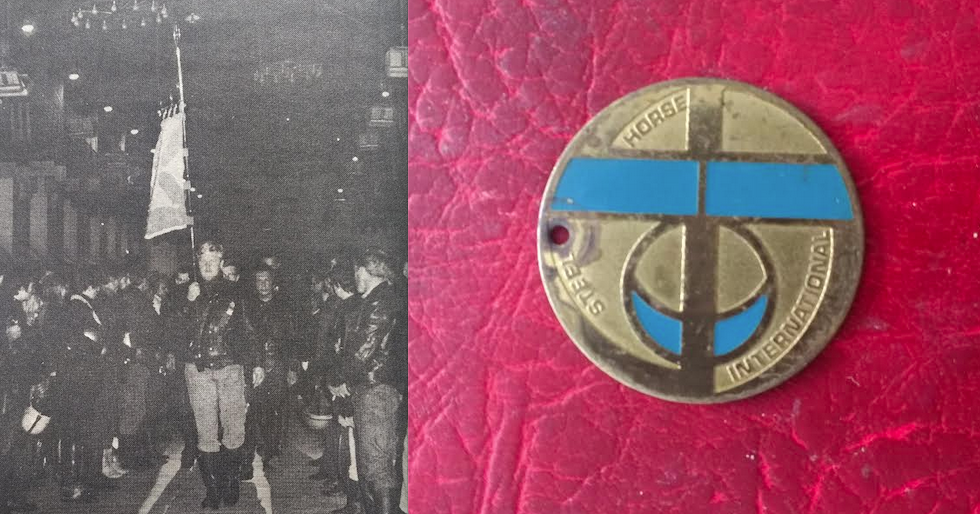
“IN SWEDEN A POLL AMONG schoolboys of 12-to-15 years old showed that 60% named their favourite sport as motor-cycle and car racing,”David Dixon reported. “Although, in a population of 8,000,000, there are but 45,000 machines registered, the majority are of 250cc and larger. Their riders are red-hot enthusiasts, avidly interested in racing. The sport is going well with 11 circuits in operation, most of them specially constructed.One of them is the Scandinavian Raceway at Anderstorp, where the meeting to celebrate the 10th jubilee of the magazine MC-Nytt was staged. An invitation to ride in a one-hour production race was too good to miss, even though I had packed up serious racing two years back…I was able to snaffle a Honda four and gallop it about 120 miles from Gothenburg to Anderstorp. Except in the cities, Sweden’s roads are, by British standards, deserted. They are also varied, some well engineered but many uneven and with loose gravel surfaces, since maintaining hard tops everywhere is too expensive owing to the damage done by heavy snowfalls and freezing temperatures usual in winter months. My experience of the glamorous Honda had been restricted to laps of the Nurburgring at racing speeds. Now came the opportunity to see how a similar model performed on bumpy gravel. I was soon cruising around the sixties; even on the loose corners the Honda was remarkably stable, with only the occasional front-end twitch as the ribbed tyre lost grip…On the gloriously deserted main-road swoops through endless pine forests and alongside lakes, the four purred with turbine smoothness at around 105mph. Tweaking the grip produced an instant response and sent the speed up to nearly 120mph—and this gait could be held for as long as road conditions allowed. This was real tireless performance, and particularly exhilarating in contrast to the congestion we are so familiar with on our cramped British roads…Quite a few Harley-Davidsons were in evidence, including, at Anderstorp, a weird chopped model whose Californian owner was over on holiday…That Triumphs intend to keep their grip on the market was obvious from the team they sent to Anderstorp—Percy Tait, Rod Gould, Malcolm Uphill and a fourth bike for Swedish ace, 50-year-old Billy Anderson…they cleaned up, filling seven of the first eight places in the production-machine race and gaining widespread TV and press publicity. Stanley Woods holding my Boyer of Bromley Bonneville for the Le Mans start augured well for the race but a shunt in front of me on the opening lap, and a four-lap baulking by a hectic local on a BSA Rocket three, ruined my hope of staying with Peter Butler on a sister bike. By the time I had got past the BSA he was well ahead and my race was enlivened only by a brush with a hare on a 95mph corner and a whack on my backside along the main straight. It was a ‘friendly’ pat from Rod Gould, who eased alongside as he was lapping me; we were doing about 120mph at the time! The bike, with a five-speed Quaife gear cluster, ran like a clock until shortly after half-distance. Then the gearbox went awry. It slipped out of cog three times, the revs soared and a valve was slightly damaged. And, shortly afterwards, the ignition timing went off song. By the end of the race the engine was revving to only 5,000rpm instead of its normal 7,000, and I was, in the circumstances, happy to finish seventh…On a fast left-hander I was cranking over till the generator casing grounded—that would have been impossible with safety two years ago…Off-track entertainment was provided by rides on an immaculate 1935 Husqvarna 350cc V-twin, a 50cc Honda Monkey Bike and a 1,200cc Harley Electra Glide. The Husky outing was a one-lap dash immediately after Stanley Woods had ridden it with his characteristic neatness and aplomb. A cloudburst had just hit the circuit. Even so, in that short distance on a wet track the bike impressed. Acceleration was distinctly lively. And the engine’s smoothness would put some present-day parallel twins to shame…On the rapidly flooding circuit, handling was surprisingly good, yet the bike was fitted with old, non-cling tyres. A greater contrast could scarcely be imagined than between the Monkey Bike and the Harley. With automatic clutch and three-speed gearbox the Monkey was ideal for nipping about. Percy Tait remembered some of his Royal Signals display-team tricks and made a lap of the paddock riding backward. Ray Pickrell tried handstands on the bars (while the 13-year-old owner rode) and Rod Gould practised wheelies. But the Harley—it was definitely a bike for the long straights. The chuffing of the big engine sounded like that of a young tractor and the weight was incredible. Owner Stig Sjoberg, who habitually dresses in a big hat, cowboy boots and jacket, is a Harley dealer.”
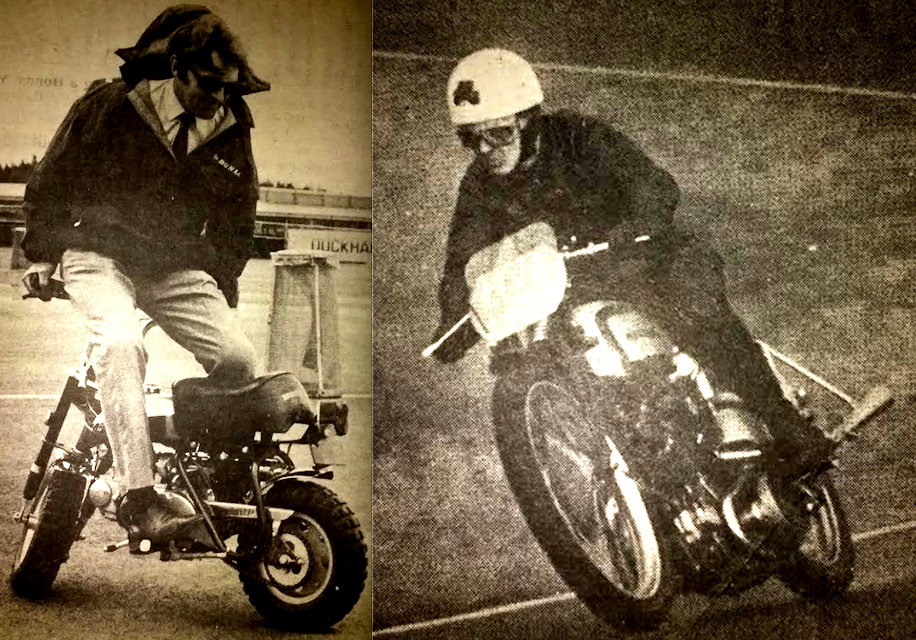
“YET ANOTHER ATTEMPT IS BEING MADE to persuade the FIM to recognise the American Motorcycle Association…For almost 20 years the US has suffered through indifferent links with world motor-cycle sport. Initially that mattered little, since events there were essentially parochial. Now, with racing, moto-cross and trials booming, and American enthusiasts keen to compete in Europe, closer links with the FIM must be set up. Way back it was considered that the AMA represented manufacturers, Harley Davidson in particular, rather than clubmen. For that reason, the FIM instigated MICUS (the Motorcycling International Committee of the US) in December 1962…On the other hand the AMA claim to represent over 1,500 clubs, to sanction around 5,000 events a year and to be quite free of trade control…The interchange of riders between the States and other countries should be encouraged, not hindered as at present.”
“RECENT CORRESPONDENTS HAVE DRAWN ATTENTION to examples of discrimination against motor cyclists. This is largely due to the activities of a hooligan element which has long concerned the British Motorcyclists’ Federation, as shown by moves we have taken to ensure that no rowdyism occurs at rallies and camping weekends. The problem of casual hooliganism extends far beyond motor cycling, but the fact that some of the offenders are on two wheels is particularly bad for us because public opinion is already far too hostile. The root cause of hooliganism lies in the fact that present-day education fails to instil a sense of civic decency. The BMF, not being composed of educators, sociologists or psychiatrists, cannot come up with an easy answer. But we must make it clear to hooligan riders, and to people troubled by them, that responsible riders are not prepared to be discriminated against. When encountering hooliganism, it may be better to call the police than attempt to cope with it by, say, barring certain people from a camp site; this may cause the enraged hooligans to give vent to their feelings on nearby property, maybe a cafe or pub which has previously been friendly to the organisers. Also, we must not accept discrimination without bringing it to the attention of the appropriate authorities.
Harold Booty, chairman, BMF, London SE11.”
“HAVING BEEN A MOTOR CYCLIST when all riders were enthusiasts, I am horrified by today’s motor cyclists. I am repeatedly buzzed by scruffy looking hooligans on high-powered machines making a horrible racket. For the good of all youngsters and other road users, all machines over 250cc should be banned.
A Mitchell, Enfield, Middlesex.”

“IAN WILSON IS OFF FOR A HOLIDAY at the end of the month. ‘I’m going where I have been for the past two years,’ he says—which does not sound very adventurous. But Ian, a 26-year-old Scot, is touring the Sahara by motor cycle. After two earlier trips, the first on a BSA C15 trials machine and last year on a BSA B40 military cross-country model, Wilson has planned a 5,000-mile escapade in the North African desert on a five-year-old Greeves trials job. Navigating by sextant and chronometer and equipped with 22 gallons of petrol and water, he will trace the routes of camel caravans and oil-exploration parties across desolate sand plains and high dune ranges. From his start-finish point at the port of Algiers, he will penetrate at his farthest southerly point 1,500 miles into the continent through Algiers, Chad and Niger…Petrol points are few and far between, with water sources separated sometimes by hundreds of miles. Last year, in company with a 39-year-old Army major—who broke two ribs in a 35mph crash in a soft-sand patch—Wilson covered 750 miles in seven days in the trackless Tenere de Tafassasset area of the Sahara without seeing anyone and without taking on petrol or water. And his Army B40 laboured on for days with a burnt exhaust valve made reasonably serviceable with Araldite resin! With an angle-alloy frame bolted on the greeves to carry six two-gallon polythene jerricans and with a two-wheeled trailer carrying two five-gallon cans and gear, he is well equipped with petrol and water…He takes no tent, just a sleeping bag. And he has no fears for his Greeves. He is taking only 10lb of spares, including a crank assembly, cables and chains. ‘A motor cycle is much more versatile than a four-wheeler and a trials bike is perfect for the conditions. I don’t know why the oil companies don’t use them for reconnaissance,’ Wilson says.”
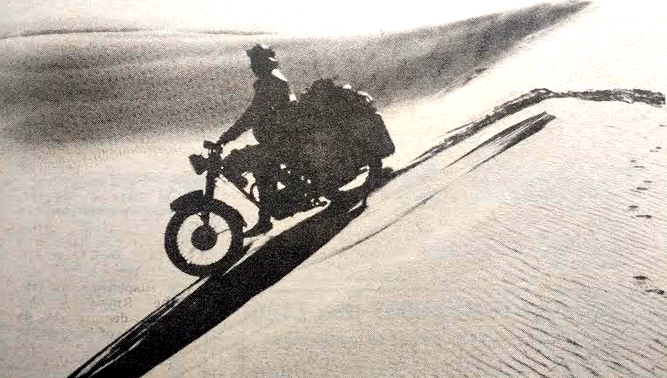
BOB CURRIE GOT TO GRIPS WITH AN INTERCEPTOR: “When Royal Enfield production ceased at the famous Redditch works and was switched entirely to the underground factory at Bradford-on-Avon, output was largely concentrated on the big Interceptor twin. Last year, with the introduction of a redesigned crankcase assembly embodying car-type, wet-sump lubrication, it became the Series II Interceptor…there is a hefty crankcase undershield in expanded metal (hardly necessary for Britain but American riders go scrambling on Interceptors and a chromium-plated grab rail at the rear of the dualseat. Produced primarily for export, the big Enfield normally has a chrome-plated, two-gallon fuel tank and high-rise American handlebar. For British riders there is the alternative of a 4 1/4-gallon tank and a conventional handlebar. The Interceptor is massive—high-built and long, with the huge long-stroke engine completely filling the main-frame diamond. On elegance it concedes a point or two to rival makes. Yet craggy grandeur has its own attraction…In all, it is a happy enough riding position except that the footrests could be an inch or two more rearward to allow the rider to get down to it better at high speed. Though the Interceptor is weighty, any feeling of bulk disappears as the bike gets into its stride. The impression is of a made-in-one-piece job floating over the road as serenely as a mallard on a millpond no matter what may be happening to the wheels…the suspension manages to be firm and gentle at the same time. It is pure Norton at the front and since Enfields themselves were among the first to produce pivoted-fork roadsters in the modern style, they know what’s what at that end…the Interceptor sat on the bends as imperturbably as a rock, dead on line and with never a hint of stepping out…the main weight of the assembly is low, lending a nice sense of balance and permitting the machine to be wriggled through a series of bends as nonchalantly as a two-fifty. What does strike home is the tremendous torque of the 736cc engine—a long-stroke…with the relatively low compression ration of 8.5 to 1. Sheer brute power is on hand from way down the rev scale, with an even bigger supply coming in from 3,000rpm upward, and that makes for a bike which can do nearly everything on top gear. It is tractable in traffic, too, though a minor annoyance was some unevenness in the carburation when the twistgrip was eased fractionally off the stop. Inevitably this brought the occasional stall when inching through rush-hour traffic. Yet the tickover was a slow and reliable as that of a county-council steamroller, and the machine would leap into action immediately the grip was tweaked…A short vibration period is noticeable at about 90mph in top gear, but above that the engine smooths out again and, wind pressure apart, there is no difficulty in blasting along at 100mph and more…On fuel consumption the Enfield was downright thirsty. Of course the ultra-high performance has to be paid for, but 35mpg when travelling quickly is an uncommonly high price to pay…the 8in-diameter front brake is exceptional powerful, even though it is of single-leading-shoe pattern, and it was possible to make the front tyre squeal with only light pressure. Using both brakes together the machine returned a braking figure much shorter than expected for such a heavy model…Transmission smoothness was well above average, thanks to the rubber cush drive in the rear hub. The Interceptor has a similar cush drive in the clutch centre, so that should add up to lengthy chain life…A really meaty performer, exhilarating when in full cry yet thoroughly docile when the houses start to crowd in along the roadside, the Series II Interceptor is certainly the most potent Royal Enfield ever. It is probably one of the most house-trained too, for this one (unlike some of its predecessors) remained completely oiltight after several hundreds of miles of hard riding. Keep an eyer open for the Series II: you’ll be seeing it around in production races.” Put through its paces at the Motor Industry Research Association proving grounds the big Enfield recorded a two-way average of 112mph (“12-stone rider wearing two-piece trials suit and gumboots”) with a one-way top speed of 119mph helped by a “strong three-quarter following wind”.

“STAR TWO-WHEELER AT JAPAN’S biggest-ever motor show in Tokyo is Yamaha’s new six-fifty. It is powered by a single overhead-camshaft twin designed on the lines of the engine of theToyota 2000 GT sports car. Fitted with SU-type caburettors, the Yamaha produces a claimed 53bhp at 7,000rpm on a compression ratio of 8.8 to 1. Top speed is said to be 115mph. Both Yamaha and Kawasaki display large-capacity two-stroke, single-seater trail bikes, Yamaha a 360cc and Kawasaki a 350cc with rotary-disc induction. The Yamaha is available in full moto-cross trim. Honda show off-the-road versions of their CB450 and CL350 twins, both with altered engine characteristics giving better power at low rpm. But, despite their cross-country aspirations, the two Hondas weigh in at 401 and 364lb and top 106mph and 80mph respectively.”


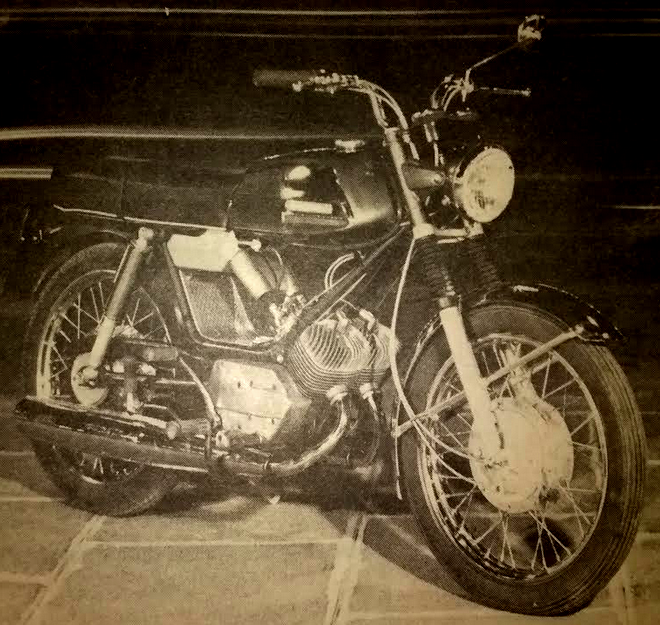
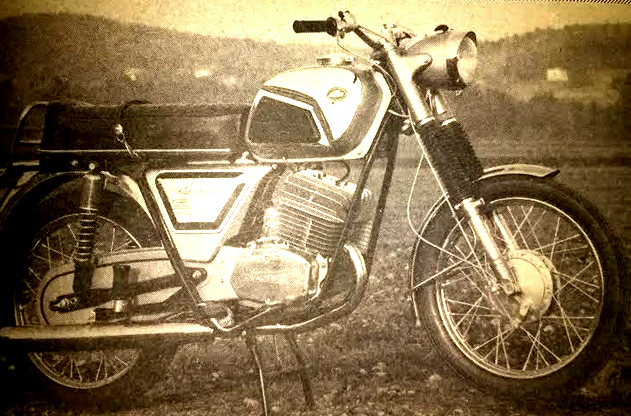
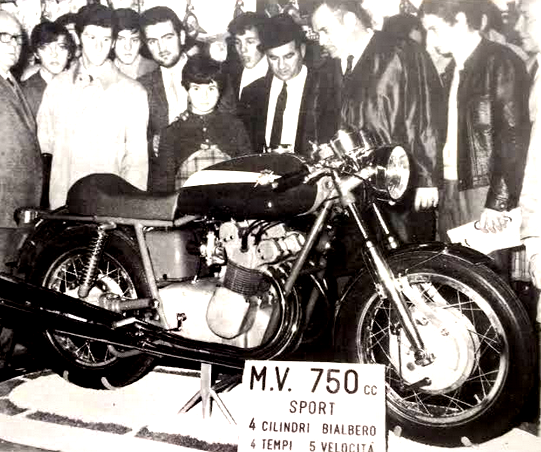
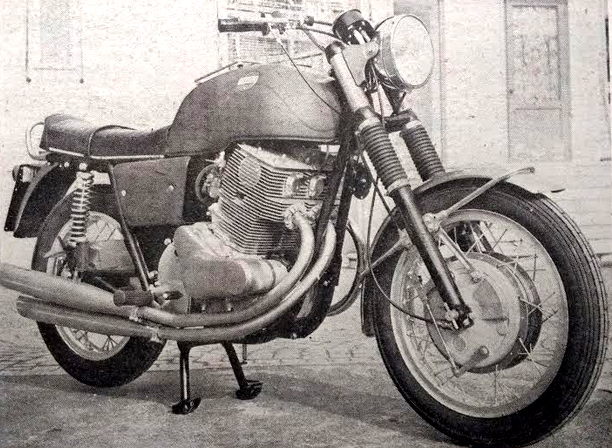
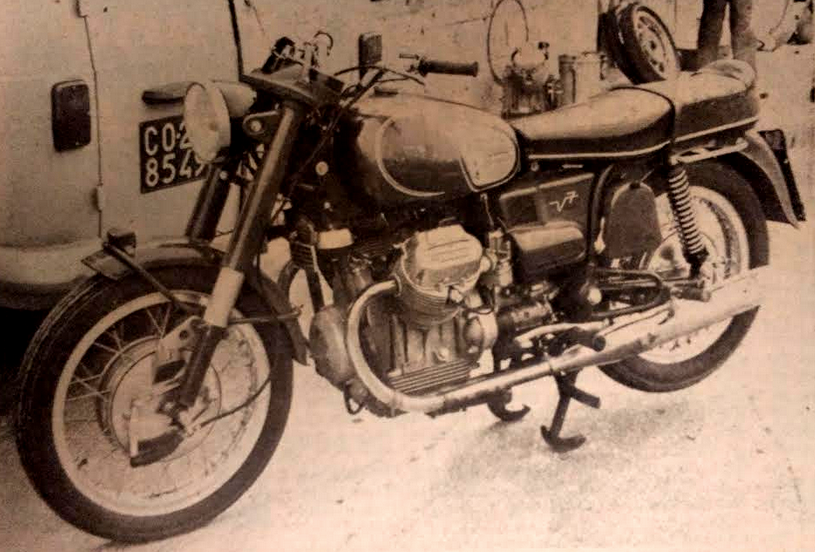
“RACING SONS OF RACING FATHERS are by no means uncommon; there are John Surtees, Stuart Graham, Jimmy Guthrie, Mick Boddice, Pip Harris, Gordon Daniels and several more. But Roger Haddock, 27th on an AJS in the Junior Manx, can go one better. He’s a third-generation racer. Records show that his grandad, Bert Haddock, was sixth in the 1914 Junior TT. What they don’t show is that Bert should never have been riding, and that it was his bike that won the race. Bert injured himself in practice, so the AJS camp reallocated his bike to Eric Williams. But, determined to get a ride, Bert sneaked out of a window in Noble’s Hospital and, donning leathers over his pyjamas, grabbed the only spare model in the AJS garage (Eric’s, of course) and made his way to the starting grid. It was Bert’s bike, ridden by Williams, that won, while Bert, on Eric’s mount, got a very game sixth place. Full of backbone, these Haddocks!”
“AMONG THE FIRST POLICE forces to use the 750cc three-cylinder Triumph for patrol duty are the Geneva constabulary, in Switzerland.”
PLANS FOR A SPEEDWAY CIRCUIT in Weston-super-Mare were opposed by the local medical officer of health and public health inspector.”
ERNST HENNE APPEARED ON GERMAN TV riding one of the new BMW R75/5s to celebrate the 40th anniversary of his first world-record attempt. Correspondent Dennis May waxed lyrical, recalling that “he donned his meteorcycling suit and made his first and immediately successful bid for the title of the world’s fastest rider. Spacemenlike in [white] leathers that fitted his lithe form like a body stocking, a faired-to-his-nape helmet and a cone-shapped appendage strapped to his posterior, he blasted over a mile stretch of the Munich-Ingoldstadt highway at 134.68mph…Thumbs up for BMW and Germany, thumbs down for JAP (whose engines had powered the four previous world-record bikes) and Britain. Moreover, wheras JAP and the Anzani and Indian predecessors had gone all the way to the statutory 1,000cc limit, BMW voluntarily accepted a quarter-litre handicap, using only 750cc.” The ohv engine, fitted with a Zoller eccentric vane blower, developed 55hp at 6,000rpm.
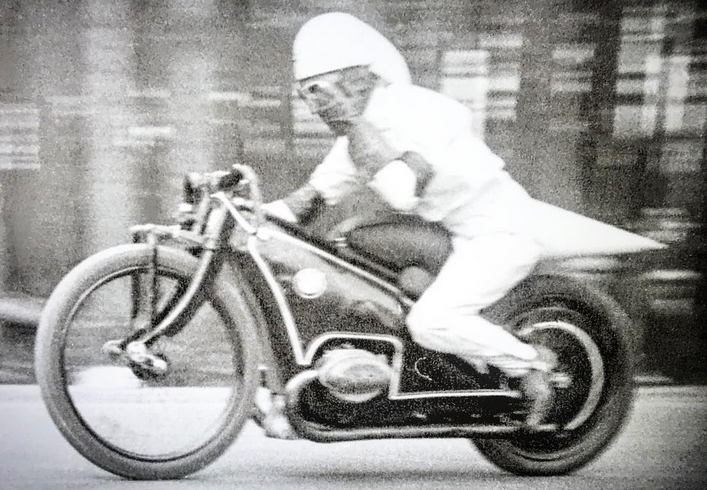
“BSA’S SECRET WEAPONS—TWO HUSH-hush bikes aimed at halting a big slump in profits—will be ready next summer. Giving this news to shareholders, chairman Eric Turner said that BSA’s only hope of a dramatic improvement in group profits was a very large increase in motor-cycle sales during the next few months.”
“THE PROVISION OF EAST GERMAN MZ two-strokes for Britain’s Trophy team in next year’s ISDT was discussed between MZ competitions chief Walter Kaaden, Alfred Hartmann of the East German federation and ACU representatives on Monday but no decision is likely to be reached this year.”
SUZUKI OPENED A FACTORY at Tokoyama with a capacity of 2,000 bikes a month.
“IN A DETERMINED BID TO PREVENT Britain’s Trophy sextet from riding foreign machinery in next year’s International Six Days Trial, six well-known dealers, led by sidecar trials veteran Bill Slocombe, are offering to provide the team with brand-new British mounts. In addition to Bill Slocombe, they are former ISDT teamsters Ken Heanes, Allan Jeffries and Jack Williams of Cheltenham, plus Comerfords and Elite Motors…The scheme started [after] the FIM dropped the rule restricting Trophy men to machines made in their own country.”
“SCOTLAND’S ONLY TELEVISION SCRAMBLE of this winter has been axed by the BBC. The reason given: all equipment in Scotland is already fully booked on the date scheduled for the scramble.”
“NOT SO LONG AGO it was considered no mean feat to ride 1,000 miles in 24 hours on British roads. Of course, since motorways have now spread around the country, to average a measly 42mph would be well within the capacity of any touring machine and rider worth his salt. But if we didn’t have to worry about that wretched 70mph limit, what sort of averages could a really determined fellow achieve on M-roads? Over in Germany a trio of 757cc Moto Guzzi V-twins set out along the bahnburners’ stamping ground, the Hamburg-Vienna highway. Two of them were solos, the third a Steib-equipped sidecar job. The outfit had to pack up when its fuel tank sprang a leak, but the solo boys pressed on, up and down, for 24 hours exactly. Checking their speedometers, Erwin Müller found he had recorded 2,827km (1,756 miles) and Hugo Schmitz 2,766km (1,718 miles)—put another way, averages of 73 and 71mph. And these were overall speeds on touring roadsters in cold, wet autumn weather.”
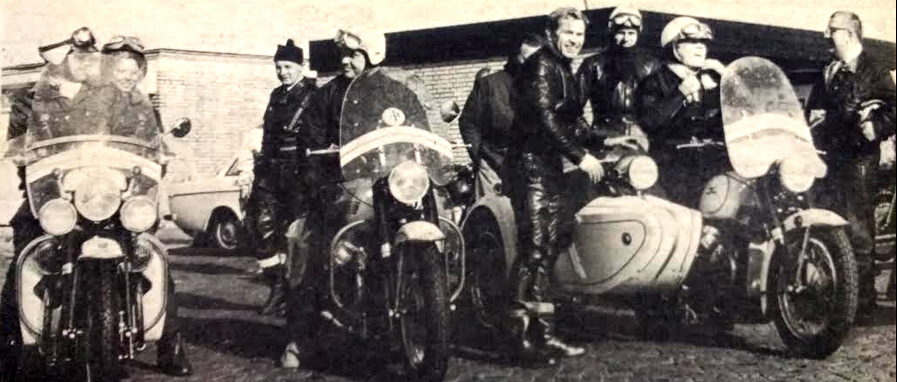
“THE IRISH SEA FERRY TIMETABLE won the trials world’s top solo title for the outsider John Harrison, from Dublin, is the British Experts. Making a stand against the delaying tactics of the top riders, the organising Birmingham Club ruthlessly excluded all the solo competitors, except Harrison, for lateness. And the 33-year-old accountant’s name went in the record books simply because he had to rush around the course—loosing 100 marks on his 250cc Bultaco in the process—in order to catch the boat home. Told of the result by Motor Cycle, Harrison said: ‘I’m flabbergasted. It just can’t be true.’ His previous best performance in the trial was a lowly 19th place in 1961. The club’s decision probably robbed Sammy Miller of a first-ever Experts’ hat-trick. For, although officials published no solo results other than Harrison’s, the works Bultaco ace estimated that he was at least 20 marks clear of the field. Miller’s only comment on Sunday evening was that he was ‘disgusted’. Olga Kevelos, the clerk of the course, said that riders had been standing around and refusing to attempt sections. ‘I’m not worried about what we did. It was for the greater good of all trials. There was ample time for the course, despite the foul weather,’ she added. Previous winner Jeff Smith agreed. ‘It was like taking part in a funeral procession with everyone jockeying for a place at the back,’ he said. His BSA team-mate Arthur Lampkin admitted that at one stage he had spent 2½ hours in a pub waiting for the rest of the entry to come along and catch him up. While riders were battling with the sleet and rain, one fancied runner was asleep in bed. Suffering from bad toothache, Montessa ace Don Smith had taken two pain-killing tablets the night before the trial and left instructions with the hotel porter to call him early in the morning. But the porter forgot to knock up the European champion, and when he finally awoke he was just in time to have lunch before driving back to London. ‘I had a wonderful kip,’ he said, ‘and the way the Birmingham Club were performing, I am very happy I didn’t make the start.'”
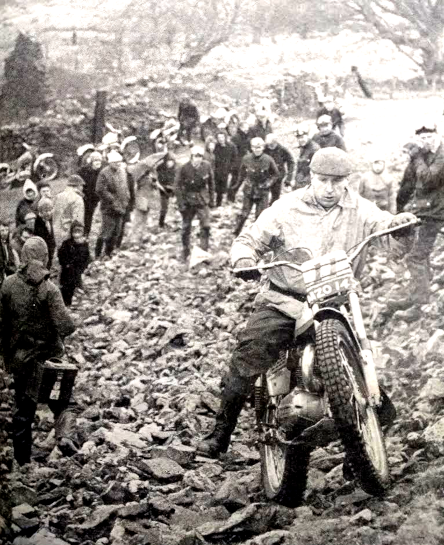
“CHESHIRE SCRAMBLER JOHN DONE’S career as a scrambles tutor has ended before it could begin—victim of the almost forgotten feud between the Auto-Cycle Union and their Midland-based rivals, the Amateur Motor Cycle Association. He was to have acted as an instructor at a scrambles school which AMCA member Peter Stones is opening at the AMCA’s North Staffs and South Cheshire Club circuit at Bentley, near Crewe. Now he has decided to withdraw after receiving a letter from ACU secretary Ken Shierson threatening him with the loss of his competition licence. ACU rules prohibit any member from assisting, belonging to or lending his name to any unaffiliated organisation in this country running motor-cycle sport. The AMCA, founded in 1931, is not affiliated to the Union. “They refuse to become affiliated for reasons which are now archaic, said Shierson. “There is no difference between amateur and professional, and no reason why the AMCA should not join the ACU. His action brought a scornful response from AMCA secretary Don Green. “We get along with the ACU’s Midland Centre very well,” he said. “It’s the ACU in London, Shierson and their Chairman Norman Dixon, who want to put us out of action but we don’t take any notice.”
“ABOUT TWO YEARS AGO the Norton Owners’ Club comprised two branches, one in South London, the other in Bristol,” said Motor Cycle editor Harry Louis. “Now there are two more in England (Newcastle and North London) and one in Sweden. Early in the new year there should be another three in England and one in Chicago, USA. Members, particularly the founders, are proud of this speedy progress. They are entitled to be. Other one-make clubs cannot, I think, claim such a short space of time but all seem to be flourishing while most open-to-all clubs are going through a static period or tending to shrink. One-make clubs have an edge on the others because they enjoy the additional tie among members of a common interest in the bikes they ride. Often enough it is more than just an interest, for the fund of bikelore accumulated is unique and an enormous help to the less experienced riders. Some of these clubs, pledged to defunct marques, even offer a spares service to keep the old bikes running. Rudge and Douglas are outstanding examples. Open-to-all clubs concern themselves largely with sport in which, inevitably, competition becomes keener and machines more specialised. For this reason their appeal is narrowing. In contrast, the attraction of one-make clubs seems to be getting stronger. Currently open-to-all clubs in England and Wales have a total membership of around 50,000; one-make clubs rather more than 20,000. The gap looks like closing.”
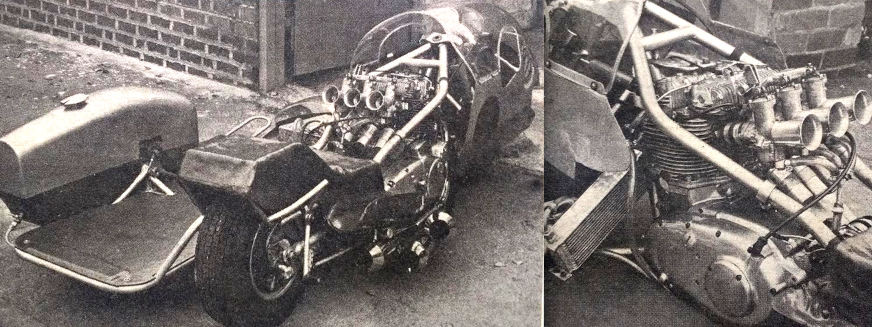
MOTOR CYCLE EDITOR HARRY LOUIS, a serious long-haul rider in his own right, recounted some of the exploits of Mario Artusio of the BMW Club Turin, organiser of the Stella Alpina Rally to the summit of the Colle Sommeiller, near Bardonecchia in north-west Italy. “His latest long trip was from Turin to the Langstrecken Zielfahrt accompanied by a pal, Bruno Ciravegna, on another R69S with his diminutive wife Alda on the pillion. They did just over 1,000 miles from Turin to the rally venue near the German-Danish border non-stop except for fuel and meal halts in just under 22 hours to check in to time (2pm on the Saturday) at Trappenkamp. Although a fair slice of the mileage was on the German motor roads, they had to cross the Alps, put up with a lot of night mist in Germany and, as part of the rally, get their control cards stamped by police in listed villages en route—a time-consuming business. This sort of lark is almost commonplace to Mario. One of his most impressive runs was to get the breakfast-time ferry from Dover to Boulogne, ride through France (not a mile of motorway) and make Turin that evening; ferry trip, about 620 miles including the Mont Cenis Pass, in a day’s run. That’s real motor cycling. Incidentally, Artusio’s R69S is eight years old and has covered well over 90,000 miles but is, of course, maintained in first-class nick.”
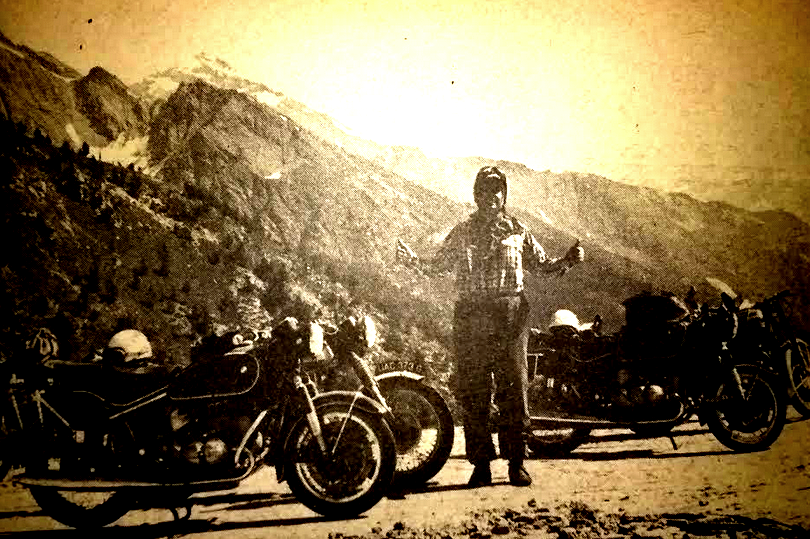
“MAYBE STATISTICS CAN’T LIE; but they can conceal an awful lot,” Bob Currie pointed out. “To judge from the record alone, Britain’s only 1969 road-racing world champion, Dave Simmonds, had smooth sailing all the way in his ride to fame. Eight wins, two second places, from the 10 championship rounds he contested. Great. But smooth sailing? Hardly…Certainly the bike was a works model, an eight-speed, water-cooled 125cc Kawasaki twin. But it had been built as far back as 1966 (in fact it was the one which Toshio Fuji had ridden that season), and the only spares available for it were from the factory’s rapidly dwindling stock. And in case the term ‘works rider’ conjures up an image of a retinue of factory mechanics in beautifully laundered overalls, just ponder this fact. Dave Simmonds was very much on his own—one man, riding and working on the Kawasaki, his base a caravan-cum-workshop lit by Calor Gas. Before the season began the factory had given up hope, not only of winning a world championship but of even scoring a single grand-prix win. For 1969, therefore, says Dave: ‘They sent me a box containing two spare crankshafts, four pistons, a few sets of piston rings and various other oddments. It was virtually all they had left in stock. That was it, and the best of luck!’ He had acquired the model on signing for the factory at the start of 1967, together with a spare engine and a supply of bits and pieces. They had been reluctant to let it go without a works mechanic in attendance; instead Simmonds went through a three-week course at the factory, from which Kawasaki were satisfied that he was a competent mechanic in his own right…it was at the Dutch round that the real problems began. First practice and a seized piston; change to the spare engine for the practice session—another seizure. So that meant rebuilding one of them in double-quick time to scrape in sufficient qualifying laps in the final practice period. Yet in the race the Kawasaki went like a bird, and another win was in the bag. From then on to the end of the year the pattern went on that way—endless bother during practice, qualification with the barest minimum number of laps and a virtually trouble-free ride in the race proper after a mid-field start. ‘In 10 championship races,’ comments Dave, it was always “alright on the night”…Mainly the troubles were piston seizures…but there were variations—a sheared crankpin in Belgium, a crunched up rotary disc in Italy, a locked-up big-end in Czechoslovakia. The Belgian episode was typical. In the first practice the bike went only 100 yards before a piston tightened. The spare engine broke its crankpin while on full-song along the ultra-fast Masta straight. Finally, after yet another rebuild, they squeezed in just enough laps to qualify, then ran out of petrol. Or how about Italy? A burst of throttle during practice. One lap—seize! The day was almost over by the time the other engine had been fitted—and that went crunch while being warmed up in the paddock! By the light of their Calor Gas mantle, Dave and Bill Boddice worked on, calling it a night as midnight approached. But Dave was up at 6.30 next morning to complete the reassembling and get the bike to the start line. And how did it go in the race? Marvellously! A win—and a lap record into the bargain, beating Luigi Taveri’s record on the five-pot Honda by 2½sec…For a time the congratulatory telegrams from the Kawsaki works came flowing in, but after the Dutch round the firm didn’t bother; a win was by now customary…”
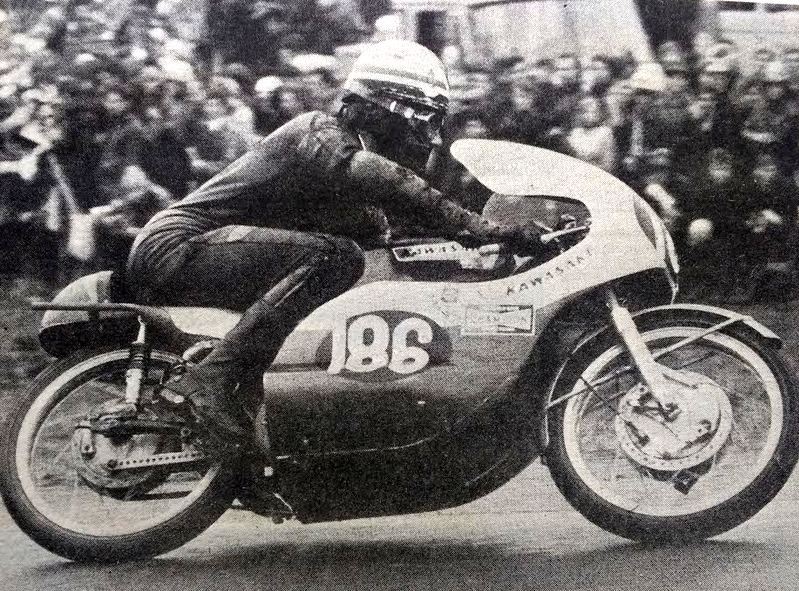
TRIUMPH SPEED TWIN DESIGNER Edward Turner listed the features of his ideal bike: a 500cc in-line four, 40hp delivering 100mph-plus performance and shaft drive. Turner suggested that a lightweight, inexpensive four could be the motor cycle for the next 30 years, as the parallel twin had been for the previous 30 years.
AS THE SIXTIES DREW TO A CLOSE Motor Cycle listed every marque on the British market: Alta (Suzuki-powered trials and scramblers), Aermacchi (racers), AJS (scramblers), BMW, Bond (three-wheelers), Bridgestone, BSA, Bultaco (trials and scramblers), Capri, Cheney (scramblers), Cotton (trials), Crooks Suzuki (racers), CZ, Dalesman (scramblers), Dot (trials, scramblers, racers), Ducati, Dunstall (rolling chassis), Egli Vincent, Elstar (grass-trackers and speedway), Garelli, Gaunt Jawa (trials), Gollner BSA (trials), Greeves (scramblers), Harley Davidson, Honda, Husqvarna (scramblers), Itom, Jawa, Kawasaki, Kennedy (rolling chassis), Kuhn Commando, Lambretta, Maico (racers and scramblers), Mobylette, Montesa (trials and scramblers), Moto Guzzi, Munch, Norton, Ossa, Puch, Reliant (three-wheelers), Royal Enfield, Saracen (trials), Scott, Seeley (racers), Shepherd (racers), Spite (trials and scramblers), Suzuki, Triumph, Velocette, Vespa, Yamaha.
“AS PART OF A PRUNING PROGRAMME promised to shareholders, the BSA group are to close their branch works at Redditch, Worcs…Since the 1920s several BSA-group models including the famous 493cc Sloper and the post-war Sunbeam twins have been built at the factory. Lately the plant has produced components plus Tiger Cub, Tina and Bantam engine units.”
DAVID DIXON REVIEWED SOME of the racers he’d ridden in 1969: “At the serpentine Mondello Park, 30 miles south-west of Dublin, Danny Keanny set me loose on his TD2 and TR2 Yamahas, undoubtedly the machines of the year in the hands of Kent Anderson, Rod Gould and Phil Read. These models proved that a production racer can be a match for the works multis from Italy. In the hairpin-ridden confines of Mondello I soon discovered why…It all happened from 7,500rpm; the 250cc TD2 rocketed away, with revs surging to peak peak at 10,500rpm in the first three cogs…Though I expected it to be the more tractable, the three-fifty TR2 proved the opposite because the carburation was still being sorted out. On all the Yamaha racers delivered to Europe, carburation was well out…Much of the trouble was at the bottom end of the scale and was due to excess oil from the positive lubrication system getting into the combustion chambers. The only cure, adopted universally, was to seal off the oil feed and revert to petroil lubrication. So much for progress! The ten extra horses of the TR emphasised just how light the Yamahas are at the front end. Whacking the throttle hard in the lowest three ratios lifted the front wheel clear of the deck along Mondello’s short start-and-finish straight. A couple of slides on the two medium-speed bends convinced me the surface was slippery but inspection proved otherwise, and I could only blame the Yokohama tyres. It is curious how the Japanese can produce such superb engines but not the tyres to transmit sll the hard-won power! They have nothing to learn about brakes, for those on the Yamaha were fantastically powerful though, like all really potent drum brakes, they require extra-sensitive application to avoid locking at low speeds. I much prefer the delicate feel, and equally powerful stopping, of hydraulically operated discs—especially in the wet, which is where discs really show up to advantage. The two six-speed 350s I galloped, a Bridgestone-powered Altair disc-valve twin and a Bultaco TSS single, were poles apart. The Altair’s narrow power band was typically stroker twin and it impressed because of its violent acceleration—and an equally powerful seizure! What the Altair lacked the Bultaco had— wide power spread, superb handling and a comfortable riding position. Were I a newcomer to the 350 class I would choose a Bultaco, for it could not be bettered. It lacked vices and was a very safe, forgiving mount which would be ideal for a beginner in a class notable for a lack of new machinery. Stan Shenton, of Boyer of Bromley, let me sample a 750cc Triumph race conversion engine of his in a modified Daytona frame. The idea is to use the lighter handling qualities of the smaller frame and have the advantage of an improved power-to-weight ration. The marriage certainly succeeds, for the handling was impeccable, but the extra urge did not seem to me equal to the best 750s against which the bike would have to compete…Possibly the most competitive 750 of the year was Vincent Davey’s Gus Kuhn Commando. Davey, boss of the outfit, modified a Seeley frame and dropped in a works-tuned Norton 750cc engine. In the hands of Mick Andrew and Dave Croxford it took a lot of beating, mainly because the superb handling of the Seeley frame allowed the 65-plus horse power of the Norton to be used to the ultimate. The shattering acceleration from as low as 4,000rpm right up to 7,000rpm was just the sort of power needed to waft it between corners quicker than almost anything else. My only complaint was that the turbine-smoothness of the Commando was lost because the unique rubber mountings could not be used with the Seeley frame.”
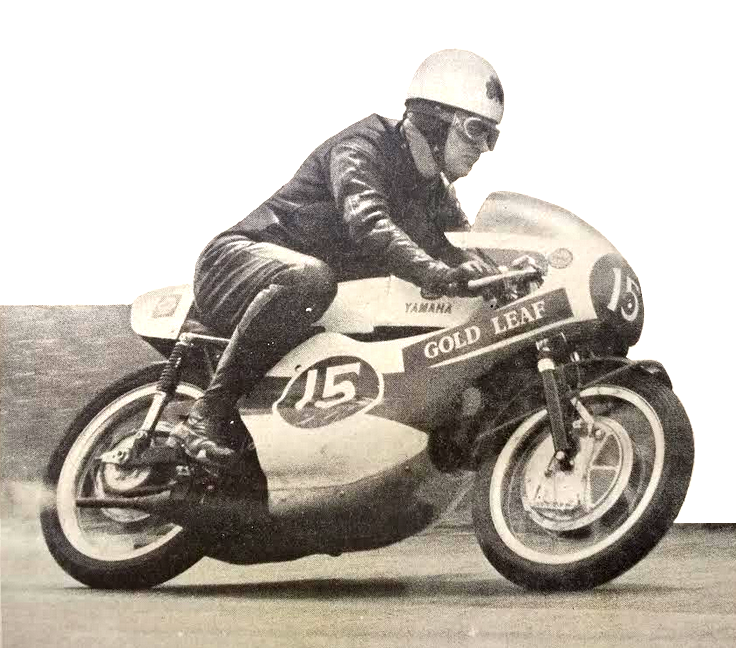
“WE TEND TO BE VERY CRITICAL of some films which bring in motor cycles,” Nitor remarked, “a quite understandable reaction dating from the early 1950s when Marlon Brando mumbled his way to fame and our way to notoriety in that controversial melodrama, The Wild One. But let’s face it, film producers are in business to make money; and sex and violence seldom fail to score at the box office. Inevitably, the exploit the more sensational aspect of motor cycling, confident that no worthwhile commercial interest or pressure group is going to kick up a fuss. Hence, cinemagoers and critics would be less than human if they didn’t take the subject matter at its face value. However, the latest sickle-oriented epic, Easy Rider, is an exception, and well worth seeing. A stunning look at America today, it is the story of two young riders, played by Peter Fonda and Dennis Hopper, who travel across the States on their heavily customised bikes, encountering various adventures along the way. The film catches the feel of motor cycling in a way I had never thought possible.” Sonny Barger, president of the Oakland Chapter of the Hell’s Angels, was less impressed: “Easy Rider, supposedly the greatest bike movie ever made, wasn’t really a bike movie at all. It was a movie about two drug dealers who happened to travel cross-country on bikes.”
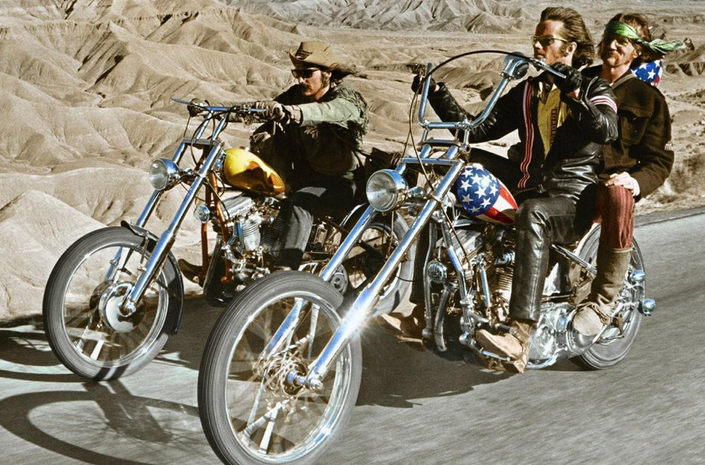
“EARTH ORBITS; SPACE WALKS; MOON LANDINGS; a decade of tremendous technical progress is coming to an end, with man poised for even greater, more sensational achievements. Yet, while overshadowed by the titanic events of the space race, the world of motor cycling has, during the 1960s, had a multitude of moments, and men, to remember, In every sphere of two and three-wheel sport, riders and technicians have made history, have left some mark which will remain forever in the annals of motor cycling. Here is our selection of the men and moments of the 1960s to remember…Giacomo Agostini: Italy has produced many brilliant riders but none can match Ago’s record in the bigger classes. Not even the mighty combination of Hailwood and Honda could prevent him from winning six world championships. Dave Bickers won the 1960 and 1961 European 250cc moto-cross title series, forerunner of the present world championship in the class. Rode Greeves until 1963 then, after a spell on Husqvarnas, changed to the CZ he rides today. George Brown, 58,
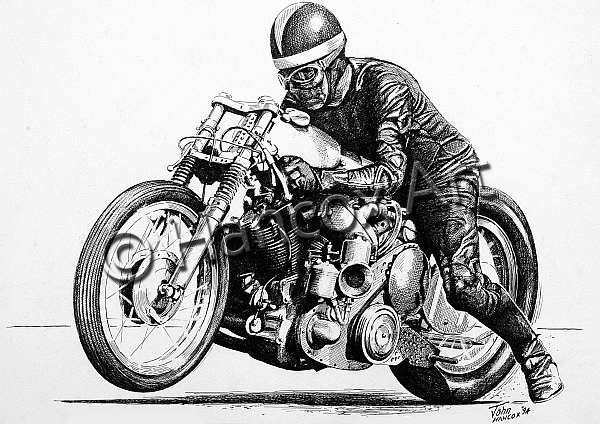
father of post-war British sprinting, has set more short-distance records than any other rider—mostly on his famous Vincent specials Nero (unblown) and Super Nero (blown). Fastest two-way motor cyclist in Britain, with 189.33mph for the solo flying quarter-mile and 158.45mph for the sidecar flying kilometre. Brown made nonsense of the FIM age limit of 55 for world-record bids and so brought about its abolition. Ernst Degner, once an MZ star, revolutionised Japanese two-stroke design after a sensational escape to Western Europe following the 1961 Swedish TT. Joined Suzuki and won their first 50cc TT and the world title in 1961. Helmut Fath, the 40-year-old West German sidecar star, is a unique combination of guts, driving ability, engineering genius. After winning the world championship on a much modified BMW outfit in 1960 he was seriously injured in a crash at the Nurburgring…For five years he was unable to race. This gave him time to design, build and develop his own four-cylinder power unit. In 1968, on his own Urs outfit with this engine, he regained the title. Paul Friedrichs ended the four-stroke dominance in the world 500cc moto-cross championship. Starting riding in 1960 at the age of 20, he was at first prevented from travelling from his home in East Germany west of the Iron Curtain…But when able to contest the championship, in 1965, he rode his Czech 360cc CZ into second place. Then came firsts in 1966, 1967 and 1968. Ove Fundin, winner of more speedway world titles than any other rider with victories in 1956, 1960, 1961, 1963 and 1967, is a 36-year-old Swede. Mike Hailwood’s dazzling record of wins and record laps fits neatly into the 1960s, for he won the first of his nine world championships in 1961 and retired from full-time racing in 1968. Born in Oxford in 1940, he started motor cycling when he was seven; in 1957 began the racing career which won him wider fame than any other motor cyclist. First world championship was won on a 250cc Honda; then he switched to factory MVs and dominated the 500cc class for four years. After joining Honda in 1966 he won both the 250 and 350cc world titles that year and the next. From 1961-67 Hailwood won 12 TTs (the only man to better Stanley Woods’ earlier record of 10); still holds the lap record at 108.77mph. Alf Hagon: The first rider in the world
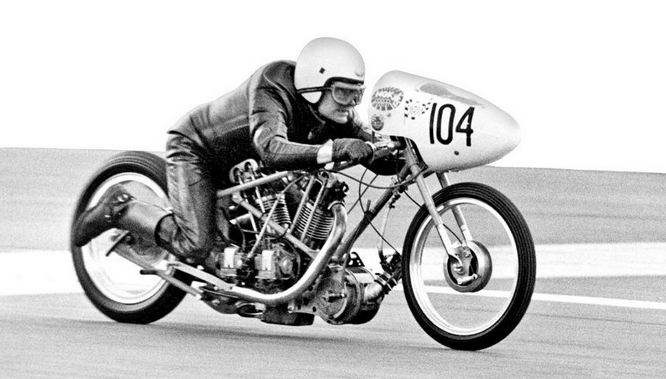
to beat 10sec for the standing quarter-mile under world-record conditions, averaging 9.954sec on his 1,260cc Hagon-JAP at Elvington two years ago…only rider to clock more than 200mph in Britain with a one-way 206mph. Previously a grass-track star, he brought his bag of national championships (350 and 500cc) to 11 during the 1960s. Torsten Hallman has won more moto-cross world championships than any other rider—the 250cc crowns in 1962, 1963, 1966 and 1967 on Husqvarnas. Has netted also a record 36 grand-prix wins; was a member of Sweden’s Trophee des Nations team in their record five-win run from 1963-68. Doug Hele, 49, now Triumph development engineer, put the pushrod engine on the racing map. His Norton Domiracer was the first pushrod bike to lap the Isle of Man Mountain course at 100mph when Tom Phillis finished third in the 1961 Senior TT. Soichiro Honda, 63-year-old president of the vast Honda empire, made his 10,000,000th motor cycle last year after only 20 years in production…He, too, was responsible for the decision in 1959 to launch Honda on their astonishingly successful international road-racing programme during the 1960s. Bill Ivy in 1968 became the first man to lap the IoM TT circuit at over 100mph on a 125cc machine; won the 125cc world championship a year earlier. This year he swopped to Jawa and was killed while practising for the East German GP, at the age of 26. Bill Johnson, now 45, still holds the official FIM world speed record which he set at 224.5mph for the flying kilo at Bonneville in 1962. Although some 20mph slower than Bob Leppan’s record, his Joe Dudek-inspired flying cigar was powered by only one 650cc unblown Triumph engine. Walter Kaaden, the 50-year-old MZ engineer, was first
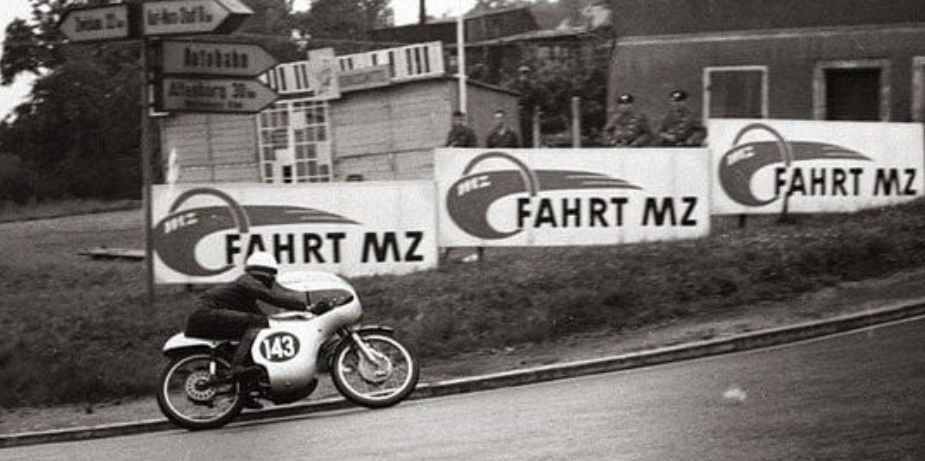
past the 200hp/litre milestone when, in 1961, his 125cc disc-valve racer topped 25hp. His basic engine formula, slavishly copied, has been used for every two-stroke to win a world championship. Also developed the phenomenal trials machines that carried East German Trophy teams to six ISDT victories in the past seven years. Bob Leppan, of Detroit, became the world’s fastest motor cyclist—in all but the FIM’s eyes—when, timed by American Motorcyclist Association officials, he set a mean speed of 245.67mph for the flying mile at Bonneville in 1966. Designed by Alex Tremulis, his X-1 was powered by two 650cc Triumph engines. Sammy Miller, a top-rank lightweight road-racer in the late 1950s, has virtually dominated the one-day trials world during the 1960s, setting standards which are unlikely to be surpassed for a very long time. Records established include five victories in the Scottish Sis Days Trial, five in the British Experts’ and six in the super-tough Scott Trial; this year notched his 11th consecutive British solo trials title—another record run. Won the European trials championship in 1967-68…mainly responsible for developing the 250cc Bultaco trials machine after switching from the 500cc Ariel at the end of 1965. Miller soon established the supremacy of the lightweight two-fifty two-stroke in one-day trials. Derek Minter, riding a Lancefield Norton, became the first man to break the IOM single-cylinder ton barrier with a lap at 101.05mph in the 1960 Senior. He beat the factory stars with a privately entered Honda four in the 1962 250cc TT; raced a 500cc Gilera four in 1963; for many years he was the master of British short circuits. Phil Read was 21 on the opening day of the decade and the next year won his first major race, the Junior TT, riding a Norton. Brilliant performances won him a place in Geoff Duke’s Gilera team for 1963. The next year he joined Yamaha. Rode for the Japanese factory until 1968, winning four world titles and missing another by the narrowest of margins after a season’s epic dicing with Mike Hailwood. Jim Redman, born in London in 1931, emigrated as a teenager to Southern Rhodesia but returned to race in Europe in 1958. He joined Honda in 1960 and stayed with them to win six world titles, netted 250 and 350cc TT doubles in 1963, 1964 and 1965; also in 1965 became the first to average over 100mpg for the Junior. Awarded the MBE in 1964. Joel Robert, the Belgian firecracker, was at the age of 20 the youngest rider to win a world moto-cross championship—the 250cc title in 1964; repeated the feat in 1968 and 1969. As the first rider to win an international crown, he spearheaded the Czech factory’s present eminence in world sport. Jeff Smith,
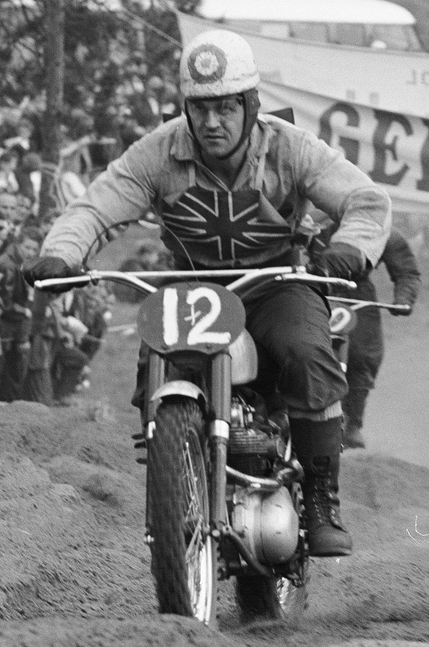
after winning early fame as a trials rider in the 1950s, clinched the world 500cc moto-cross championship just one month before his 30th birthday in 1964. Went on to do the double in 1965—to put BSA and Britain back on top after nearly a decade in the doldrums. Probably the greatest tactician scrambling has ever seen; he has won nine British championships; ridden 13 times for Britain’s Moto-Cross des Nations team; took second place in the European 250cc championship in 1960 on the fore-runner of the current BSA 500cc grand-prix machine. John Surtees created TT history by clinching the first Senior TT hat-trick in 1960. The same year he brought his world-championship score to seven for MV and, at 102.44mph in the Senior, became the first to average over 100mph for a TT race. He was awarded the MBE in 1961…world-champion car driver in 1964. Rold Tibblin is the only man to have won world moto-cross titles in both classes and to have won championships on both two- and four-stroke machines…he used four-stroke Husqvarnas to win the 1962 and 1963 world 500cc championships. He also won Sweden’s epic day-and-night Novemberkasan Trial five times. Chris Vincent won the ACU sidecar road-racing title in 1961 and has been supreme on British short circuits ever since. His skill and dash, coupled to an analytical brain and rare mechanical ability have made him almost impossible to beat in the big sidecar class; outstanding success was winning the Sidecar TT on a 500cc BSA in 1962. Vincent is an all-rounder: won the national grasstrack sidecar title in 1958, races occasionally on speedway; until a few years ago regularly raced solos. Clive Wayne, a 37-year-old systems engineer in missiles, proved his theories when his highly unorthodox, 12ft-long Drag-Waye, ridden by Dave Lecoq, took sprinting’s most glamorous record—the 1,300cc standing quarter-mile—with a mean time of 9.815sec at Elvington, Yorks, in October.
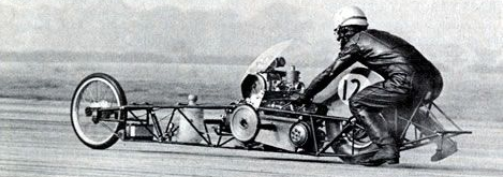
As usual, here’s a selection of contemporary ads…
